
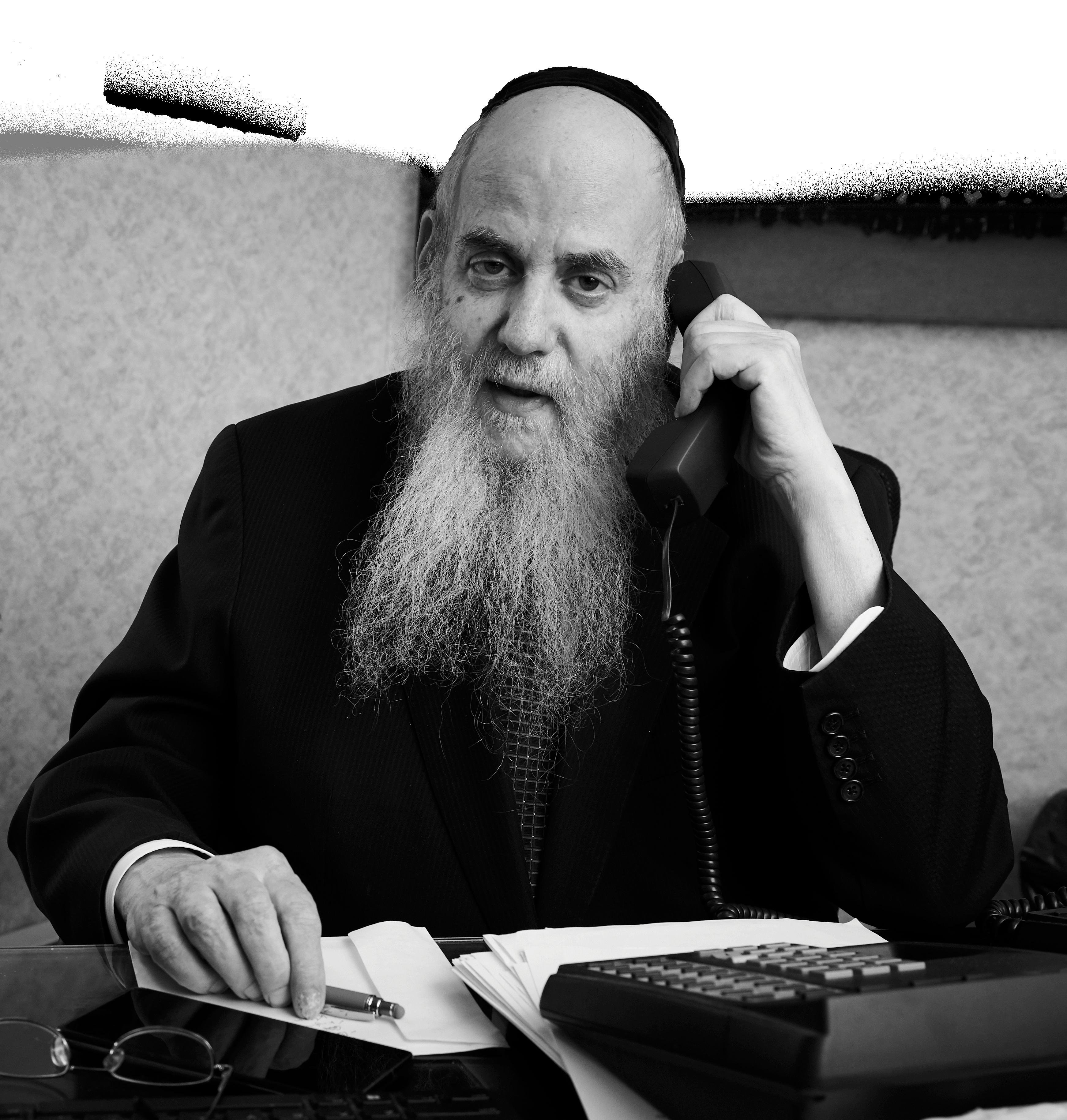
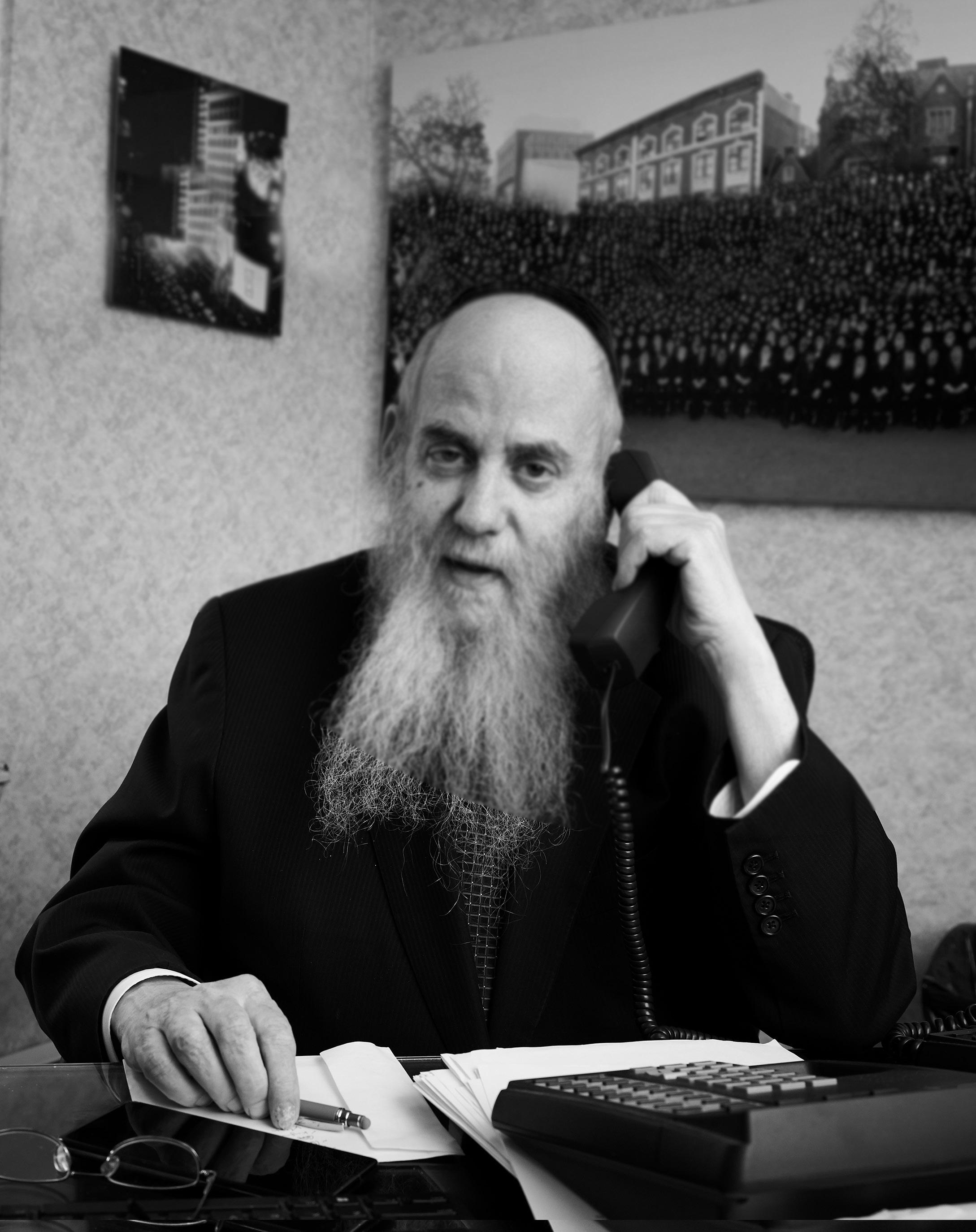
ISSUE 21 SIVAN 5784 / JUNE 2024 PRESORT STD U.S. POSTAGE PAID STARDIRECT 11207 COLLIVE MAGAZINE Brooklyn, NY 11225 The Rebbe’s Ambassador Rabbi Moshe Kotlarsky (5709-5784) Commemorative Issue
Publisher Mica Soffer
Editor
Yehuda Ceitlin
Associate Editor
Mendy Wineberg
Contributing Writers
Marc Ansin
Yaacov Brooks
Chaya Chazan
Tzemach Feller
Avi Winner
Dovid Zaklakowski
Cover Photo
Marko Dashev
ADVERTISING
ads@COLlive.com
718-427-2174 ext. 2
EDITORIAL INQUIRIES OR SUBMISSIONS
Editor@COLlive.com
718-427-2174 ext. 1
COLlive Magazine is published in print and online periodically by the COLlive Media Group Inc. and is distributed across the United States. COLlive does not endorse any products or services reported about or advertised in COLlive Magazine unless specifically noted. The acceptance of advertising in COLlive Magazine does not constitute a recommendation, approval, or other representation of the quality of products or services or the credibility of any claims made by advertisers, including, but not limited to, the kashrus or advertised food products. The use of any products or services advertised in COLlive Magazine is solely at the user’s risk and COLlive accepts no responsibility or liability in connection therewith.
FROM THE PUBLISHER
By Mica Soffer
Back in the early days of our marriage, my husband Yossi and I had a graphic design company, and many of our clients were Shluchim. One of our earliest clients was Chabad of the Five Towns, NY, then a fledgling center run by Rabbi Zalman and Chani Wolowik.
While attending the simchas and events at Chabad of the Five Towns, we always met Chani’s parents, Rabbi Moshe and Rivka Kotlarsky. Despite Rabbi Kotlarsky’s stature, he and his wife attended the Chabad events, proudly supporting and enjoying the incredible work of their children.
Whenever we met him, Rabbi Kotlarsky was so gracious, asking how we were doing and showing a genuine interest in us, just a regular young couple, like hundreds of others trying to make our way through life in the Crown Heights neighborhood.
Years later, after the founding of the community news website COLlive. com, when we began reporting on the activities of Merkos 302, Chabad on Campus, and many other organizations and activities under Rabbi Kotlarsky’s direction, I began to realize what a giant of a man he truly was.
With our website reporting on Chabad and Jewish news around the clock, I don’t have any illusions about how much of our writings are actually read. Who has the time or attention span to read all 20+ articles posted daily on COLlive.com?
But the gift of writing and editing is that you are privy to lots of information and even inspiration. I’ve become fully cognizant of the work that Rabbi Kotlarsky has led, with the assistance of his devoted son Mendy and their staff, and I have been in awe.
It’s truly mind-boggling how much they’ve accomplished. And it continues to grow every year with new projects and activities. To watch the CTeen event in Times Square, see the marriage of a Jewish couple who met through Chabad, or see a campus student light Shabbos candles, is to see the love of the Rebbe for every Jew clearly. And Rabbi Kotlarsky was the one who facilitated it all, while representing the drive of every Chossid who lives to fulfill the Rebbe’s mission to bring light to the world and hasten the coming of Moshiach.
FIND US ON SOCIAL MEDIA
For now, the loss feels so great, but I know that the work will continue. I just ask that next time you see an article about teens who are proud to be Jewish, a new project for learning alef beis, or bochurim heading out on Merkos Shlichus to some far off corner of the world, stop and read the article. You will read about the Rebbe’s work in action.
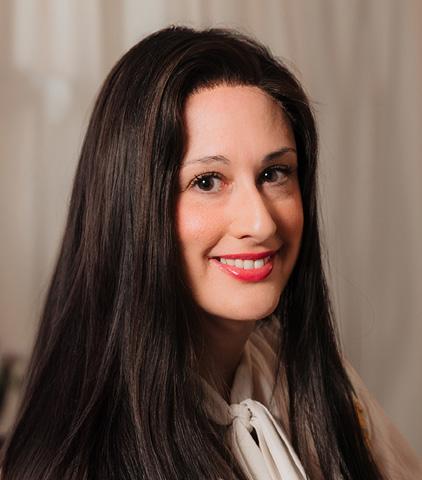
@COLlive @COLliveOfficial 718.679.9450

Posting in Amazement
Uncle Moishy From the
Shaping His Path Molding a young boy
The Last Interview A candid conversation on life
Good Humored Reflections of a photographer
Continuing a Legacy The suite of organizations
Brothers in Shlichus The Rohr family story
Bronx to Bluegrass Stories shared by Shluchim
Thousands Farewell Gallery of the large levaya
“Make Here Eretz Yisroel” Remarks to Land and Spirit
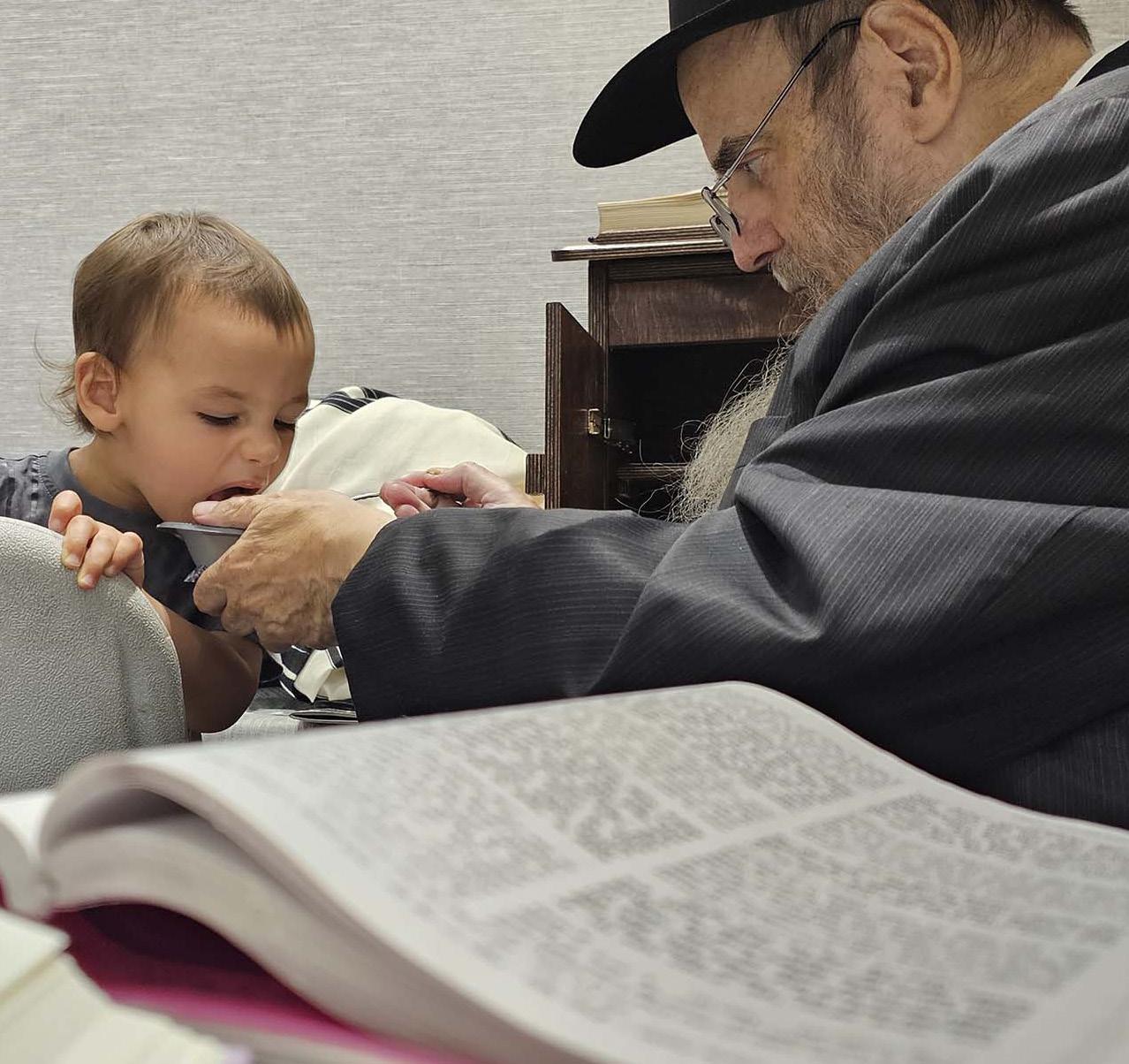
Shlichus on a Global Scale Marriage, home and far reach
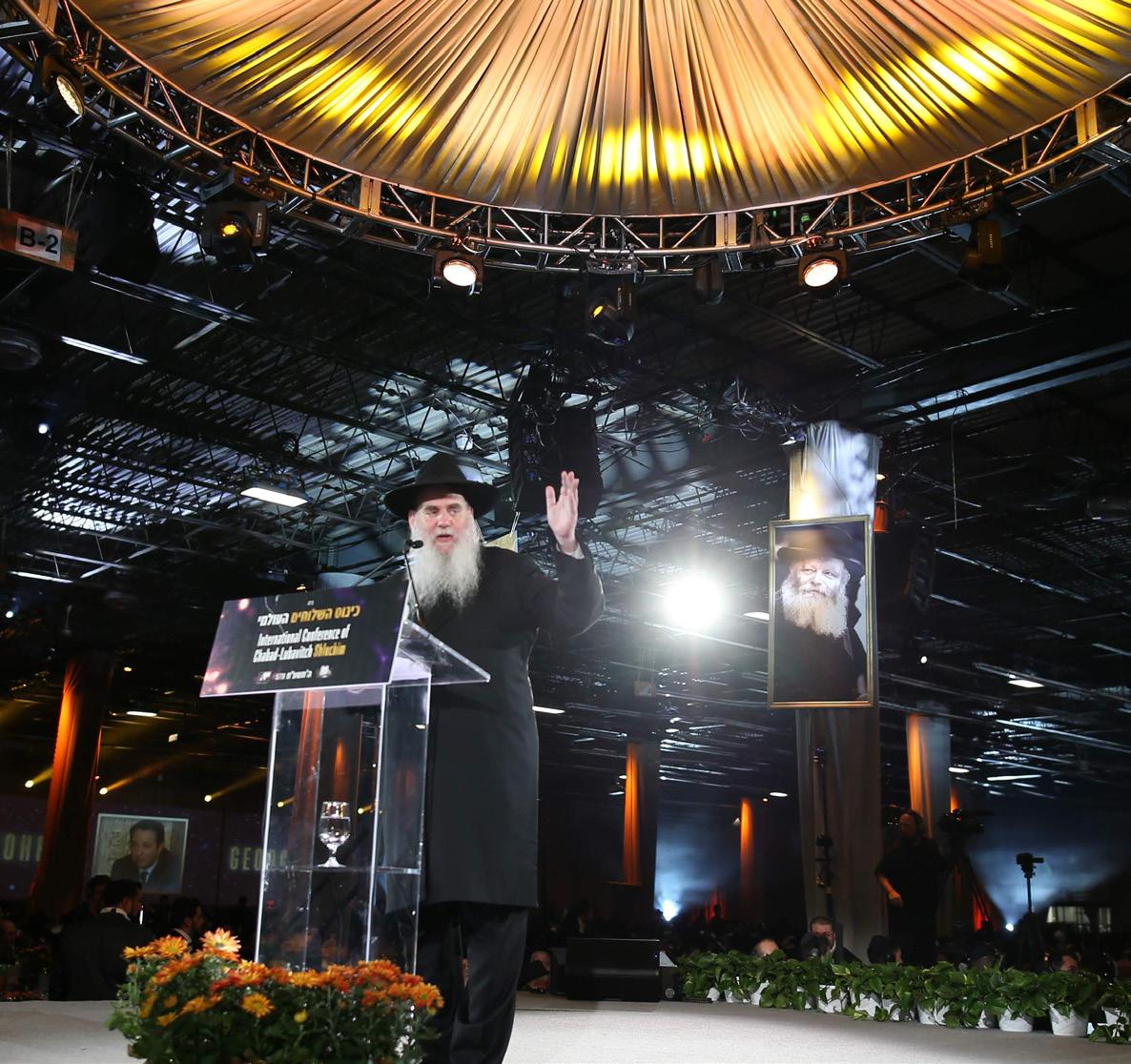
“Round of Applause” Growth of Kinus Hashluchim
This Comemmorative Issue was partially sponsored RaiseThon.
2 4 8 20 30 38 46 54 58 64 68
From the Publisher
Editor
Blank Check Memories shared
26 34 14 הכרבה תא 'ה הוצ ןאכ .ד"סב ISSUE 21 SIVAN 5784 JUNE 2024
A
on Zoom
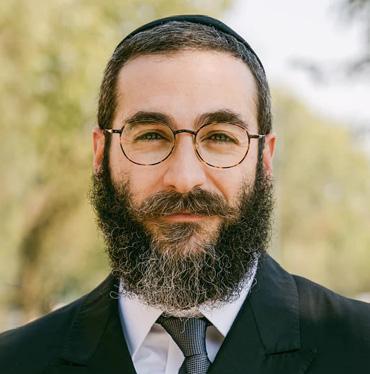
Uncle Moishy
By Rabbi Yehuda Ceitlin
As a child, I grew up hearing the rhyming tunes of children’s singer Uncle Moishy and the Mitzvah Men. His songs told of his travels to exotic places and encounters with fascinating characters. They portrayed Torah and Mitzvos in a positive and joyous light with an approach that even a child could learn and want to follow.
You might imagine my bewilderment when, after my engagement and marriage, I kept hearing “Uncle Moishy” mentioned at the dinner table and in family discussions. They’d mention Uncle Moishy going to remote locations (not “Torah Island”), meeting notable people (not “Big Gedalia Goomber”), and talking to people about Mitzvos.
I soon learned that my wife and her siblings were referring to their uncle, Rabbi Moshe Kotlarsky, the eldest brother of my mother-in-law, Mrs. Chanie Shemtov. It was an amusing moment of discovery because up until then, I knew this larger-thanlife Chossid by other names.
As a young writer for the Kfar Chabad Magazine, I knew him as “Rabbi Kotlarsky.” He was the Rebbe’s man who was seen everywhere and traveled anywhere. He was as likely to be present at the Rebbe’s farbrengens at 770 Eastern Parkway as he was to be visiting a school in Zhytomyr, Ukraine, opening a Mikvah in Seoul, South Korea, or attending a wedding in Crown Heights.
One Tishrei, he was kind enough to host me at his house. I was
astonished to learn how many others hung out there for sleeping, meals, or just a chat. Overshadowing the aging condition of their house was the almost unbelievable amount of food served by his wife, Rivka. Most noteworthy was his sociability to every guest at the table. The fading wallpaper was made invisible by the glow that emanated from the hearts of Rabbi and Rivka Kotlarsky.
After moving on Shlichus to Tucson, Arizona, I learned to refer to him by another endearing term: Reb Moshe. Shluchim in the Western Region of the United States, many operating in smaller Jewish communities, knew him by this name, and saw him as a friend and advocate. He was the person who always took your call (even if you had to call back one or two more times to conduct the full conversation).
He taught me (and I’m sure to many others) that when writing a ‘pan’ to the Rebbe, the personal letter should not begin with a list of requests for blessings and wishes. Instead, he said, start with writing ‘hineni levaser tov’ - I hereby present good news - and report about positive things to be grateful for and celebrate.
More than once, it has led me to pause my writing to come up with more ‘good things’ to report aboutwhether in our family or community. When doing that, things are put into perspective before even placing the letter at the Rebbe’s Ohel. (It also encourages creating ‘good things’ beforehand to have what to report about).
Reb Moshe was undoubtedly a person who had brought many reports of ‘besuros tovos’ to the Rebbe over his years of dedicated work and travel. He helped resolve community conflicts, provided a listening ear to people in need, and always had a humorous story and even a joke to lighten the mood. And all that was evident in the family who knew him as Uncle Moishy. Despite his weighty responsibilities, he was a caring father, grandfather, brother, and uncle. At home, he has been observed feeding a grandchild or chatting with a niece after concluding a lengthy conference call. He made time for family and went to great lengths not to miss a family celebration.
Some of my wife’s best memories are spending Pesach with him and his family (which included the mandatory Chol Hamoed trips). Over the last few years, as he was battling a terrible illness, all of us saw some of his best qualities brought to the forefront: His strong faith, dedication, and determination. Even while going into and out of hospitals, he remained connected and involved - ever dedicated to the Rebbe’s mission.
Rabbi Kotlarsky, Reb Moshe, and Uncle Moishy may have left this world. Yet, he leaves behind a world filled with Mitzvah Men (and women) motivated to do all they can to spread Yiddishkeit and Chassidus and bring Moshiach now.
- Rabbi Yehuda Ceitlin, Editor of COLlive.com and COLlive Magazine, is the outreach director of Chabad Tucson, and Associate Rabbi of Cong. Young Israel of Tucson, Arizona. He coordinates the annual Yarchei Kallah gathering of Chabad Rabbonim and Roshei Yeshiva.
4 COLLIVE MAGAZINE - RABBI KOTLARSKY TRIBUTE
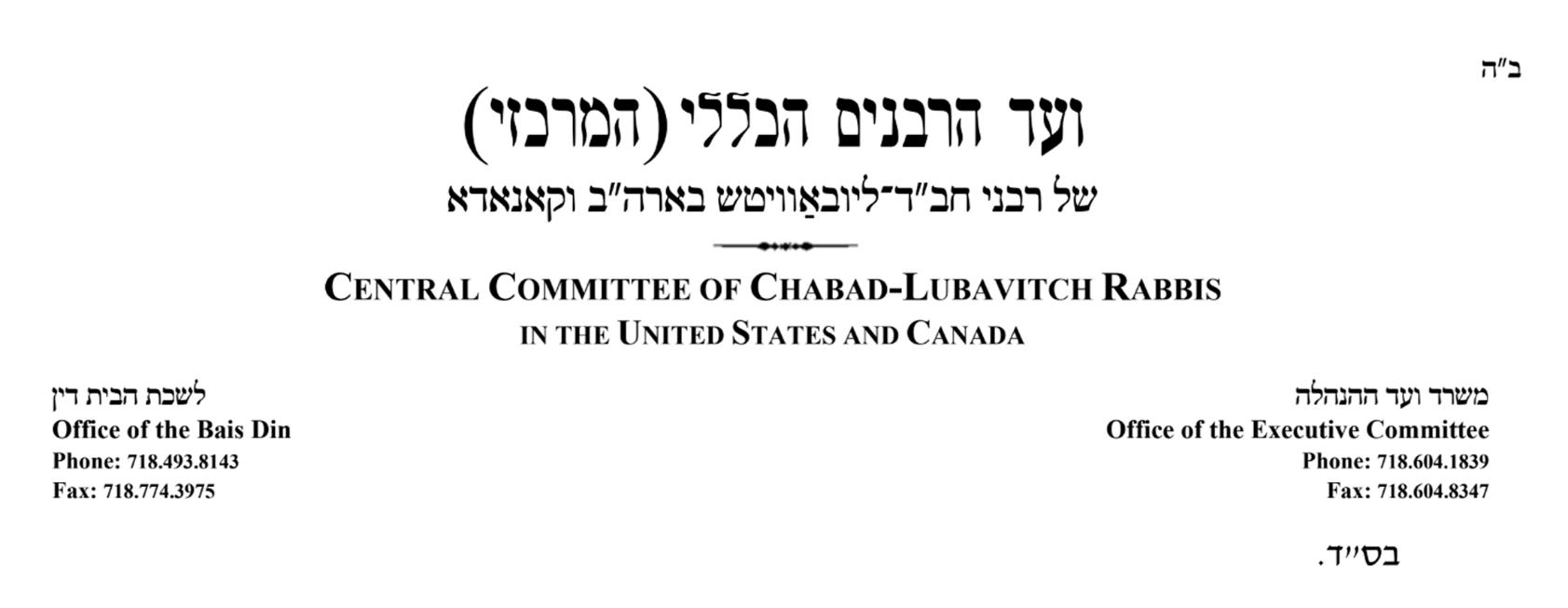
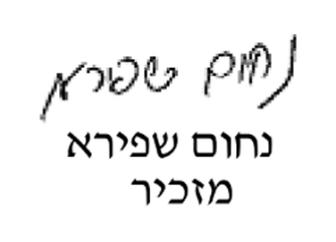
לארשיב לפנ לודגו רש אריקיו אבר ארבג יאה לש ותריטפ תא ונא םיכבמ שטיוואבויל תיב לכ םע דחי לבת יווצק לכב םיחולשה ןעמל ץרמנה ןקסעה ךוניח ינינעל זכרמ ר"וי ןגס ברה יקסרלטוק הדוהי השמ ה"ע הדיבאה דאמ הלודג אבילד אקמועמ ונימוחינ םיעיבמ ונאו תדע לכל םיחולשה ,ללכב לו הממורה ותחפשמ טרפב םייחה רורצב הרורצ ותמשנ אהת לעופה דעו

ללוכ ד"בח תקדצל נ"העבמר ק"הראב • תואישנב דוה ק"כ ר"ומדא אישנ ונרוד ודוסיימ לש שדק םישדקה "כק ר"ומדא ןקזה לעב אינתה ע"ושהו א"עיז דמע תחת םתואישנ שדוקב לש לכ וניתובר וניאישנ 'קה םהיתורודל יכב דפסמו םיבאוכ ונא דע הכודכד לש שפנ, תא ותריטפ לש דיסחה לוגדה ברו םילעפה, ר"ויס זכרמה יניינעל ךוניח, להינש ךשמב םינש םימזימ םייתוחילש םיבר, עיקשה תא לכ וצרמ ןעמל ונויגל לש ,ךלמ היה אמגוד היח תמישב בל המצועו םיחולשל, דידי ןמאנ קיתוו ונלעפמל ללוכ' 'ד"בח - םדוסיימ םתואישנבו לש וניתובר ונאישנ ע"נ, לבקמ לכ םדא רבסב םינפ תופי תוריאמו, ובילש ותיבו םיחותפ םיברל ח"הרה ברה השמ אדוהי יקסרלטוק ה"ע םחנמ ןויצ הנובו םילשורי םחני תא ינב החפשמה, תינברה 'בגה הקבר יחת ,' םידליה 'יש לכו ינב החפשמה, םיילפכב, התעמו דעו םלוע אל ועדי דוע רעצ ןוגיו, ךאו בוט דסחו הארנה הלגנהו ויהי תנמ םקלח דימת לכ םימיה ברה םולש יולה ןאמכוד םשב תלהנה תווצו ידבוע ללוכ ד"בח
לבא דחי ישע ךל רעצב לודג ןוגיבו בר םיכבמ ונא תא ותריטפ לש דידי לוגד ,הלענו רשא תוריסמב ןיא ץק ךשמב תורשע םינשב רסמתה ויתולועפב תוכורבה ןעמל ,םיחולשה ןויגל לש ,ךלמ לכב יווצק לבת הכזו םמורל שדקלו םש םימש הליהתל ,תראפתלו וחוכב ותכרבבו לש ק"כ ר"ומדא אישנ ,ונרוד דמעו שארב תרוש תודסומ לש תולועפ תוריבכ תצפהל תודהיה ,תונייעמהו להינ החלצהב דיבו המר תא סוניכ םיחולשה ימלועה חצינו לע יסוניכ םיחולשה םיירוזאה הביחב תורסמתהו תדחוימ עייס ךמתו תדובעל תחוורו םיחולשה היסורב לכבו תונידמ רבח םימעה ברה יסחה 'ר ד אדוהי-השמ יקסראלטאק ה"ע ןגס ר"וי זכרמה ינינעל ךוניח וננהו םירגשמ ונימוחנת םייבבלה ותחפשמל הרקיה הדבכנהו – ותגוז תינברה הבושחה תרמ הקבר יחתש' ונב ח"הרה 'ר םחנמ לדנעמ יחיש' לכו ינב החפשמה ויחיש םחנמ ןויצ הנובו םילשורי םמחני ,םיילפכב התעמו דעו םלוע ךא בוט דסחו הארנה הלגנהו ויהי תנמ םקלח דימת ךשמהב ותדובע הריבכה חותיפב תבחרהו לעפמ תוחילשה לכב םלועה ולוכ ואצמי קוזיח םחונו ידע הכזנ הרהמב שממ תוארל םויקב דועיה וציקה וננרו ינכוש רפע אוהו םכותב הלואגב תיתימאה המילשהו ברה לרעב ראזאל חילשה ברהו ישארה היסורל
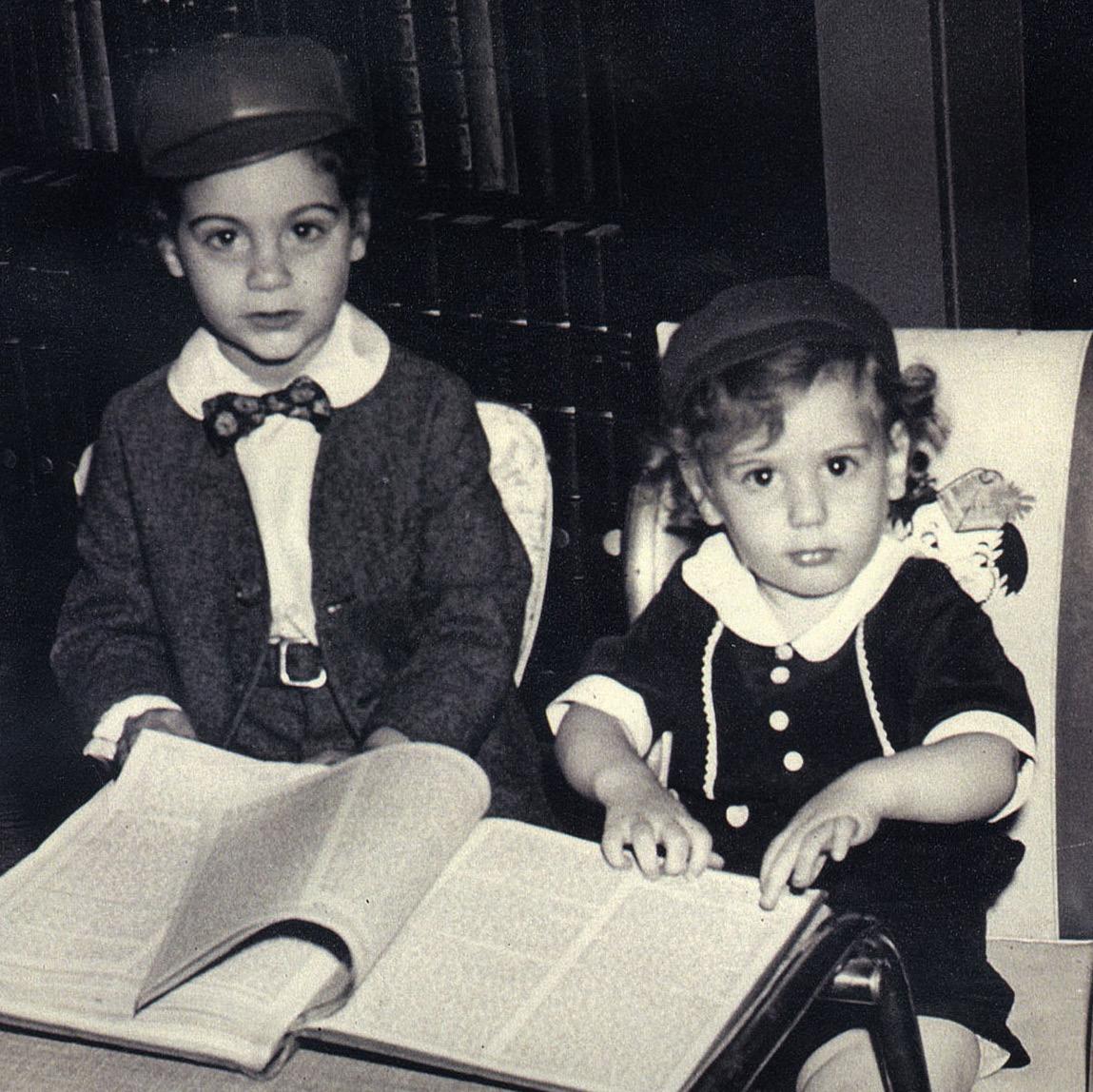
SHAPING HIS PATH
The Rebbe’s influence that molded a young boy named Moshe Kotlarsky
By Dovid Zaklikowski
Photos: Lubavitch Archives
His eyes flickered, and he became animated. “My life circled 770,” Rabbi Moshe Kotlarsky said about his childhood. It would be our third “conversation” for “The Oracle: Portraits of Rebbe Mendel Schneerson.“ The due date for all the essays for the book was approaching, and the publisher was getting annoyed. But Rabbi Kotlarksy did not like being interviewed about his personal life.
It is not clear what was the source of his angst with the word interview, but already in 2008, when writing his father’s obituary, he told me, “It is not respectful that my father was interviewed.” His son and my friend, Rabbi Mendy, told me over and over to forget about interviews and just talk to him about the projects he was working on. It worked, and most of those interviews were printed in The Oracle, but selections from those “conversations” and others I had with him over the years were not.
Born in 1949, the young Moshe Kotlarsky had no family in the neighborhood growing up.
In the aftermath of the Holocaust, his father Rabbi Hirschel Kotlarsky was the sole survivor of his family. Following a difficult journey that led him through Lithuania, Russia, Japan, China, and Canada, he arrived in New York. Under the Rebbe Rayatz’s direction, Rabbi Kotlarsky worked as the executive assistant of Rabbi Shemaryahu Gurary (the Rashag), the chairman of the United Lubavitcher Yeshivoth and son-in-law of the Rebbe Rayatz. In 1946, he married Goldie Shimelman.
On Sukkos of 1947, his son Yaakov Dovid was born. For the Holocaust survivor with a harrowing history, the birth of a child brought tremendous comfort.
When the child’s 13th birthday arrived, Rabbi Kotlarsky was delighted, as it would be the first opportunity for him to hold a grand Bar Mitzvah celebrating Jewish continuity, an obvious response to those who attempted to obliterate the Jewish nation. The Kotlarskys planned to hold a large party a week after the birthday so that they could celebrate in a hall rather than outside in the sukkah.
When Rabbi Kotlarsky informed the Rebbe about their plans, the Rebbe inquired why they were delaying the celebration. Rabbi Kotlarsky explained that they’d never manage
to make a grand celebration on Sukkot due to the limited space in the Sukkah.
The Rebbe said, “You could make it in the Sukkah, and if needed, make the Sukkah larger.”
When Rabbi Kotlarsky observed that they couldn’t invite their entire guest list, the Rebbe responded, “So it will be a smaller crowd.”
It was clear that the Rebbe believed it was important for the celebration to be observed on the birthday itself. The event was celebrated at their home, and while the crowd was
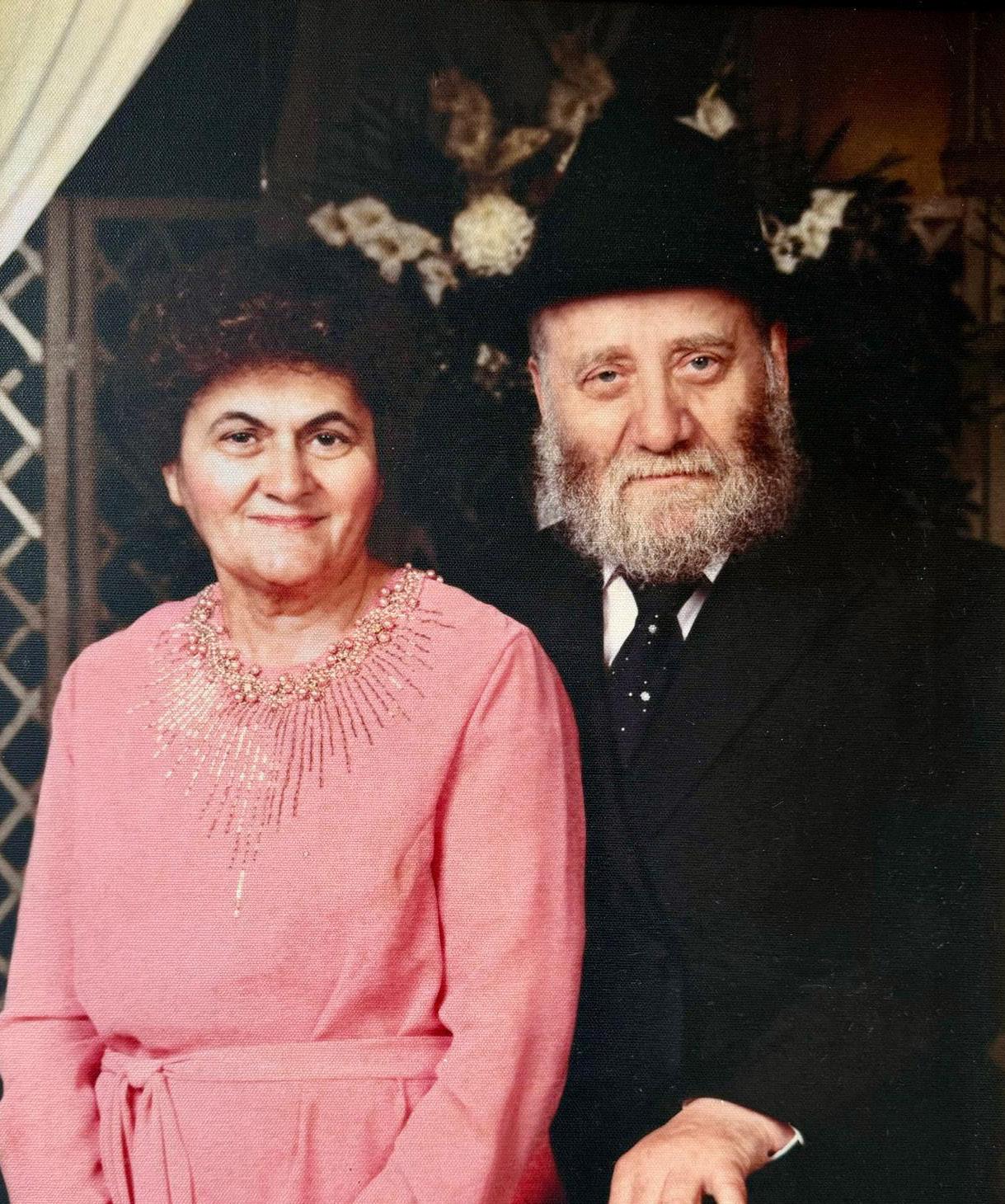
COLLIVE MAGAZINE - RABBI KOTLARSKY TRIBUTE 9
Rabbi Tzvi Yosef ‘Hirschel‘ and Goldie Kotlarsky
On the previous page, Rabbi Moshe Kotlarsky with his brother older Yaakov Dovid
small, the event was joyous.
When the 13th birthday of their younger son Moshe arrived, the Rebbe advised Rabbi Kotlarsky based on a Talmudic passage: One should not differentiate between children in a family (Shabbos 10b).
The Rebbe said, “As the celebration for your older son was in your home, the celebration of your younger son should also be at home.”
Growing up, Rabbi Moshe Kotlarsky viewed his father’s classmates from Poland - such as Rabbi Yosef Wineberg and Rabbi Yosef Menachem Mendel Tenenbaum - as his uncles. Their children were his cousins. “The Rebbe was like a good grandfather to me,” he said, and in many ways shaped his future life. “The Rebbe cared for the fifteen children that were in Crown Heights.”
Like many other children in the community, 770 was their playground. Rabbi Moshe Kotlarsky would speak about the various characters who davened there. “On Rosh Hashana, the Rebbe had a table,” he recalled, “the Rashag and Dr. Ness sat together at a table. Then there were three tables: One for the clean-shaven, one for the ‘modeh bemiktzas’ and one for the Chassidishe Yidden.”
With a keen eye for detail and a knack for cleverly getting his way, at the age of six, he noticed that every time someone did something for the Rebbe, he would thank them. “The Rebbe was such a gentleman,” he said, and began to look for ways to collect good wishes from the Rebbe.
When the other children saw that the young Moshe was always vying to hold the door open, they began to do the same. But always a step
ahead, “I deduced that the best time to hold it open was to hold it open on Motzoei Shabbos when Kiddush Levanah was said,” he related. That’s when he would get from the Rebbe, “thanks, gut voch and gutten chodesh.”
Wanting to protect his privilege, he stood by the door from late Shabbos afternoon. Seeing this, on the way back one Shabbos, the Rebbe stopped and asked: “Did you say Kiddush Levanah, or were you busy holding the door?” He did not respond, and the Rebbe told him to take a siddur and say it. “Then come knock on my door,” the Rebbe instructed.
Upon doing so, the Rebbe gave him the brachos. Decades later, Rabbi Kotlarsky discussed the psychology behind the method and how he implemented that in his interactions as an employer and leading figure. “He could have told me, ‘You have nothing better to do than hold the door for me?’ To the Rebbe, it was all about positive reinforcement - make the blessing and then you will get the reward.”
Good Chutzpah
After finishing his studies at the United Lubavitch Yeshivoth, Rabbi Kotlarsky went to the Yeshiva Tomchei Tmimim Lubavitch in Montreal, Canada. It was an institution his father helped build as one of the 9 Shluchim the Rebbe Rayatz sent there, and it was where his older brother Yankel was learning. At yeshiva, he often got in trouble for his effrontery, now he found himself using it for good things, particularly for the Rebbe’s mitzvah campaigns.
One day, in 1969, the Yiddish comedian Shimon Dzigan was
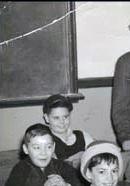
performing in Montreal. Rabbi Kotlarsky decided to get him to put on Tefillin. When he arrived at the theater, there was no security and they let him go to his dressing room. After knocking, the comedian opened and asked what he wanted, adding, “I am not religious, but with my wealth, I can support a lot of religious people.”
The Yeshiva student retorted, “I am religious; you can support me.”
“Did you come here to be chutzpah’dik?” the comedian asked.
The young Rabbi Kotlarsky said he was there to put Tefillin on him. “Let’s do it quick,” the comedian said, noting that the show would soon start. They put the Tefillin on, and as he was saying the Shema, he began to sob.
“No one knows what is in my heart,” he said, “I am one of the only ones in my family who survived the Holocaust. You do not know what
10 COLLIVE MAGAZINE - RABBI KOTLARSKY TRIBUTE

this means that you have come to put on tefillin with me.”
The entire ordeal took a while, and the banging on his door began. The comedian removed the Tefillin and said with a smile, “I need to go make a living.”
The makeup on his face ran while he was crying, and his makeup artist had already left. When he arrived on stage, he explained to the crowd: “I was just hijacked by two Lubavitchers, and they asked me to put on Tefillin. I could not refuse them. When you say the Shema, you shed a tear, and when you shed a tear, it shows. Give an applause to the Lubavitchers.”
The organizers were not too happy when they realized what had happened, and they told them that they needed to leave. Rabbi Kotlarsky wrote a report to the
Rebbe of one and a half lines: “Today, we met with Shimon Dzigan. We put on tefillin with him. He said Shema, and he was moved to tears.”
A few months later, Rabbi Kotlarsky was in New York and Rabbi Chaim Mordechai Aizik Hodakov, the Rebbe’s chief aide, approached him, telling him that the Rebbe sent something for him. It was a newspaper about Dzigan’s trip to North America.
I searched for the news clipping. I found that Rabbi Kotlarsky was already using the psychology that the Rebbe taught him at age six. He said that he would include Chassidic nigunim in his show, and at one show two Lubavitcher Yeshiva students asked him to put on tefillin, “They gave me so many blessings that on stage I do not make jest of Chassidim and religious life.”
That was not the only time that the Rebbe didn’t forget about the activities of the yeshiva student. Another time was when he made buttons for those who put on Tefillin. When they made one in Israel, the Rebbe asked to give one to him as well.
Trying to understand his feelings at the time about the attention, Rabbi Kotlarsky went back to the grandfatherly care the Rebbe gave them when he was young and continued when he grew older.
“It was something I expected,” he said, “The Rebbe cared for us. We were the young generation; we were students, and it was a father and son relationship for the first ten years. It’s hard to explain it any other way.”
COLLIVE MAGAZINE - RABBI KOTLARSKY TRIBUTE 11
Rabbi Tzvi Yosef Kotlarsky, who was known by his Yiddish name Hirschel, stands with a class of his at the Lubavitch Yeshiva in Montreal in the early 1940s.

< >
With heavy hearts we join the family of Anash, Shluchim and the Lubavitch community the world over in mourning the passing of rabbi moshe kotlarsky
Rabbi Levi Garelik, Rabbi Moshe Pinson, And the members of Bais Shmuel—chabad
ד"סב ד"בחב
ל"ז יקסראלטאק הדוהי השמ ברה
דבכ לבא םילעפ בר ת"הרה ח"הרה
,
” — B A I S S H M U E L – C H A B A D
יכ לודג ם ונרביש ונא רדוק ןוגיבו בר רעצב תא םיכבמ לש ותריטפ בוהאו לוגד גיהנמ ,ח"הרה ברה הדוהי השמ ה"ע לטאק יקסרא ליהקל יתימא רבח ,ורפינד ריעב ונת ,ךלמה ריע הב ריעה רג ,ונרוד אישנ יברה היה יקסרלטוק ברה .םינשה לכ ךשמב תוריסמבו תונמאנב התוא הוויל רשא הרותה תא ביהאהל הכזו ,תירוביצ היישעו הרות דומיל ,דסח לש תפומ תומד םיבר תובבל לע תודהיה תאו לעפו ,םלועה לכב םיחולשה לכל ותבהאהו הלודגה ותרזעב עודי היה יקסרלטוק ברה םהב ךומתל תואל אלל ,לארשי ללכלו םיחולשה לכל דואמ רסח היהי אוה .םקזחלו דעל ונבלב קוקח היהי הכרבל ונורכזו םייחה רורצב הרורצ ותמשנ אהת יקצנימק לאומש ברה הניארקוא ,ורפינד םשב יחולש יברה ריעב ךלמה ברה המלש לגס ברה ריאמ רלבמטס ברה ריאמ ןב םייח רעב רלבמטס ברה םדא יקסנלימס ברה רואינש ןמלז סאפרעטופ ברה םחנמ לדנעמ ןמדלפ ברה קחצי םואבנשריק ברה ןבואר יקצנימק ברה ןמלז ׳ץיבוניבר ברה םייח ןיקאידור ברה אביקע יקסבונמור ברה ןמלז הלוקיש ברה םוי בוט יקסניטופוש ברה המלש ׳ץיבקשירט ברה לדנעמ יקסרובי ברה דוד ׳ץיבודוי ברה ןתנ ברזל ברה לאומש ןמרביל ברה לאומש ץישביל ברה רדנעס בודפוטסיל ברה השמ דרוגנטסיל ברה ןבואר ןמלימ ברה קחצי בצלמ ברה ןבואר ןילוגרמ ברה םחנמ לדנעמ יקסבונירמ ברה השמ ןמיונ ברה םולש ןושחנ ברה יול ךוברבא ברה בקעי סיילא ברה יול ןמסלגנא ברה רהז י׳צדאסא ברה יול ןיקשויטרא ברה גילז זערב ברה לארשי ץיברוג ברה הירא בייל יקסניסייג ברה יסוי קילג ברה בקעי ןמפרוד ברה השמ רבוו ברה דוד יקסבוקסוו ברה והילא רפח
A SHLICHUS ON A GLOBAL SCALE
Rabbi Moshe and Rivka Kotlarsky’s marriage, home and far reach
By Mendy Wineberg & Dovid Zaklikowski
When Rabbi Moshe Kotlarsky and Rivka Kazen got married, it was clear that they would go on Shlichus in some form. Rivka had grown up on Shlichus in Cleveland and was an integral part of the self-sacrifice of her parents, Rabbi Zalman and Shula Kazen, to spread Judaism.
When Rabbi Kotlarsky was given a copy of the book “The Queen of Cleveland: A Life of Self-Sacrifice and Courage” about his mother-in-law, he commented that he had to read it to see if it was true. “But one thing was for sure,” he noted, “she raised an amazing daughter.”
The couple settled in the Crown Heights section of Brooklyn, where they ultimately raised nine children. Their home was a Chabad House in Crown Heights, open to guests, many who came for meals, but also many who slept there.
“We had a bedroom but rarely slept in it,” said their oldest daughter Mrs. Chanie Wolowik, Chabad Shlucha
in the Five Towns, New York. “The guests got our rooms, and we camped out in the basement on mattresses.”
Her parents taught her to give, and her parents “always made us feel lucky to be involved in such meaningful work. The Yiddishkeit I knew wasn’t about restrictions but about privilege and joy and connection,” she said.
Chanie’s husband, Rabbi Zalman Wolowik, remembers how once on a busy Sukkos, the meals were taking place in shifts of 50-70 people eating their seudah in the sukkah. A young bochur, who had no idea whose home he had been welcomed into, tapped Rabbi Kotlarsky on the shoulder just as he was sitting down to the Yom Tov meal. “Excuse me, you’re in my seat,” the bochur said in Hebrew. Without a word, Rabbi Kotlarsky got up and gave up the seat.
One regular guest at their home was Rabbi Moshe Weiss, son of the legendary philanthropist R’ Berel
Weiss and today the Shliach in Sherman Oaks, California. “When I came to yeshiva from California,” he recalled, “he took me out to a restaurant and gave me extra attention to make me feel at home.” Despite it being packed when it came to Yom Yov, the Kotlarsky home was always open for him to stay there as well.
When it came to marriage, Rabbi Kotlarsky was involved in arranging his shidduch. Upon the engagement of Moshe Weiss, his father handed over ‘shadchanus gelt’ as payment, but Rabbi Kotlarsky tore up the check. R’ Berel Weiss was shocked. “I want you to know that there is someone who does things for you not for any financial gain,” Rabbi Kotlarsky explained.
The Memphis Lawyer
Shortly after his own marriage, Rabbi Kotlarsky began working for Merkos L’inyonei Chinuch, one of the 3
14 COLLIVE MAGAZINE - RABBI KOTLARSKY TRIBUTE

Rabbi and Mrs. Kotlarsky (center) with the extended Kazen family.
central organizations of the ChabadLubavitch movement operating under the direction of the Rebbe and his chief of staff, Rabbi Chaim Mordechai Hodakov.
A dedicated Chassid, master networker and skilled fundraiser, Rabbi Kotlarsky was sent to travel to outlying Jewish communities in 1968. He would identify their Jewish needs and work with local community leaders and members to plan future Chabad centers.
While most of what Rabbi Kotlarsky did he spoke little about, one person did share his story from those early days.
In 1975, Rabbi Kotlarsky was seeking assistance in establishing a Chabad House in Memphis, Tennessee. He arrived at the office of attorney Alvin Gordon, a Memphis native.
Mr. Gordon was so enamored with him that he and his family were soon spending Simchas Torah with the Kotlarsky family in Crown Heights.
“Imagine somebody from Mars who landed on Earth,” Gordon recalled, telling of how unprepared he was to be among the thousands gathered at 770. “I [had] never heard or seen anything like that in my life.”
At the end of Yom Tov, after two intense days in the Brooklyn neighborhood, the Rebbe began to give out kos shel brachah. As the Rebbe poured, the gathered sang and danced. Mr. Gordon recalled saying, “The building is rumbling.”
Mr. Gordon and his sons joined the line, and Rabbi Kotlarsky told him that he was soon going to be before the Rebbe. The attorney looked at
him and thought, “Yeah, I am, so what?” But as he moved closer to the Rebbe, he noticed how the line slowed. “You get to that point,” he said, “and you become aware: ‘Hold on, I gotta absorb every second of it.’”
The attorney watched as the Rebbe looked at each person deeply, then poured the wine into the cup held in front of him, and said a word or two. Each one moved on, and the next person stepped up. When it was his turn, he experienced a strong sense that only the Rebbe and he were present: “I could feel him in me down to my toenails.” He felt there was no part of him “that he didn’t know.”
The Rebbe asked him, “What are you doing for the Torah in Memphis?” Gordon thought to himself, ”Who are you talking to? I don’t deal in Torah. I am just a lawyer.” When the Rebbe
COLLIVE MAGAZINE - RABBI KOTLARSKY TRIBUTE 15
With Memphis attorney Alvin Gordon on line to receive kos shel brachah from the Rebbe.
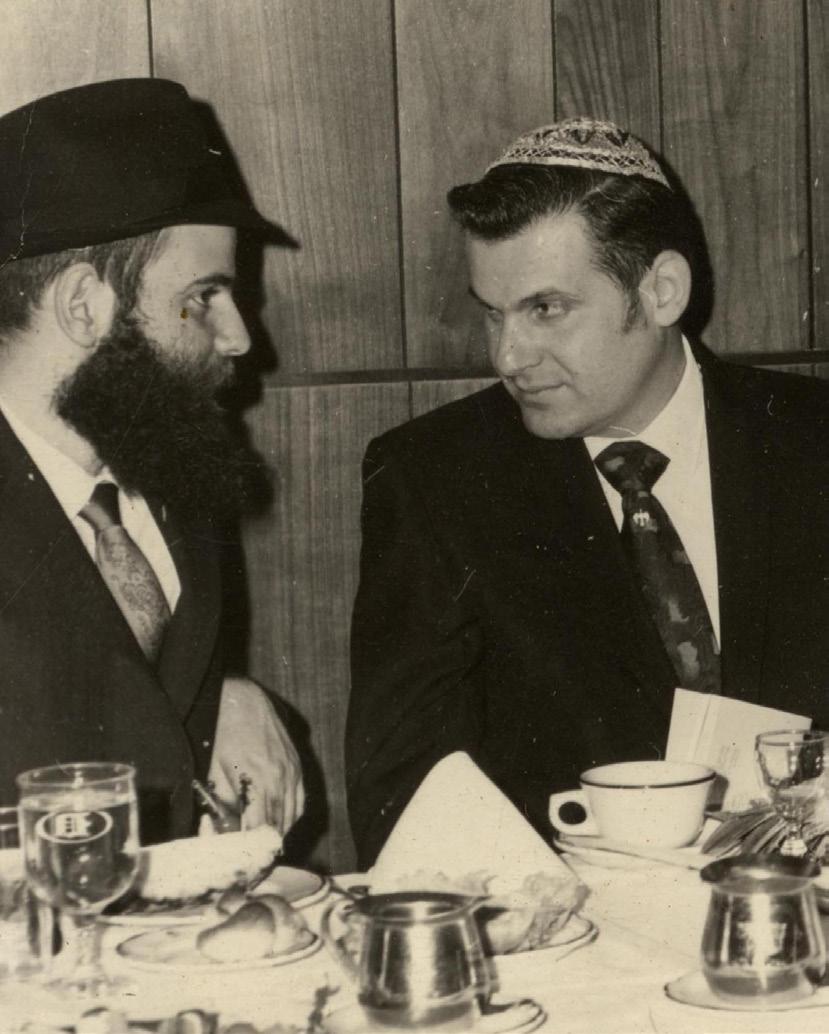
Kotlarsky in conversation with one of his many mekuravim.
realized he was just standing there like “a golem,” in Gordon’s words, the Rebbe said: “You should go back to Memphis and say words of Torah.”
It changed his life, Gordon says. Not only teaching Torah, but his entire family became observant and a deep friendship formed between him and Rabbi Kotlarsky. It was one of thousands of such people whom he had an impact on.
The Kinus Menu
Over the years, Rabbi Kotlarsky became intimately involved in the happenings of many communities. He played a vital role in the revival of the dimmed Jewish infrastructure in the former Soviet Union countries following decades of oppression, as well as other underserved areas.
To achieve this, he enlisted the
financial support of significant tycoons and philanthropists. Among them were Sami Rohr, his son George and Pamela Rohr, Lev and Olga Leviev, Moise Safra, Moris and Lillian Tabacinic, Gennadiy Bogolyubov, David Slager and others.
To the remote areas where a fulltime Chabad presence was not possible, Rabbi Kotlarsky ran the Merkos Shlichus program that would send out yeshiva bochurim, rabbis in training, to help sustain the communities. These young outreach volunteers would visit homes and organize programs over the High Holidays, Pesach and during the summer months.
Most famously, Rabbi Kotlarsky presided over the International Kinus Hashluchim, the annual convention of Chabad Rabbis, and the Kinus Hashluchos of Chabad Rebbetzins.
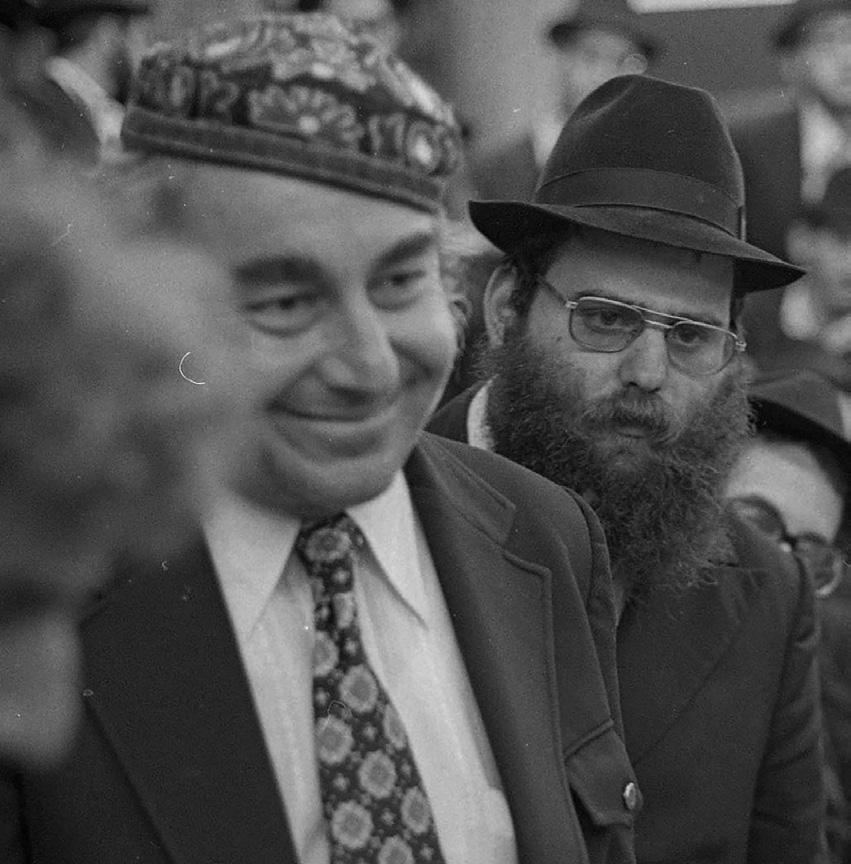
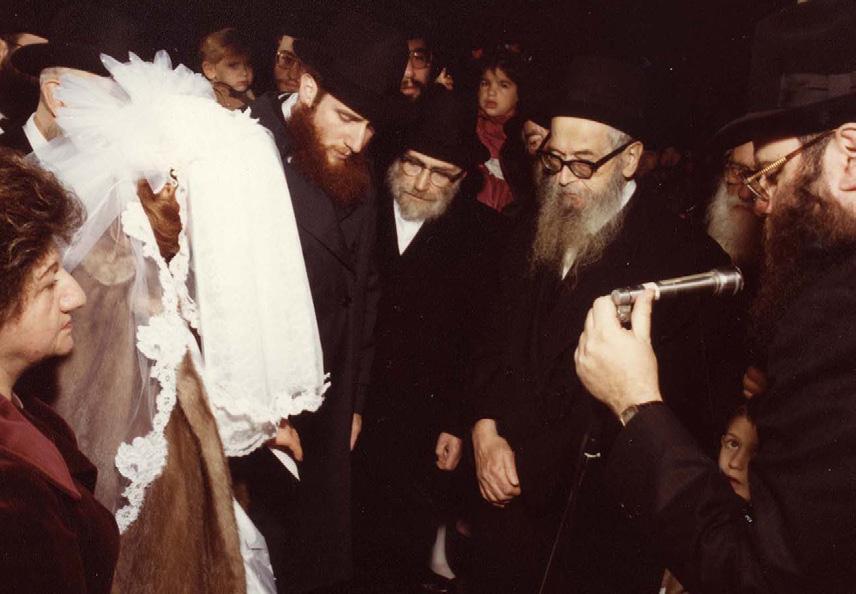
Thousands of Shluchim participate in the convention, drawing strength and inspiration before returning to their communities and responsibilities.
Rabbi Kotlarsky cared deeply about the Kinus and would pore over the menu with the caterer, scrutinizing the menu served for breakfast, lunch and dinner. “I asked him why he takes the time to go over the menu,” his son-in-law Rabbi Wolowik related. “He said, ‘There are Shluchim who live in far-flung corners of the world who don’t have access to kosher catering like you do in the Five Towns... They should have the best meals, the best of everything.”
Under the leadership of Rabbi Kotlarsky and his brother Rabbi Mendel Kotlarsky, the concluding gala banquet of the Kinus became a public showcase of the immense
16 COLLIVE MAGAZINE - RABBI KOTLARSKY TRIBUTE
Rabbi
Rabbi Kotlarsky as he MC at one of his “cousin’s” weddings from the Tennenbaum family.


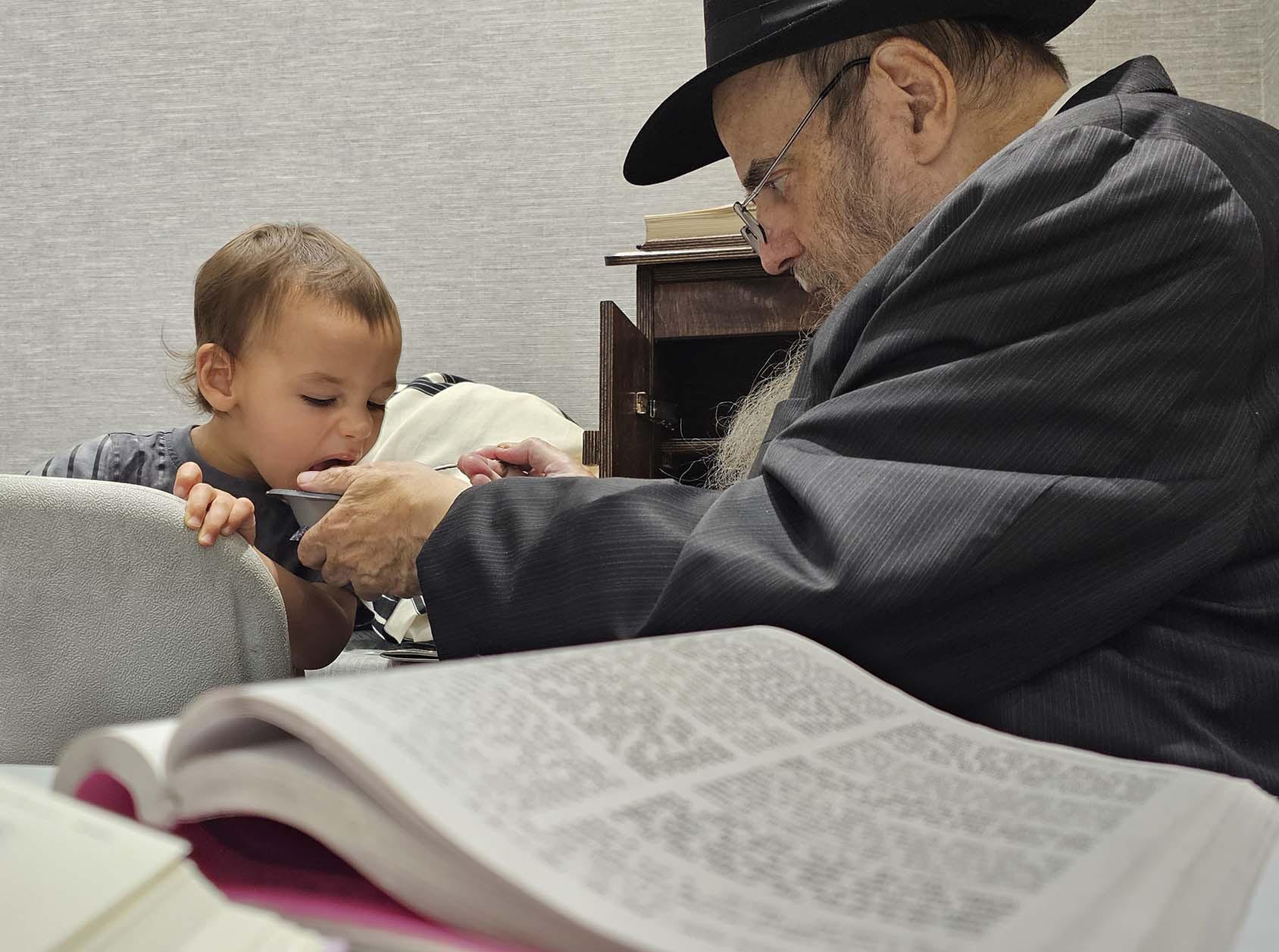
growth of Chabad and the Rebbe’s vision. The New York Times called it the largest sit-down dinner in New York’s history. At the banquet, Rabbi Kotlarsky would lead a “roll call” of the number of shluchim worldwide, which is currently over 6,000.
For years, Rabbi Kotlarsky served as the Rebbe’s globetrotting ambassador. In later years, he served as Vice Chairman of Merkos and chairman of many institutions, such as Chabad on Campus International Foundation, which is active on over 950 campuses worldwide, and the Rohr Jewish Learning Institute (JLI), the largest provider of adult Jewish education.
He was also the founder and chairman of Merkos 302, a division of Merkos that provides resources and franchise organizations to Chabad centers such as CTeens, CKids, Chabad Young Professionals, Chabad
on Call, The Moshiach Office, Chabad Tomorrow, and Mitzvah Society.
In recent years, Rabbi Kotlarsky courageously battled cancer. He passed away on Tuesday, 27 Iyar 5784, at the age of 74, just days shy of his 75th birthday on Rosh Chodesh Sivan.
He is survived by his wife Mrs. Rivka Kotlarsky – Crown Heights, their children Mrs. Chanie Wolowik – Five Towns, New York; R’ Mayer Kotlarsky – Boca Raton, Florida; Mrs. Sarah Benjaminson – Glenview, Illinois; Mrs. Nechama Greenberg – Vista, California; Rabbi Mendy Kotlarsky – Crown Heights; Rabbi Sruly Kotlarsky – Lafayette Hill, Pennsylvania; Rabbi Levi Kotlarsky – East Flatbush, New York; Rabbi Dovid Kotlarsky – Chicago, Illinois; Mrs. Goldie Perlstein – Gainesville, Virginia; grandchildren and greatgrandchildren.
He is survived by his siblings, Mrs.
Chumi Hershkop – Kingston, Pennsylvania; Mrs. Esti Wilschanki – Morristown, New Jersey; Mrs. Suri Perlman – Wilkes-Barre, Pennsylvania; Rabbi Mendel Kotlarsky – Crown Heights; Mrs. Fradel Hershkowitz – Crown Heights; Mrs. Chanie Shemtov – Tucson, Arizona; nieces and nephews.
He was predeceased by his older brother Yaakov Dovid Kotlarsky, who passed away in his youth.
His levaya was attended by thousands in person and joined a live broadcast on COLlive.com as the procession passed by Lubavitch World Headquarters - 770 Eastern Parkway. He was interred near the Rebbe’s Ohel and alongside his parents and brother at the Old Montefiore Cemetery in Cambria Heights, Queens.
COLLIVE MAGAZINE - RABBI KOTLARSKY TRIBUTE 17
Rabbi Kotlarsky feeding his grandson
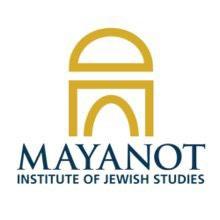
הבר ארבג ארסחד ןל יוו דידי תריטפ לע הווהבו רבעב תונייעמ תבישי ידימלתו ינבר ךל ישע דיחי לבא ךמתו ןימאה ,םינשה לכ וננימיל דמע תדחוימה ותוריסמבש ,ונתבישי לש תמא ונברו ונרומ וננודא לש ומולח תמשגהמ יזכרמ קלח ונב האר ,חורבו םשגב ונב תוחוכ עיקשהו ,חלשמה יבחר לכמ דימלת לכ דמלל לכונש לודגל ונל רוזעל לבת ש תיינבב ונל רזע ,הפיה קלחה לע ודימעהלו הרותבש רואמל ברקתה ונבר םשו םימש םש שדקל ידכ וחותיפ לע שגד םשו שדחה ימלועה זכרמה שממ םינורחאה וימיל דע םלועב ברה 'וכו ת"הרה יקסראלטאק הדוהי השמ ה"ע תרמ הרוסמה ותייערל םינכה ונימוחנת תא ונא םיחלוש הקבר לכלו 'יחת ברה ונבל טרפבו ויחיש הדובכה ותחפשמ לדנעמ םחנמ ונל רזועש 'יש תרמ ותבלו ונתבישיב חילש רבעל 'יש קחצי יול ברה ונבל ,שעמבו הצעב תונבל תונייעמ ןוכמב החולש רבעשל 'ית ןייטשלרעפ ונידידי ויחאל ונימוחנת םיחלוש ונאו ברה ח"הרה לדנעמ םחנמ 'יש םימיה לכ וניתודסומ ןימיל דמועש דועייה םויקל הכזנ ד"ימו ףכיתו ומחונת תוריבכה ויתולועפו ןינבה ךשמהב רפע ינכוש וננרו וציקהו המלש ברה רענטעטשעג ש לאירתכ ברה ם בוט
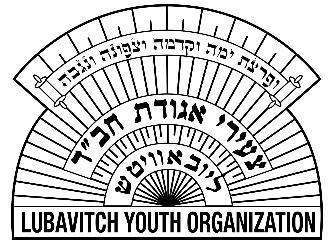
קמועמ ןימוחנת עיבהל וננה ,השקהו הלודגה הדיבאה לע ןוגיבו בר רעצב ,םיקלא ארי שיא ,ח"אצ תולועפ לכל קיתוו דידי תריטפ לע באוכה בלה תורשקתה ךותמ הנומאב צ"צב קסע ,לעופ רבו ץרמ לעב ,דיסחו קיתוו תולודג השעו ךונח ינינעל זכרמב שדוקב תרשל הכזו וניאישנ ונבר ק"כל ה ןעמל ,ימלועה םיחולשה סוניכ ר"וי ,לבת יבחרב ,ךלמ לש ןויגל ,םיחולש םיבחר יכה םיגוחב שטיוואבויל םשו םימש םש שדיקו ןוילע דסחב םאונ הגלפומו הלודג החלצהב 'ר ברה ח"הרה אדוהי השמ יקסראלטאק ה"ע ןויצ ילבא ראש ךותב ויחיש הדבכנה ותחפשמ לכ תא םחני םוקמה דעו התעמו םחונו קוזיח ואצמת תוכורבה תולועפה ךשמהב ,םילשוריו םכיתונועמב ויהי דסחו בוט ךא םלוע וננרו וציקהו המילשהו תיתימאה הלואגל דחי ונלוכ הכזנ שממ הרהמבו םכותב אוהו רפע ינכוש תיזכרמה ד"בח תדוגא יריעצ תלהנה
ןימוחנת לש סוכ
THE LAST INTERVIEW
Rabbi Moshe Kotlarsky candidly speaks about his life as told to the new book, “The Oracle: Portraits of Rebbe Mendel Schneerson,” by Marc Ansin and Dovid Zaklikowski
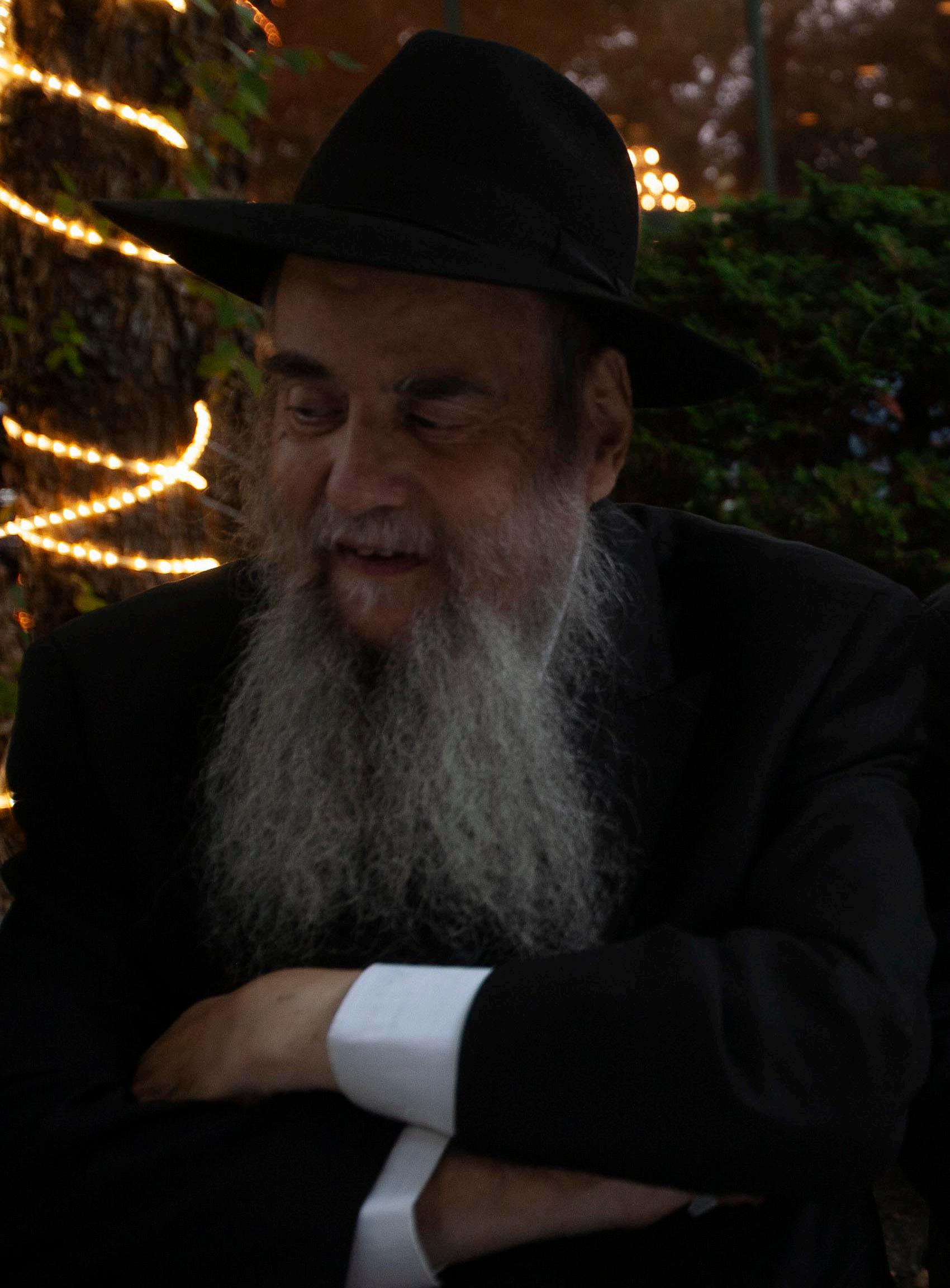
OOn behalf of the Rebbe, I traveled across the globe, laying the groundwork to open new Chabad centers. Until recently, and during COVID, I was away from my home for weeks, traveling from city to city, country to country, meeting local Jewish leaders, rabbinical authorities, and lay leaders.
In the mid-1980s, the Jewish community in Hong Kong, among five other Jewish organizations, wrote to the Rebbe asking that he send a rabbi to the community. The Rebbe replied immediately that we would be there on the coming Shabbos to see what we could do. I dropped everything and flew to Hong Kong. A Chabad House opened there in 1986.
On how seriously I should take my job to assist Jewish communities wherever they may be, I learned after the Rebbe received a letter, in 1984, from the Jewish community of Cochabamba, Bolivia. In their short letter, they declared that their religious life was struggling and asked that a rabbi be sent.
The Rebbe forwarded the letter to our office, asking, “Do you know about this, Kotlarsky?” He then relayed a message directly to me: “If you knew about it, what have you done for them? If you didn’t know about it, how could it be that there is a community in the world—in a country that you are responsible for—that you don’t know about?”
With that note, the Rebbe made me feel more deeply than ever the weight of my responsibility.
Much to my father’s great displeasure, I have traveled to Germany many times. Except for one brother, my father’s entire family was murdered by the Germans during the Holocaust. Like many other Holocaust survivors, going to Germany was out of the
question for my father. But to the Rebbe, as long as there was one Jew there, we would travel there to work on their behalf.
For many years there was a Chabad rabbi who would visit Germany from London to organize the Jewish needs there. The Rebbe also had a deep connection with Jewish leaders in the country and rabbinical students who would travel there. However, it was only in 1988 that the first Chabad House in Germany opened in Munich.
I was invited in 1995 to Berlin to an event marking the Allies’ victory over Germany. I was standing next to the legendary leader of German Jewry Ignatz Bubis, who turned to me and said, “Moshe, we are not allowed to forget.”
I looked at the many gathered, including prime ministers, presidents, and monarchs, but like Mr. Bubis, I was thinking about my grandparents, the six million Jews, the best and brightest, the righteous and children who did not sin, murdered by the Germans. I responded to Mr. Bubis, “What are we going to do that ensures we don’t forget? If we are not going to educate, instill, and invoke in the children of the next generation, then it will all be forgotten.”
Every new country, city, or state where a new Chabad House opens is the start of another story. It takes much energy, traveling, and negotiations. Soon after they arrive, the Chabad representatives lay the roots and slowly build a community. A few years later, I was invited back to dedicate a new community center in Munich. Some places I have been back to three or four times. Some have grown out of their old locations and are dedicating a new building yet again.
22 COLLIVE MAGAZINE - RABBI KOTLARSKY TRIBUTE
For every dedication that I go to, I feel it is the greatest testimony to Hitler’s defeat. He did not annihilate the Jewish people. The Jewish people will live forever.
WHEN MY WIFE WAS pregnant with our first son, we wrote a note telling the Rebbe that we would go wherever he sent us to open a Chabad House. The Rebbe asked if my wife had gone to the doctor. We responded that she had gone to confirm the pregnancy. The Rebbe said that we should wait for her to give birth and then discuss it.
Later that year, I was advised by the Rebbe’s secretariat of three places we might travel: Washington, DC; Texas; or the central Chabad office. I said, “It does not make a difference to me, wherever the Rebbe wants.”
They said the Rebbe would not decide, and it should be our decision. After going back and forth, the Rebbe told us in an audience that we should remain here: “From here you will be able to spread Hasidic teachings and Jewish observance across the globe.”
I was twenty-two years old, and it felt like a dream: The Rebbe threw me into doing his work across the globe. It was a huge responsibility, but when the Rebbe entrusted someone, he gave them his complete confidence. The Rebbe did not give jobs; he gave opportunities. If you did them well, he gave you more. In fact, that is how you knew the Rebbe was happy with you—if he gave you another mission.
WHEN I BEGAN, I was working directly under the Rebbe’s chief aide, Rabbi Chaim Mordechai Isaac Hodakov. He would give me such jobs as to find out which tractate of the Talmud each representative studied the past year, and which one they were beginning for the new
one. It took him three minutes to ask me to do the task, and it would take me over a month to fulfill it.
Once, in a private audience, the Rebbe asked me about one of the tasks that the chief aide had asked me to do. It was a task I did not want to do, and I did not know it had come from the Rebbe. I relied on what someone at the office told me—that if I was going to jump every time the Rebbe’s aide said something, I wouldn’t be able to eat or sleep.
The Rebbe spoke, and I listened. Despite my not having fulfilled the task, he talked about it in a loving way, not chastising me for not following through with his request. At one point, the Rebbe said that when I went to fulfill a mission, “If you want you could say it in my name, Mendel Schneerson, but if you hold that it is better without my name, you don’t need to say it, as long as the task is fulfilled.”
Listening to the Rebbe talk, it dawned on me that the Rebbe had given me a task a month ago, and I had ignored it. I did not know where to bury myself. I hoped that the floor would open, and I would drop into it. Despondent, tears were flowing from my eyes. Seeing my reaction, the Rebbe said, “But it should be done with enthusiasm.”
I meekly said, “I am asking that the Rebbe give me vitality.” Looking at me, the Rebbe said twice, “Vitality you receive from G-d, I can only give you a blessing.”
The Rebbe then gave me blessings for the next three minutes. I continued standing there, crying, and the Rebbe said, “And where is serving G-d with joy?”
The memory of that audience has sustained me through many challenging times. I came to the realization that vitality I receive
from G-d, but I live on the Rebbe’s blessings.
FIRST AND FOREMOST, THE Rebbe was a teacher to the masses. But he also took the time to spend many hours in audiences and responding to letters from individuals. While we can study the Rebbe’s teachings, I cannot completely relate to his scholarship, but I can learn from his care for another.
My first trips scouting for Chabad headquarters took me to cities in Oklahoma, Arkansas, Mississippi, Louisiana, Alabama, and Tennessee. In each place, I began to build a basis of support to welcome a Chabad House. The first place I was involved in opening a Chabad House was in Atlanta, Georgia. On that trip, I was asked to visit an elderly Jew who was in a non-kosher nursing home. When I came to him, he told me that his children had “dumped me here,” adding that they had not even called him on Father’s Day. He told me that he had one prized possession: a picture of his children and grandchildren.
“What should I say?” he asked me. “My grandfather called it the holyholy Shabbos. My father called it the holy Shabbos. I call it Shabbat. My son calls it Saturday, and my grandchild calls it the weekend. I shiver when I think about what my great-grandchild is going to call it.”
Returning from that long first trip, I wrote to the Rebbe about the elderly man in the nursing home. The Rebbe wrote back for me to organize for him to be moved to a kosher nursing home, which the Rebbe, unbeknownst to anyone besides myself, paid for himself until the man died a few years later.
This kind of traveling went on for years in the United States until one day, when I was in New Orleans, the
COLLIVE MAGAZINE - RABBI KOTLARSKY TRIBUTE 23
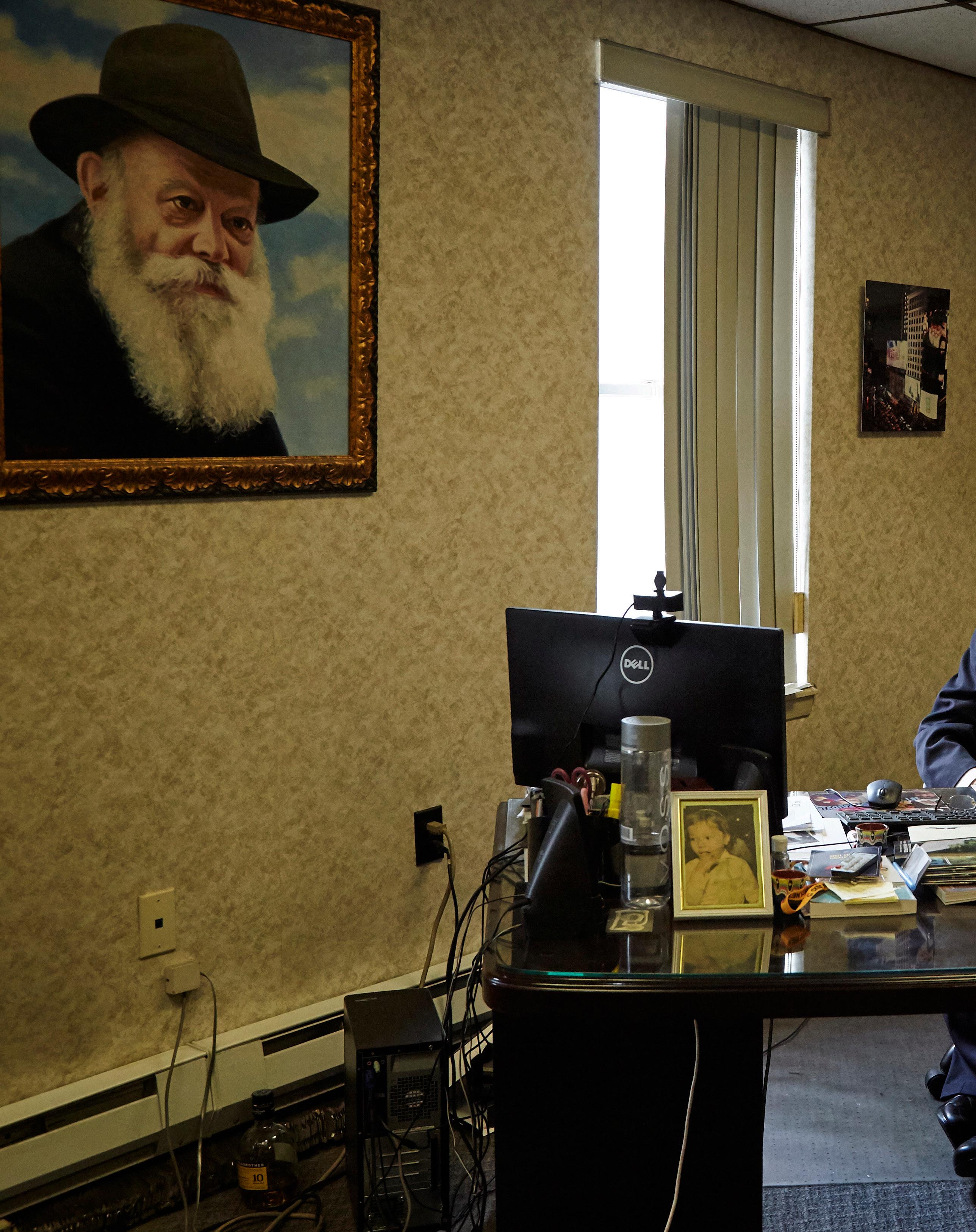
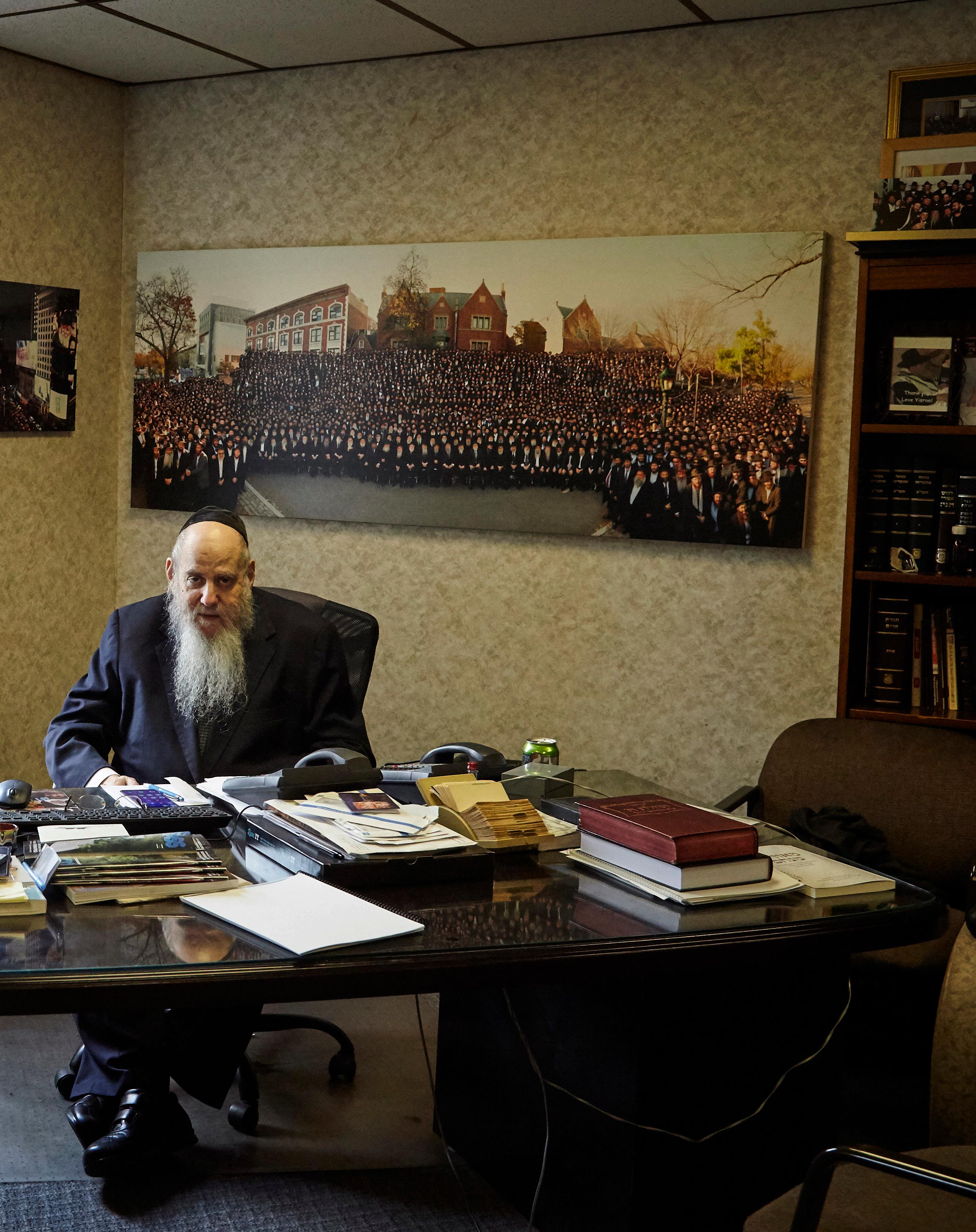 Rabbi Moshe Kotlarsky photographed by Marko Dashev in his office at Lubavitch World Headquarters, 770 Eastern Parkway, August 2019
Rabbi Moshe Kotlarsky photographed by Marko Dashev in his office at Lubavitch World Headquarters, 770 Eastern Parkway, August 2019
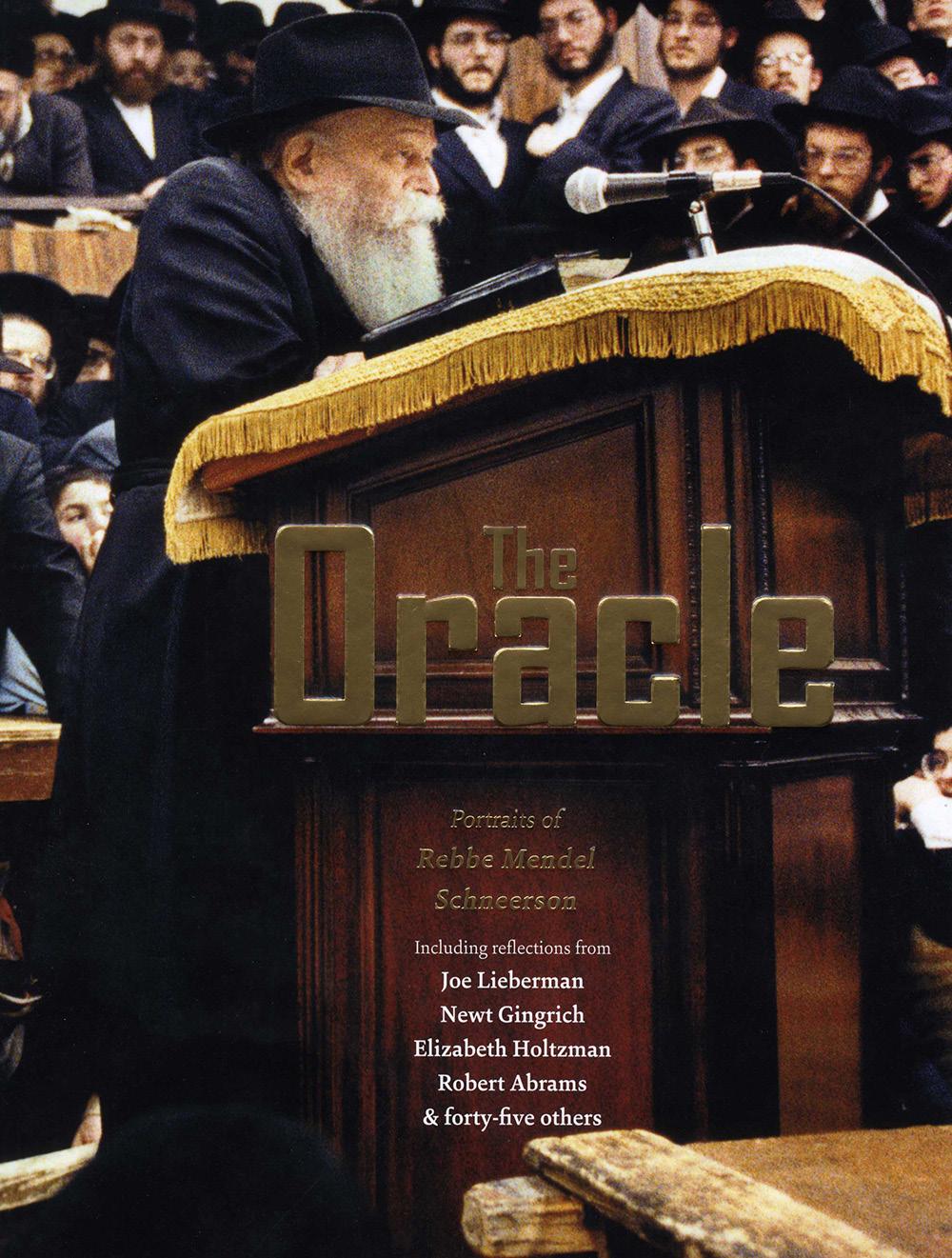
Rebbe sent a message for me to go to South America. From there my travels expanded to Europe and the Far East. There was a request to open a Chabad House in Bangkok. There I met Abi Kashani, a gem dealer. He was very warm to Judaism and had a deep love for the Rebbe. When he was in New York, I took him to the Rebbe and told him that this is Kashani from Bangkok. The Rebbe’s love for another Jew was such that he could not say that a Jew lived far from Jewish life, and so he said to Mr. Kashani with a smile, “You are from a place in the East that is not called near.”
Another time, I brought the Jewish leader from Peru to meet the Rebbe, and he told the Rebbe that he supported the local Chabad representative. The Rebbe thanked him, but he said that the true gratitude for his assistance comes from G-d, “for every Chabad representative is an emissary of G-d. In fact,” the Rebbe continued, “I am an emissary myself to teach G-d’s Torah to every Jew wherever they may be . . . to the greatest extent possible to provide a way for every Jew to fulfill their duty in this world, by adding in Jewish observance, righteousness, and justice.”
IT IS THE JOB of the Chabad Houses to fulfill the Rebbe’s mission to reach every Jew. We do not have a 100% success rate; we are human, but we keep on trying and innovating. And until each and every Jew is reached, we will not have fulfilled our mission.
It has been almost thirty years since the Rebbe is no longer physically here. There is no absence, though, because he is spiritually here with
us. The success of Chabad today, the over 5,000 families who are spread across the globe reaching out to Jews, is only because of the Rebbe’s merit, for he is watching out for us from above.
Through his teachings, the Rebbe continues to inculcate a new generation of leaders who had not merited seeing him. There are young couples in their early twenties who are begging for a community of 1,000 Jews, 500 Jews, to open a Chabad House there. I am glad to be able to play a small role in the Rebbe’s vision and mission of changing the world into a place of goodness and kindness, to be ready to usher in the Messianic era. These days, I am going through a challenging time. It has been a very difficult few years of a cursed sickness that is ravaging my body. It is hard for me to walk. It is hard for me to eat. It is hard for me to sleep. But the hardest thing is that I cannot travel as much to assist in the opening of new Chabad Houses. I feel that I cannot fulfill my potential.
But, regardless of how G-d is going to test me, I am not going to step back. Whatever G-d places before me, I will fulfill the Rebbe’s wishes. Even though many times it is hard to be joyous, like the Rebbe told me, there comes a time when you have to stand up and be a man. You have to take the challenge head-on regardless of what it costs.
The Oracle is available at www. RebbeSchneerson.com or www. HasidicArchives.com.
26 COLLIVE MAGAZINE - RABBI KOTLARSKY TRIBUTE
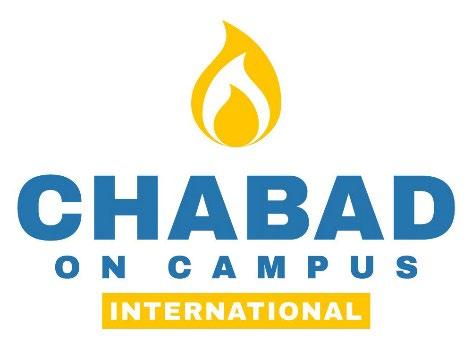
ימלועה סופמקב ד"בח ונל היה המ יוא ,לבת יבחרבו ב"הראב 'סופמקב ד"בח' תרגסמב םילעופה םיחולשה לכ םשב תלהנה דעוו ר"וי תריטפ לע דאמ קומעה ונבאכו לודגה ונרעצ תא ונא םיעיבמ ללכ ךותב רשא ,ימלועה םיחולשה סוניכ ר"ויו ךוניח ינינעל זכרמה ר"ויס ,וניתודסומ לכב בורקמ ברועמ היהו סופמקב ד"בחל ול תעדונ הריתי הביח ,תוכורבה ויתולועפ בהל ,םיסופמקב םיחולשה לש 'ה תדובע ינינע יפלאל תודיסחהו תודהיה רוא תא אי דיתעה רוד ,םיידוהי םיטנדוטס 'ר ברה ח"הרה יקסרלטאק הדוהי השמ ה"ע ותחפשמ ינבל ונימוחינ – ויחיש םיבושחהו םירקיה ונידידי םילשוריו ןויצ תמחנב םתוא םחני םוקמה , םילפכב ומחוני וניאישנ ונבר תוחילשב תוכורבה תולועפה ךשמהבו דימת םקלח תנמ ויהי הלגנהו הארנה דסחו בוט ךא התעמו רפע ינכוש וננרו וציקהו דועיה םויקב תוארל הכזנ שממ בורקבו המילשהו תיתימאה הלואגב םכותב אוהו ןאדראג קחצי ףסוי ברה ןייטשנייוו ןהכה םייח םהרבא ברה סופמקב םיחולשה לכו ימלועה סופמקב ד''בח תלהנה דעווה םשב
לש ותריטפ לע םילבאתמ ,קרוי וינ ,דנלייא גנול לש םיחולשה הששו םישמח ברה הדוהי השמ ןב יבצ ףסוי יקסרלטוק ל"ז תוריסמ לש תפומ תומד היה יקסרלטוק ברה ע ןעמל היישעו לארשי תבהא ם ,םלועה יבחרב תוחילשה םלוע סוסיבו קוזיח לעפ תובר םינש ךשמב .ללכה לעפ הב הניפ לכב תרכינ תיבויחה ותעפשהו . םיחולשה רובע השעש המ לכ לע ונלש הקומעה בוטה תרכה תא םיעיבמ ונא דנלייא גנולב םיחולשה תוחפשמ רובע טרפבו ,םלועה יבחרב תוחילשה םלועו . קיבולוו תחפשמל טרפבו ,ותחפשמ לכל המחנ ןתי 'הש ןוצר יהי - ,ינח ותב דנלייא גנולב םידכנהו ,ןמלז ברה ונתח . ןאדלעט היבוט ברה ישאר חילש
We mourn the loss of Rabbi Moshe Yehuda Kotlarsky
His selfless dedication to Chabad shlichus and the global Jewish community was truly inspiring.
In our role supplying the Kinus HaShluchim annually, we were privileged to be a small part of his great machine of Askonos. We saw first hand how tireless he worked on behalf of the tzibbur.
Rabbi Kotlarsky's extraordinary contributions to the expansion of the Jewish community through the establishment of Chabad centers worldwide will leave a lasting legacy.
We extend our heartfelt condolences to the
Kotlarsky family and the global Lubavitch community

Gracious, Jolly and Good Humored
By Marc Asnin
Coming to Chabad, I was enveloped with love. It was unorthodox at its best. It was loose. There were few formalities. I felt embraced. Synagogues, rabbis, Jewish officials I knew, were always uptight. One of the friendliest and jolly people I met when I first arrived in Crown Heights was Rabbi Kotlarsky. It was the Rebbetzin’s yahrtzeit, and Rebbe Schneerson was handing out booklets with dollars. I was doing my thing, when someone told me that I dare not photograph Bob Dylan, who was on the line, when he received his booklet, “If you take a
photo, you will never be permitted back here.” I didn’t know who the guy was, but to me every guy in a black hat was the boss. At one point I needed something from my camera bag, and I went upstairs to the office building at 788, to get my equipment. When I got there, Bob Dylan and his bodyguard were hanging out eating deli sandwiches with a bunch of Chabad rabbis, including Rabbi Kotlarsky. He invited me to join them and have a sandwich. That was not the norm, not even in the corporate world. When you have such a well-

30 COLLIVE MAGAZINE - RABBI KOTLARSKY TRIBUTE

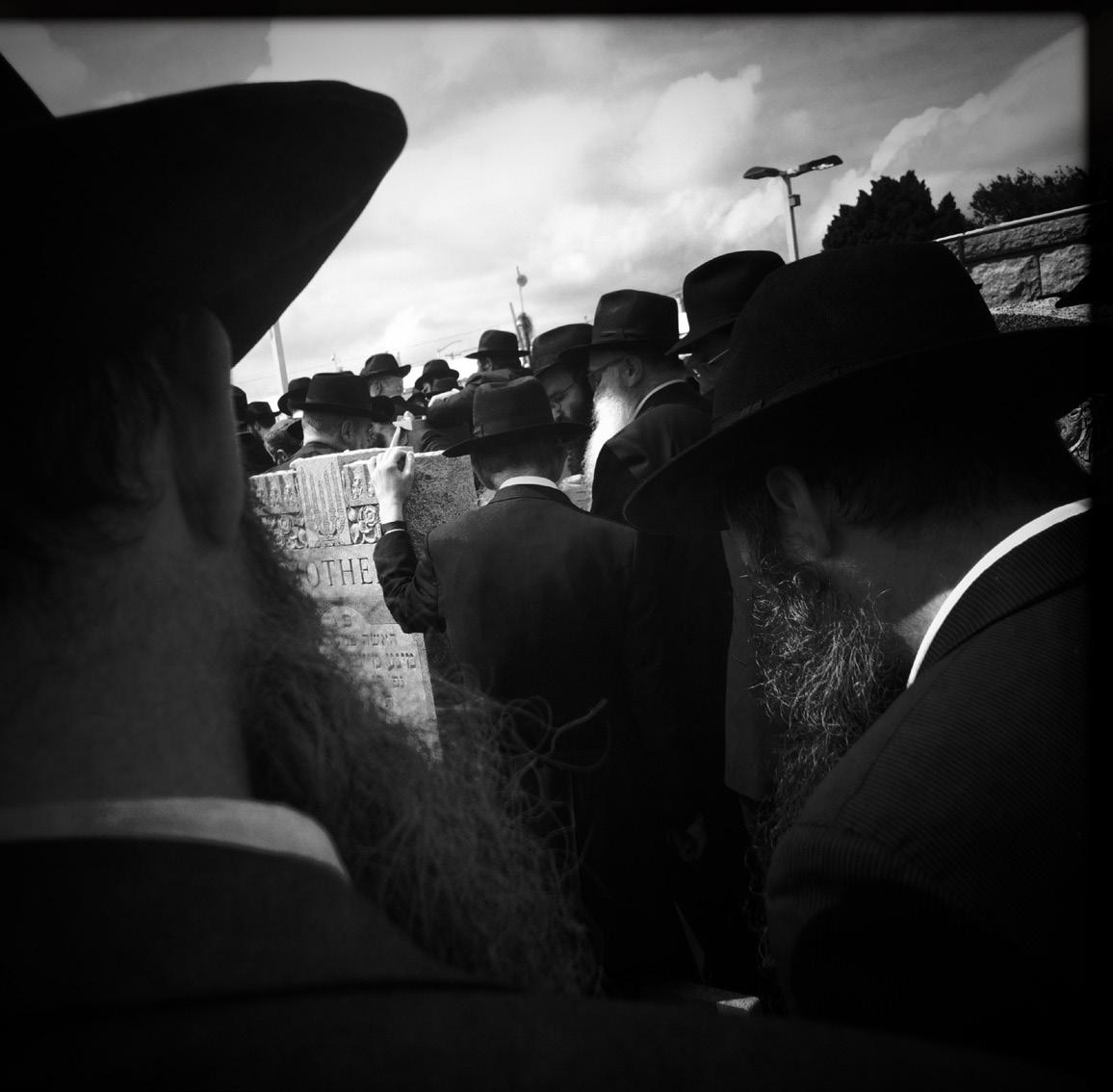
known artist, you don’t invite the photographer to sit down and join in eating.
When Dylan left he shook everyone’s hand, including mine. I was floored. I was not a big music fan, but I understood the importance of who he was. I went to the phone in the room and began to call my friends, “Do you know who just had a deli sandwich with and shook my hand?”
Hearing my calls, Rabbi Kotlarsky came up to me and said with a smile, “I think you're more impressed with Bob Dylan than the Rebbe.” I am an open and direct guy, and said, “Oh yeah, definitely!”
Today looking back, it was pretty stupid to say that. I didn’t really understand who Rebbe Schneerson, or Chabad, was and I should have never said that. But I am still impressed until today that he did not say, “Shame on you. Do you know that the Rebbe is the leader of world Jewry!” He just chuckled, had a good laugh, and moved on.
Today I know better, and understand the significance of my photos of the Rebbe. But would I have known that if he would have dismissed me in shame? There is a good chance that
I would have dismissed Chabad and believed that it was like the other Orthodox Jews I knew. Working on my book about my uncle with mental illness, I brought him to 770 to have his bar mitzvah. Decades earlier, when he turned 13, his parents sent out invitations, people sent back gifts, they canceled his party and walked off with the money. He never had a bar mitzvah, and I thought it would be nice that he had one, and what better place than 770.
Of course I came with my camera to document it. I took over the small room upstairs, orchestrated the photo I wanted, and by mistake bumped into Rabbi Kotlarsky. By then I knew who he was, and I profusely apologized.
He dismissed my comment, and said, “You are doing good work, don’t worry about me, I can move over.” This may be normal to people in the Chabad world. But someone of his caliber and importance in the general world have flipped a gasket. Yet, here he was gracious.
I knew that I wanted to include Rabbi Kotlarksy in The Oracle, and it is my honor that he is in there. On
one summer day last year we went to photograph him at a wedding. You could see that he was not feeling well. There was no doubt that he was in pain, but he still pushed himself to participate. That night we created moving images.
When I learned that he passed away, I went to the funeral. It may have not been respectful to be there photographing during such a difficult time for the Chabad movement. But I wanted to create moments, and memories, of what he meant to so many people.
Marc Asnin is an award winning photojournalist, he has photographed for New York Times Magazine, Time Magazine, Reader’s Digest and many other prominent magazines. His images of the Rebbe will be published in a forthcoming book The Oracle: Portraits of Rebbe Mendel Schneerson, and is available for preorder at a discount at www.RebbeSchneerson.com or www. HasidicArchives.com.
COLLIVE MAGAZINE - RABBI KOTLARSKY TRIBUTE 31
To the esteemed Kotlarsky family:

From l tt r o t R , 13 T s r , 5728
W hy, when we console a mourner, do we mention Yerushalayim?
The consolation is embodied in the phrase’s inner content: The grief over Zion and Yerushalayim is shared by ever y Jew, wherever they may be.
So too, the grief of a sing le Jewish individual or Jewish family is shared by the entire nation. As the sages taug ht, the entire Jewish people comprise one integral organism.
Reb Moshe’s work on behalf of Klal Yisrael personified this concept vividly, and the pain of his loss is shared by all of us.
S n r ly, Your r n s t
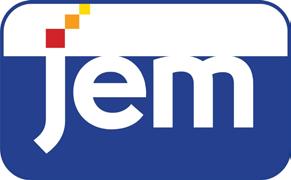
םוקמה םחני םכתא ךותב ראש ילבא ןויצ .םילשוריו
וציקהו וננרו ינכוש רפע אוהו .םכותב
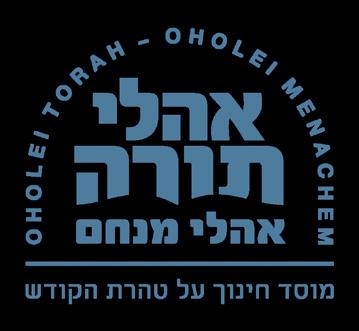
ד"סב דסומ ךוניח לע תרהט שדוקה ילהא הרות – ילהא םחנמ ,ןילקורב י"נ אל םק
רעצב בר לע הדבאה הלודגה ,השקהו םיפתתשמ ונא לכב בל לכבו שפנ לבאב לודגה לע ותריטפ לש ע"מכ יאה ארבג ,אבר לעפש השעו תולודג תואלפנו ןעמל םיחולשה םישודקה יחולש- -ךלמה םירוזפה לכב יבחר לבת דיסח רשוקמו בלב ,שפנו לכש ותמגמ 'יה םייקל ןוצר חלשמה םורגלו ר"חנ ןואג תבהאב לארשי תויתפכאו אלש עדי תולובג ןעמל תלוזה דידי ילהא הרות ר"ויסו זכרמ ינינעל ךוניח ח"הרה ת"הרה 'ר השמ אדוהי ןב יבצ ףסוי ה"ע יקסראלטאק וננהו םיחלוש תא ונימוחינ ותגוזל תינברה הבושחה ט"חלדבת תרמ הקבר 'יחת םהינב םיבושחה ,ריאמ ,לארשי ,יול דוד םהיתונבו תובושחה ,הנח ,הרש המחנ אדלוג דחוימבו ונבל לעב ץרמ ברו םילעפ ח"הרה הלענה ברה םחנמ לדנעמ 'יש תמחנב ןויצ םילשוריו ,ומחוני התעמ דעו םלוע אל ופיסוי הבאדל אלו ועדי רעצ ךאו בוט דסחו הארנה הלגנהו ויהי תנמ םקלח דימת הרהמבו םייוקי דועיה וציקה" וננרו ינכוש "רפע - אוהו םכותב - הלואגב תיתימאה המילשהו דימ !שממ דעוו תלהנה ילהא הרות - ילהא םחנמ ברה םולש ןהכה דלעפנעזאר ברה יכדרמ שטייד ברה ךורב ןאמקירב ברה לאומש קורב ברה השמ דמלמ ברה ןמלז ןח ברה ןמחנ בוד ןינכיוו ברה ףסוי ןאמקירב ברה בקעי ןאסניפ ברה םהרבא ןישקאל ברה ב"דש ןיקבאר
השמכ
“A Round of Applause For the Whole World”
The driving force behind the expansion of the International Kinus Hashluchim
By: Chaya Chazan

“AND NOW, LET’S WELCOME THE SHLUCHIM FROM THE WHOLE WORLD!”
Anyone who’s attended or watched the International Kinus Hashluchim can instantly recognize the inimitable, thunderous tone of those words from Rabbi Kotlarsky which he repeated year after year. One of the highlights of the Kinus banquet was Rabbi Moshe Kotlarsky’s Roll Call, and the spontaneous dancing that inevitably followed.
The annual Kinus was perhaps the
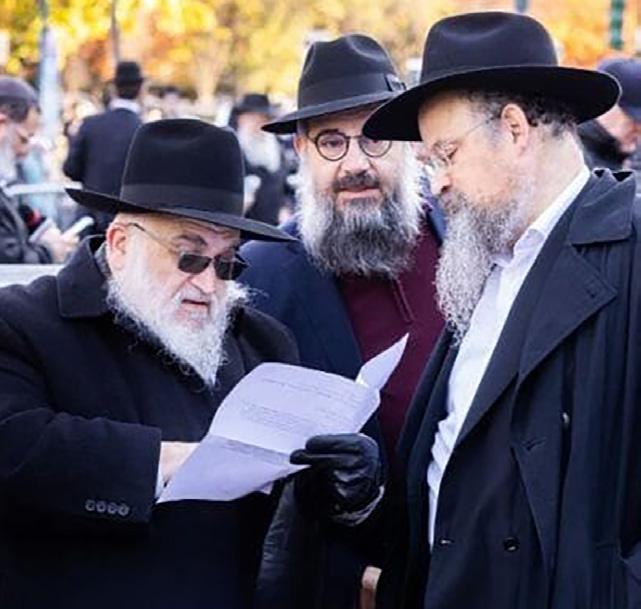
most famous of Rabbi Kotlarsky’s many undertakings. From its humble roots in 1983, serving just 70 American and Canadian shluchim, to the mega event for 6,000 it is today, his vision, care, and attention to detail are present in every moment of the Kinus.
Grassroots Effort
In Kislev 5744, a group of shluchim approached Rabbi Lipa Brennan, asking him to organize a kinus. Working closely with Rabbi Yehuda Krinsky, a member of the Rebbe’s secretariat, Rabbi Brennan organized the first Kinus for over 70 shluchim from America and Canada. Over Shabbos, they inspired one another, and gave each other chizuk to continue in their mission from the Rebbe. The Rebbe gave Rabbi Brennan mashke to distribute to all participants.
On Motzei Shabbos, a final session was held in the large, 4th floor library of 788 Eastern Parkway. It was then that Rabbi Kotlarsky began his 40-year involvement in the Kinus
Hashluchim.
He’d received a call from Rabbi Chaim Mordechai Aizik Hodakov, asking him why he wasn’t involved in the Kinus, and telling him to chair the session. A devoted chassid, Rabbi Kotlarsky immediately followed the instructions he’d been given.
Rabbis Krinsky, Brennan, and Kotlarsky worked hand in hand to ensure the success of every Kinus that followed.
By the fourth Kinus in Kislev 5748, international shluchim in Israel, Europe, Australia, and Africa were invited to take part as well. Since then, Rabbi Kotlarsky’s vision has kept the Kinus growing year after year, as ever more shluchim take their place in the ranks of the Rebbe’s messengers the world over.
An Intrepid Visionary
It was Rabbi Kotlarsky’s incredible vision and ambitious dreams that inspired the Vaad Hakinus to expand, turning each event into a grandiose affair more striking and
34 COLLIVE MAGAZINE - RABBI KOTLARSKY TRIBUTE
Rabbi Lipa Brennan during the group photo of the annual Kinus Hashluchim
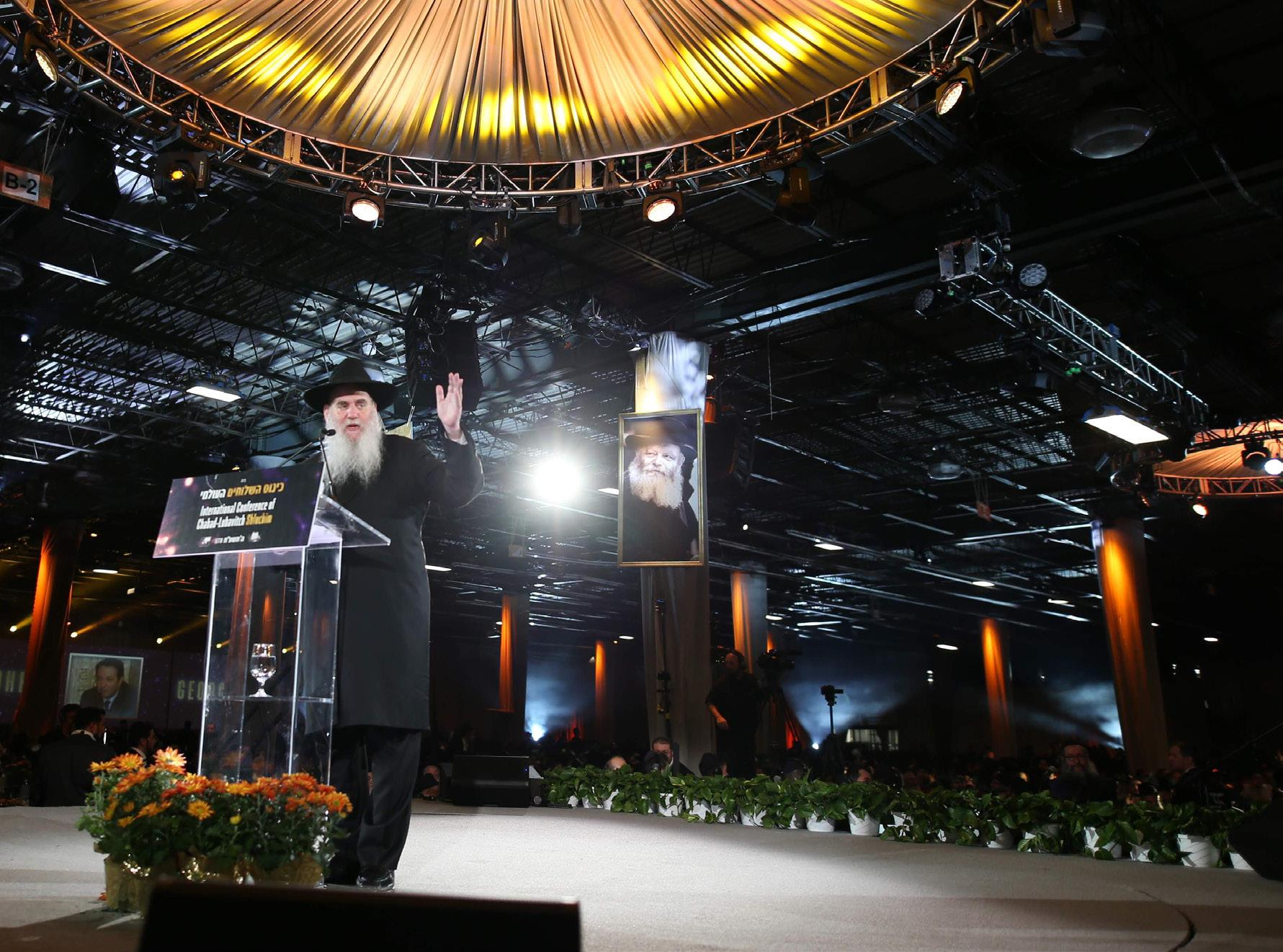
magnificent than the last. What started as a glorified farbrengen that took just a couple of weeks worth of calls to organize is now a massive undertaking whose planning begins the day after the conclusion of the last.
His ideas were sometimes too outlandish or impractical sounding for the more pragmatic members of the Vaad, but Rabbi Kotlarsky was indefatigable when it came to carrying out the Rebbe’s mission. Nothing was too hard; “impossible” didn’t exist. In the late 90’s, shlichus boomed, and hundreds of new families joined the ranks of the Rebbe’s messengers. For years, the grand banquet had been hosted in the Oholei Torah Ballroom, but it was clear it would no longer be big enough.
At that time, the Brooklyn Marriott was under construction. Rabbi Kotlarsky and Rabbi Brennan went to survey the barely completed skeleton of a building, donning hard hats and climbing up dusty ladders to reach their meeting with the contractor on the “second floor.” When they were shown the plans for
the future ballroom, Rabbi Kotlarsky immediately envisioned how perfect it would be for the banquet, and they signed the contract on the spot.
A few years later, when the Kinus outgrew the Marriott, Rabbi Kotlarsky once again used his creativity and unique perspective to find new venues, time and time again. It was his idea to rent a huge warehouse, and his insistence that convinced everyone the grimy cavernous building could be converted into a gorgeous banquet hall.
It was Rabbi Kotlarsky who suggested that the 2022 Kinus feature the simultaneous siyumim of 32 Sifrei Torah, and he was instrumental in making it happen.
The Rebbe’s Ambassador
Although Rabbi Kotlarsky was unstinting in his demand for the highest professional quality in sound, lighting, catering, and programming, he never lost sight of the bigger picture: the Rebbe’s message.
The last sicha the Rebbe personally addressed to the Kinus Hashluchim in
5752 was the final one of an escalating rallying cry “to bring Moshiach now!”
The Rebbe emphasized how the world is fully ready for Moshiach’s arrival, and all that is needed is for us to be makabel pnei Moshiach.
Rabbi Kotlarsky made a special point to ensure this message was clearly shared at every Kinus since. His creativity and broad-minded approach cleverly fashioned new and innovative ways to bring the message across. Whether it was a focus on mivtzah tefillin or mivtzah kashrus,
Rabbi Kotlarsky made sure the theme, keynote address, video presentations, speakers, and shluchim gifts all reflected the Rebbe’s last spoken mission to his shluchim.
“This video presentation is beautiful and professional,” he would tell Rabbi Simcha Backman, and others on the Kinus team. “Now let’s make sure it’s just as hartzig! Let’s add some heart and soul into it - namely, the Rebbe!”
He reviewed each speech with a finetoothed comb, always suggesting one or two tweaks that would bring the Rebbe’s message to the fore. He wanted to ensure the Rebbe’s words resonated with every shliach, empowering them to continue with and expand their shlichus with a clear understanding of what the Rebbe demands of them, and how much the Rebbe loves and appreciates them.
When it came to the Kinus of 2020, the entire program had to be moved to a virtual platform, so there were more video presentations than usual.
“In a time of such division, when everyone is quarantined and alone, the Rebbe is the unifying factor that ties all shluchim together,” was Rabbi Kotlarsky’s mantra.
A Loving Father Figure
When planning and preparing for the Kinus, Rabbi Kotlarsky insisted that the three-day conference be a comfortable and luxurious experience for all the attendees. His
COLLIVE MAGAZINE - RABBI KOTLARSKY TRIBUTE 35
Regional Kinusim
While the Kinus provides an incredible opportunity for shluchim to rejuvenate and gain inspiration from their friends and peers, for Rabbi Kotlarsky, it was not enough. Traveling to the Kinus was a prohibitive expense for some, while others couldn’t leave their shlichus or families at that time. He also knew that the mesiras nefesh shlichus demands meant that many shluchim needed a refill on inspiration more than just once a year.
Thus was born the regional Kinusim. Smaller groups of shluchim from a concentrated area would gather together in a central location to farbreng, and gain insight and encouragement from each other.
Rabbi Kotlarsky did his best to attend as many of these regional Kinusim as possible, despite his busy schedule. His presence gave significance to the small gatherings. The great effort he made was not lost on the shluchim, and gave them great encouragement and chayus.
In 2014, Rabbi Greisman of Stockholm, Sweden called Rabbi Kotlarsky to inform him the Scandinavian shluchim had decided to hold a mini Kinus that Shabbos. There was a yearly Jewish football tournament in Scandinvia, in which many of the shluchim’s children participated. When Rabbi Greisman realized that all the shluchim would be in the same city for Shabbos, it was an opportunity too good to miss. Despite the last minute notice, Rabbi Kotlarsky immediately made arrangements and joined the shluchim for Shabbos. His stories and insight made the farbrengen an unforgettable experience.
Just a few hours before he passed away, a regional Kinus was taking place in Cracow, Poland for shluchim in small cities in Europe. Despite his weakness, he insisted on participating via Zoom. Ignoring his pain, he joined the shluchim in singing a chassidishe niggun.
extensive travels taught him exactly how deprived many shluchim in small, rural, or exotic locations were. No concern was too small for his attention. He even reviewed the menu, making sure it would appeal to a wide variety of cultures and appetites.
“Do we really need meat if we already have chicken on the menu?” asked one of the Vaad members during a meeting. Rabbi Kotlarsky leaned back in his chair.
“Think of the shluchim who are traveling from far away. Many shluchim don’t have access to meat, or can’t afford it. This is the one time a year they can enjoy a steak. Don’t cut the meat. Let them eat steak.”
If Rabbi Kotlarsky got word that a shliach couldn’t attend the Kinus because he couldn’t afford a ticket, he’d help the shliach buy a ticket. Some shluchim felt hesitant to fly in, knowing they had nowhere to stay in Crown Heights. Rabbi Kotlarsky personally arranged accommodations for them, ensuring their comfort and convenience.
“He woke up every day and asked himself, What can I do to further the Rebbe’s vision?” says Rabbi Backman.
A Keen Sensitivity
Friends describe Rabbi Kotlarsky as an Ish Chessed, a man of kindness who cared for each person.
Rabbi Kotlarsky was responsible for gaining the support of many wealthy individuals and important politicians. At every Kinus, his small home was filled with stately VIPs, head shluchim, and many of the “movers and shakers” of Lubavitch. Nevertheless, Rabbi Kotlarsky was never too busy for “the little guy.” He valued each person and treated them all as equals.
One Kinus Shabbos saw his home filled with the usual billionaires, influential shluchim, and VIPs.
Everyone there had been invited, since the room was small and could only hold so many people. Just then, a knock on the door heralded the arrival of another visitor, who brought along a young shliach with him. While the visitor instantly started walking around, greeting friends heartily, the young man stood at the door, clearly abashed and uncomfortable.
“Come sit next to me,” Rabbi Kotlarsky invited, ushering him to a seat. He chatted easily with him until the young man felt at ease.
One of the allures of the Kinus is the opportunity it provides to network with influential donors and shluchim and to reunite with friends. Although Rabbi Kotlarsky’s assigned seat at the banquet was at the head dais, he always found his way to the back of the room, sitting down beside new shluchim and chatting with them. He wanted to make them feel special, in a room where they could easily be dwarfed by men who’d been on shlichus for longer than they’d been alive. He inspired and empowered them so they’d feel confident in their ability to succeed in the Rebbe’s shlichus.
Rabbi Simcha Backman was first asked to join the Kinus committee as a young, new shliach. “Rabbi Kotlarsky specifically wanted young shluchim on the committee, so he could hear what we had to say,” he recalls. “He told us that we were the future, and it was imperative that our opinions were listened to with respect.”
Dedicated to the Cause
Rabbi Kotlarsky lived his life for the shluchim - lending a listening ear, offering financial aid, creating innovative tools and resources, and empowering them to carry out the Rebbe’s mission.
The driving force behind all that he did was an unquenching desire to give nachas to the Rebbe by helping his messengers carry out their mission. And he remained dedicated to this ideal until the very end.
36 COLLIVE MAGAZINE - RABBI KOTLARSKY TRIBUTE
Unforgettable Kinusim
Mentch tracht un Got lacht. Preparations for the Kinus begin the day after the previous one concludes, but despite a full year of intense planning, even the best plans can go awry.
At these times, when most members of the Vaad Hakinus threw their hands up in the air in despair, Rabbi Kotlarsky was a steady rock, unflappably capable no matter the circumstance.
2010
The Holtzbergs’ First Yartzeit
The world screamed in shock when the news of the murder of Gabi and Rivky Holtberg HY”D, shluchim in Mumbai, India broke. For Chabad shluchim, it was especially devastating. Their brother and sister had paid the ultimate price while carrying out the Rebbe’s mission. As shluchim gathered a year later for the kinus, just days before the first yahrzeit, they were still reeling from the tragic loss. Rabbi Kotlarsky assumed the role of a father figure, finding the perfect words of comfort to share that left everyone feeling uplifted and re-energized.
2012
Hurricane Sandy
The Category 3 hurricane blew a destructive course through New York, completely flooding the venue booked for that year’s Kinus. The Vaad went into overdrive, desperately attempting to find a suitable venue overnight. Through it all, Rabbi Kotlarsky remained calm. “We’ll figure it out,” he reassured everyone.
2020 Covid
The entire world seemed to completely shut down for months while everyone went into isolation and quarantine. With flights unavailable, how could the kinus possibly continue. The Vaad was at a complete loss. Rabbi Kotlarsky pushed everyone to create an invigorating program, completely online. It sparked the longest farbrengen in history, joined by many thousands all over the globe. Rabbi Kotlarsky asked for a book to be made with many of the incredible stories shared on that week-long Zoom farbrengen, gifting it to each shliach at the following Kinus.
2024
The War in Gaza
The horrific massacre on October 7th was a horrible and deep wound. Everyone’s hearts and minds were in Eretz Yisrael. Although everything for the kinus had already been decided - the theme settled upon, the speeches written, and the banners printed - how could anything else be thought of other than our brothers and sisters in Israel? Hundreds of Israeli shluchim would be unable to attend in person. Rabbi Kotlarsky inspired everyone to power through. The entire theme of the kinus was re-written, compelling videos were created, and a virtual program for the Israeli shluchim was quickly arranged. Everyone left with the resonating message - united as one, we will bring Moshiach!
COLLIVE MAGAZINE - RABBI KOTLARSKY TRIBUTE 37
Continuing a Legacy
Merkos 302, the suite of organizations that grew out of the Kinus Hashluchim
By Yaacov Brooks & Avi Winner
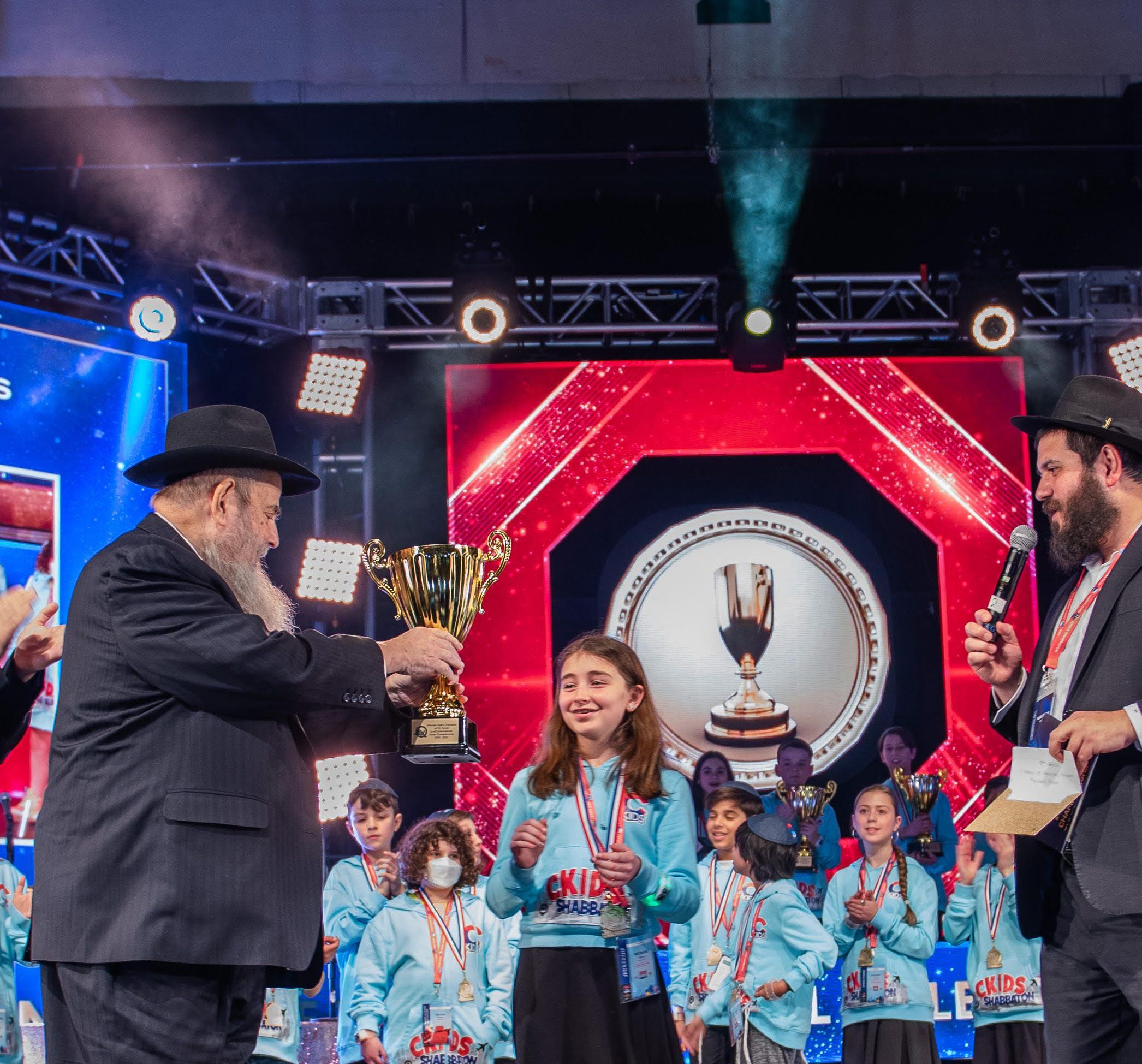

The International Kinus Hashluchim is known as an annual gathering of Chabad Shluchim and a public display of the growth and wide reach of the Rebbe’s network. What is lesser known is that the Kinus is a platform to exchange ideas and brainstorm on how to conquer new frontiers of Shlichus.
Each year, the Kinus Chairman Rabbi Moshe Kotlarsky would announce the Hachlatas Hakinus, resolutions agreed upon based on the sessions and discussions during the Kinus. It was in line with the Rebbe’s oft-repeated instruction to focus on the ‘call to action.’
To actualize some of these grand commitments, Rabbi Kotlarsky launched Merkos 302, an office that served as an incubator for these ideas to develop. Under the direction of his son Rabbi Mendy Kotlarsky, Merkos 302 became a resource center for Shluchim, opening franchises and stand-alone divisions.
The following is a brief review of their operations and a sampling of Rabbi Kotlarsky’s involvement.
COLLIVE MAGAZINE - RABBI KOTLARSKY TRIBUTE 39
Rabbi Moshe Kotlarsky (left) in his office with his son, Rabbi Mendy Kotlarsky
CTeen
The Chabad Teen Network
CTeen provides activities that Shluchim and Shluchos can run for Jewish teens in their communities. One of the highlights is the joint travel to New York for the annual CTeen Shabbaton, uniting thousands of teens from 800 cities in 61 countries.
The Shabbaton culminates in a grand Havdala ceremony in Times Square in Midtown Manhattan, one of the world’s busiest pedestrian areas. The participants openly show Jewish pride with singing and dancing, with the iconic large commercial screens of Times Square emblazoned with the Rebbe’s image.
Rabbi Shimon Rivkin, Director of CTeen International, relates: “Each year, when we would go over the plans for the CTeen Shabbaton, Rabbi Kotlarsky would ask me two questions: Is everyone going to have a comfortable place to stay? And will there be enough food for everyone?”
“He wanted everyone to feel comfortable. Even as we were busy with big screens and tremendous

productions, the simple gashmiyus comfort of the teens was so important to him.”
Rabbi Kotlarsky would attend the event at Times Square and address the crowd with his memorable
and powerful speeches each year, infusing the teens with his sincere faith and Jewish identity.”
CKids
The Chabad Children’s Network
CKids has been catering to children younger than the CTeen demographic. One of their notable activities is the JewQ gameshow, where the finalists of the 4,012 students of Chabad Hebrew Schools (not attending Yeshivas) in 25 countries compete and display their knowledge in an exciting, competitive format.
At their annual Shabbaton, the finalists are on stage and challenged to recite the Thirteen Principles of Jewish Faith (Shloshah Asar Ikkarim), which the Rambam refers to as “the fundamental truths of our religion and its very foundations.”
Rabbi Zalmy Lowenthal, Director of CKids, recalls how proud Rabbi Kotlarsky was of their accomplishments. “When he would meet respected Rabbis and Yeshiva graduates, he would ask them, “Can you recite all of the Rambam’s 13 Principles of Faith in under 60 seconds? He would then show them the video clip of Hebrew School students doing just that.”
Chabad Young Professionals
The network of young Jewish communities, with 250 chapters worldwide
Rabbi Beryl Frankel, Director of Chabad Young Professionals, recalls a valuable lesson he learned when he first joined the team at Merkos 302.
“When Reb Moshe first interviewed me to work at Merkos 302, he told me that the way he knew the Rebbe was satisfied with a project he’d done
was not with receiving thanks and congratulations, but when the Rebbe would give him a new responsibility to take on,” he said.
To help the work with bringing young Jewish adults together, CYP holds a Kinus for the Shluchim who cater to them. One of the highlights of this gathering is “The Huddle,” where the CYP Shluchim had the opportunity to have a candid roundtable conversation with Rabbi Kotlarsky about their individual challenges and opportunities.
“Each Shliach felt heard and touched by the quality time and tremendous interest Reb Moshe would take in their Shlichus,” says Rabbi Frankel.

“Ultimately, many of the CYP initiatives were launched as a result of these Huddles.”
JNet
The Jewish Learning Network
JNet, the chavrusa pairing service that has seen thousands of people across the globe learn Torah over the phone, was launched in 2006. Run by the late Rabbi Yehuda Dukes, it matched Chassidim and bochurim to study with Jews worldwide who seek to deepen their Torah knowledge.


40 T COLLIVE MAGAZINE - RABBI KOTLARSKY TRIBUTE

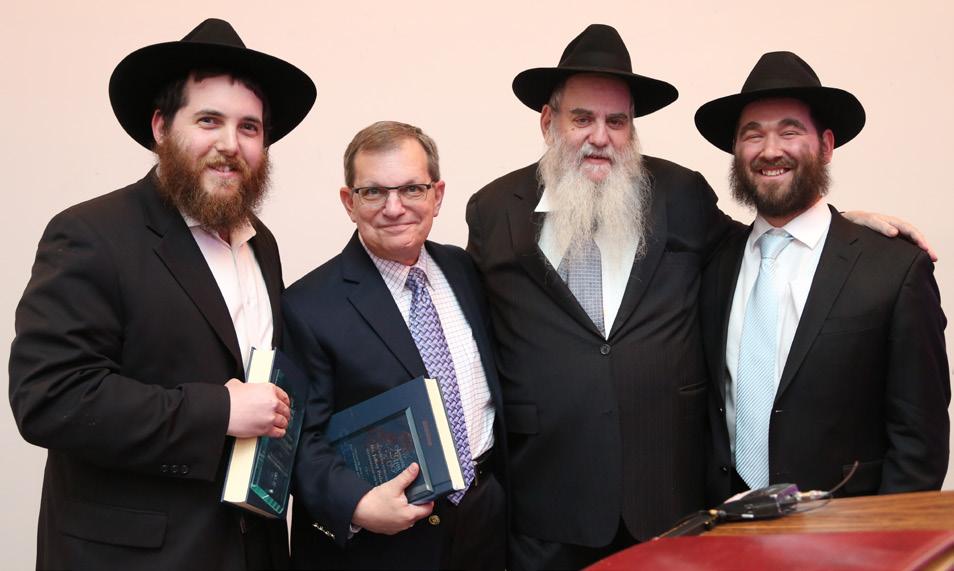
Its current Director Rabbi Mendel Groner said: “Reb Moshe was my role model of complete dedication to fulfilling The Rebbe’s mission, never slacking for a moment, and fully immersing himself in realizing the vision the Rebbe empowered us to create.”
He said that Rabbi Kotlarsky enabled the program to get off the ground by procuring grants from various charitable foundations and encouraged its growth over the past years.
Chabad On Call
Chabad’s network for patients and the medical community
Rabbi Kotlarsky demonstrated a unique interest in Chabad on Call, providing seed funding for new Shluchim facilitate this work in their local hospitals and medical centers. He spoke annually at the “Chicken Soup Conference” for Shluchim

serving those under medical care, sharing personal anecdotes and ideas on connecting with patients and doctors.
When asked to record a message for patients, even though he was unwell at the time, Rabbi Kotlarsky responded, “Will it help a patient feel better? If so, then yes, I will.” Such was his selflessness, with genuine care and concern for every Jewish individual.
The Moshiach Office
Educating and energizing the public about the redemption
The Moshiach Office was an institution for 20 years, but Rabbi Kotlarsky took it to the next level in the last three years, says Rabbi Shloimie Naparstek, who co-directs the project together with his wife, Gitel.
“I had the greatest honor working at Reb Moshe’s side in his final years,” he shares. “I never saw someone so invested in the success of bringing Moshiach awareness and education to every sector of the Jewish world.
“I heard this from him on an occasion: when the Rebbe announced on that fateful Chof Ches Nissan of 5751 (1991) that he had done all he could, and now it’s up to us to bring Moshiach, he implored the chassidim ‘perhaps there are at least one, two or three people who would figure out what to do.
“Until the very end, Reb Moshe had a constant tug in his heart that the “at least one person” could be him, and it didn’t let him rest.”
The Moshiach Office launched Tut Altz, its flagship initiative, alongside the Festival of the Future and The Alef. Collectively, they service various sectors of the Jewish world and Chabad centers with events, curricula, books, media, games, content, and an online resource hub that has garnered an estimated 150,000 participants and customers
OneMitzvah
The Mitzvah-Raising Platform
When Rabbi Kotlarsky fell ill, a fire ignited with him. “Standing by the Kinus Hashluchim 5781, he shook the world with unprecedented campaigns that shocked even his closest staff,” shares Rabbi Naparstek who also oversees the OneMitzvah project.
In a thundering voice, Rabbi Kotlarsky called on Shluchim to flood the world with millions of Mitzvos. “It was ambitious, but one thing about Reb Moshe that made him stand out was not only his dreams to conquer the world but his belief in the viability of those dreams,” Rabbi Naparstek notes.
Partnering with the RaiseThon fundraising platform, the OneMitzvah option was born. It is an innovative online tool to facilitate Mitzvah campaigns for communities and individuals marking any stage of life; a crowd-raising site that collects Mitzvah pledges rather than money.
When the staff presented the project to Rabbi Kotlarsky, he responded with humor. “We told him the name would be OneMitzvah. He said, ‘I asked for millions of Mitzvahs, and you’re giving me one mitzvah?’
COLLIVE MAGAZINE - RABBI KOTLARSKY TRIBUTE 41
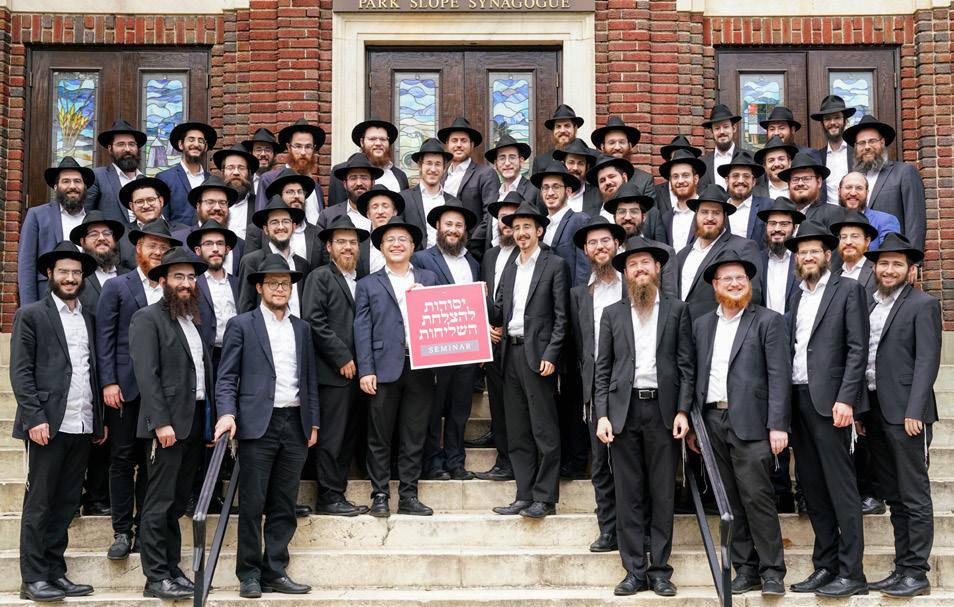
He loved to make everyone smile,” Rabbi Naparstek recalls.
Rabbi Kotlarsky was extremely proud of the concept and mentioned to the team that when someone opens a Mitzvah campaign for their birthday or the like, it literally gives him life.
Rabbi Eli Newman, the Project Director of OneMitzvah, says:
“Working on the final project Reb Moshe founded in his lifetime has been an honor. He was passionate about filling the world with mitzvos to bring Moshiach.”
MyShliach
The worldwide community for the children of Shluchim
From his extensive travel to see the realities of life on Shlichus, Rabbi Kotlarsky recognized the need for young Shluchim to have a community network of their own.
Through MyShliach’s programming, which includes chavrusa pairing with Yeshiva students, virtual Yeshivas Erev, regional Shabbatons, and more, children growing up on Shlichus are helped not to feel alone and forge friendships with fellow young Yaldei HaShluchim.
“Reb Moshe cared about every young Shliach, no matter the cost involved,” says Rabbi Mendy Shanowitz, Director of MyShliach.
“Even a small Kinus camp in Asia, he made sure we made it happen.”
Chabad Israeli Center
Connecting Shluchim serving Hebrew speakers in the Diaspora
The Israeli branch of Merkos 302 established the Chabad organization for Israelis abroad. It assists Shluchim with networking between Chabad houses, grants to Shluchim amounting to millions of dollars from government organizations, organizing lectures, publishing, and global projects such as the Bat Mitzvah Club, Bar Mitzvah Club, and more.
“Last year, I arranged a meeting with Reb Moshe,” recalls Rabbi Shimon Binshtock of the Chabad Israeli Desk. “It was so inspiring how, despite being physically weak and suffering at the time, his passion was not deterred. He was still actively and passionately brainstorming with me to further the Chabad activities for Israelis living in the Diaspora.”
can focus their energy on spreading the light of Torah and Yiddishkeit in their communities.
“Reb Moshe was involved with Yaldei from its inception,” says the Director Rabbi Dovid Leib Shur. “He was always there to help support the Shluchim, many of them in their individual challenges. He was always there to support, guide, and lead Yaldei and its staff to serve our Shluchim better. Reb Moshe always answered the phone. And in the event that he couldn’t, he would always return the call. He was always available and willing to lend a hand to help support.”
Shluchim Refuah
Supporting Shluchim facing medical or mental health challenges
Shluchim Refuah is a support network ensuring that no Shliach or Shlucha faces medical or mental health challenges alone. Inspired by The Rebbe’s guidance to seek advice from a “rofeh yedid,” Shluchim Refuah blends empathy with expertise.
Rabbi Kotlarsky strongly supported the project and felt a personal responsibility for Shluchim during difficult times, says Chani Goldberg, Director of Shluchim Refuah.
Yaldei Shluchei HaRebbe
Assisting Shluchim raising children with special
needs
Yaldei Shluchei HaRebbe, a division of Merkos 302, supports and assists Shluchim who are raising children with special needs so the Shluchim
“At the project’s launch, Reb Moshe meticulously reviewed and edited the introductory letter, insisting on perfection. He emphasized comfort, respect, privacy, and sensitivity, creating a safe space for Shluchim to seek help without fear of judgment.”
A branch of the organization, Shluchos Stronger Together, focuses on mental health issues. Its founder, Mussia Baumgarten, says: “Rabbi Kotlarsky took time during the
42 COLLIVE MAGAZINE - RABBI KOTLARSKY TRIBUTE
busy Kinus Hashluchos weekend to speak with our group at my parents’ home, listened to the Shluchos, and promised to take care of them.
“He kept his promise. I was amazed by his dedication and personal attention despite his vast responsibilities. Even with the thousands of people he interacted with, he always knew who I was and why I was calling. Rabbi Kotlarsky’s compassion and commitment were unparalleled.”
Uforatzta Circle
The sisterhood of Shluchos and their families who live in remote locations worldwide far from a frum infrastructure, with no schooling, kosher food, or Jewish communal support..
“Reb Moshe’s dedication and loving support earned him a special place in the hearts of the Ufaratzta Circle community,” said Chani Goldberg, Director of UC at Merkos 302. “His legacy continues to inspire and uplift those he touched. Less than three weeks ago, I received a message from Reb Moshe that this year Bochurim should travel again for Shavuos and this beautiful project should continue.”
Reb Moshe, affectionately known as the “Zaidy of Ufaratzta Circle,” demonstrated extraordinary care and concern for the Shluchos, their families, and their children. He went above and beyond to support this community of Shluchim living in remote areas worldwide.
Chazak
Providing seminars, Farbrengens and shiurim for Shluchim
Chazak facilitates learning programs for Shluchim themselves, not for their communities per se, acknowledging that inspiring others is only possible when the leaders are inspired themselves.
Among the initiatives are Keren HaShluchim, farbrengens, mashpiim, and writing to the Rebbe, ensuring they had the correct tools and resources for their mission.
“Rabbi Kotlarsky cared for the needs of individual Shluchim as if they were his own children. He always wanted to remind them that they’re the embodiment of The Rebbe wherever in the world they find themselves. Therefore, ensuring they had resources—educational, financial, and spiritual—for themselves was crucial to him,” said Rabbi Mendel Chaiton, Director of Chazak. commitment were unparalleled.”
“Whether he was sharing suggestions for topics to address or giving feedback on article drafts, Rabbi Kotlarsky’s focus on promoting the Rebbe’s vision for shluchim and shlichus was crystal clear and served as a guiding light in the magazine’s publication.
“Despite his busy schedule, Rabbi Kotlarsky would meticulously review each page of the 88-128page magazine before printing. I was always taken by the way Rabbi Kotlarsky would point out a word or phrase from among an article of many pages or a nuanced detail in an illustrative photo and suggest a replacement that was more in line with a publication coming out of the Rebbe’s office.
“When preparing his welcome letter for each issue, Rabbi Kotlarsky took care that his message should not only give over “the call of the hour,” but that it should be written in an uplifting and empowering way to give chizuk to those reading it.”
Compass Magazine
“Each time I consulted with Rabbi Kotlarsky, I walked away feeling uplifted and empowered,” relates Mrs. Elky Raitport, Director and editorin-chief of Merkos 302’s quarterly Compass Magazine for Shluchim and Shluchos.

COLLIVE MAGAZINE - RABBI KOTLARSKY TRIBUTE 43
Dear Kotlarsky Family
With great sorrow and deep pain, we receive the news of the passing of your dear father, haChassid
Reb Moshe z”l.
Reb Moshe was a loyal and beloved friend of ours, and his memory will forever remain in our hearts
May Hashem give you strength during these difficult times, and may we soon reunite with the coming of Moshiach speedily in our days
With deepest respect
Shloime and Mirele Greenwald
םימוחנת
סוכ
Our heart aches over the passing of a dear friend of our family, a fellow resident of ‘Kan Tziva’, a loyal soldier of the Rebbe, and a source of support and advice to mosdos and Shluchim worldwide
Harav Hachossid
R’ Moshe Yehuda ben Tzvi Yosef
Kotlarsky
Alov hasholom
We send our heartfelt condolences to his wife
Mrs. Rivka Kotlarsky
who stood by his side and a role model of chesed and hachnosas orchim, and to the entire family.
Chanina and Orly Sperlin
Crown Heights
םוקמה םכתא םחני
הלעב תרטע ליח תשא

BROTHERS IN SHLICHUS
PHOTO: JEM
The partnership that revolutionized the Jewish world
By Dovid Zaklikowski
Rabbi Moshe Kotlarsky liked to tell the following story. Every month or six weeks, he said in jest, when he was hungry, (“It happened more often than that, but when I was really hungry”), he would call Mr. Sami Rohr and say that he was coming to Miami for lunch. “He is so busy, but he can’t refuse me,” Rabbi Kotlarsky would say.
In Miami, they would have lunch. Mr. Rohr would have a specific fish that he liked. And Rabbi Kotlarsky would order the salmon, “Because it is two dollars cheaper, and you are paying for it,” he would say. Mr. Rohr just smiled and just moved on in their conversation.
Rabbi Kotlarsky would come equipped with reports and donation requests, and Mr. Rohr would decide what to fund, and how much. When they were done, Mr. Rohr took out a paper and calculated all the donations he would now need to give. “Rabbi Kotlarsky,” he said afterward, “you could have purchased the expensive fish, this lunch cost me 800,000 times more than that.”
The philanthropy of the Rohr family is staggering. It is difficult for many to wrap their brains around the amount of funds Chabad has received from them over the years. “The relationship between a shliach and a supporter is profound and complex,” Sami’s son Mr. George Rohr once said. “But for that relationship to initially be established, and to flourish and continue to grow over time, there needs to be a facilitator.”
That person in their family, he said, was Rabbi Kotlarsky, whom he called, “a massively talented visionary, a practical, realistic and hardworking catalyst,” that made all the support they gave happen.
The two referred to each other as brothers. The relationship between Mr. Rohr junior and Rabbi Kotlarsky goes back decades before he began to support Chabad. In college in the United States, far away from his home in Colombia, Mr. Rohr would spend Shabbos at their home. He did not go there for material comfort. The Kotlarsky home was simple, perhaps even less than that. He went there for the warmth, love, and friendship.
But ultimately the two “brothers,” and their “father,” created a revolution in the Jewish world.
COLLIVE MAGAZINE - RABBI KOTLARSKY TRIBUTE 47
To name a few, Chabad on Campus, the Rohr Jewish Learning Institute, and Chabad in the Former Soviet Union.
At a 2006 event, Mr. Rohr spoke about their relationship and how it intertwined with the shluchim. As all the shluchim gave a standing ovation to Rabbi Kotlarsky, tears flowed from Rabbi Kotlarsky's eyes. He looked uncomfortable as Mr. Rohr gave him a gift, a silver Kiddush cup fountain. He compared it to Rabbi Kotlarsky, a cup that pours wine into many other cups.
Quickly composing himself, Rabbi Kotlarsky took the microphone, and said, “As long as the Rohr family will continue to provide the wine, I will be glad to keep on pouring, and pouring, and pouring, and pouring, and pouring...”
Mr. George Rohr would say that the Rebbe lives on in Rabbi Kotlarsky. “We look to him for direction, for guidance, in many ways he embodied what the Rebbe would have wanted for each of us,” he said. Rabbi Kotlarsky would say the same, the next morning after Mr. Sami Rohr spoke at the 2006 Kinus banquet, he said to the son, “I have been thinking about it all night and I really want to take your father as my mashpia.”
One of the things that Rabbi Kotlarsky learned from the elder Mr. Rohr was self-sacrifice and how to never forget about the needs of shluchim, no matter what hour of the day it was.
He told of Mr. Rohr senior's latenight calls, through all hours of the early morning. "Many times someone says something and it is an exaggeration," he said, "but it is true that Mr. Rohr was 'up worrying about the care of the shluchim.'”
He had the voice notes to prove it. One message at 4:07 AM went, “Good morning Rabbi Kotlarsky, okay, Cyprus, this is something
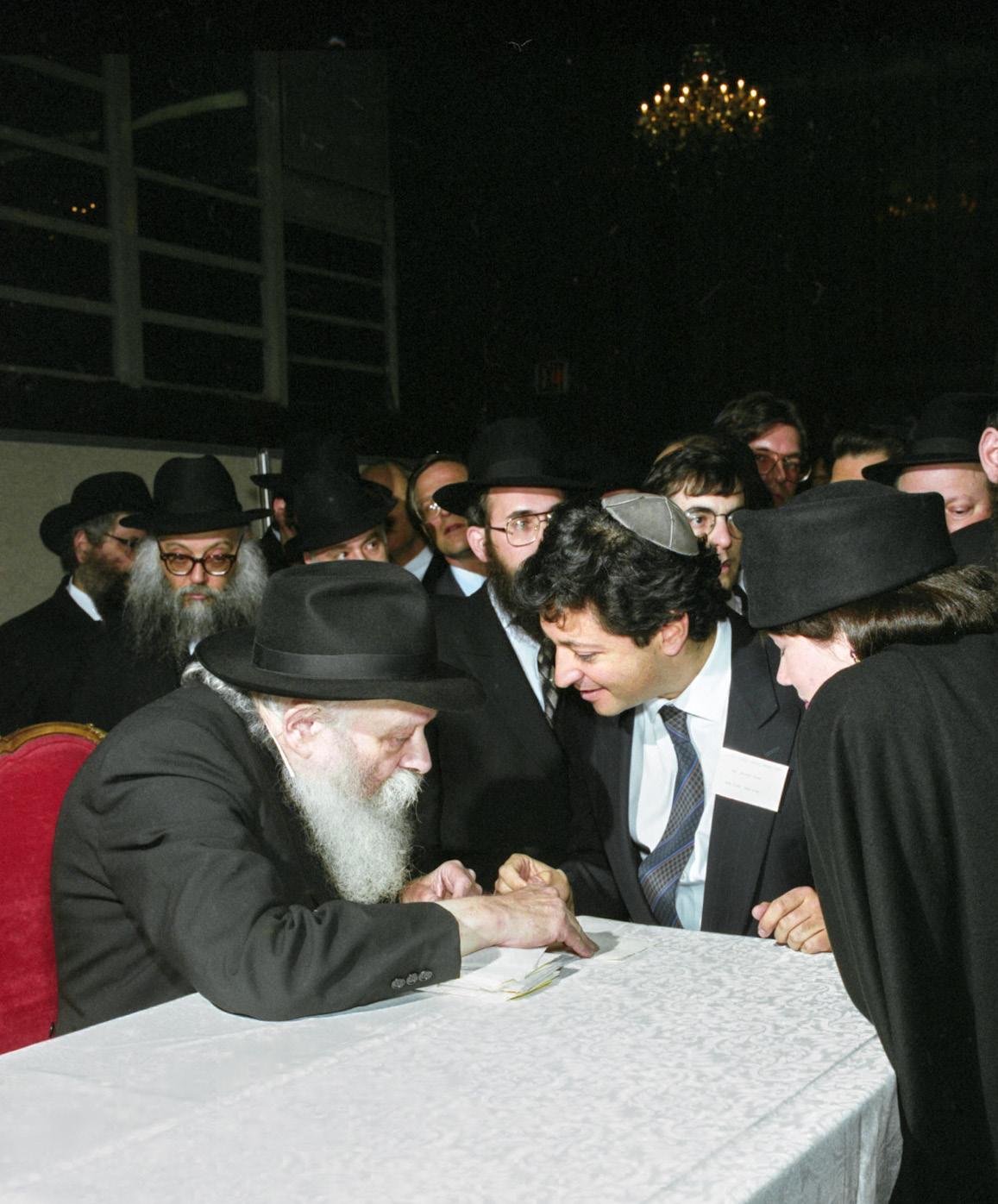
Philanthropists George and Pamela Rohr speak with the Rebbe during a Machne Israel Development Fund reception with the Rebbe
extraordinary, really beautiful.
All the best, bye, bye.” Another at 5:57 AM goes, “Russia. This would be wonderful news, so it would be worthwhile to look into it. Thank you very much Rabbi Kotlarsky. All the best.” At 1:09 AM, “I bring back our conversation from yesterday evening [about Bulgaria]… very, very nice, this is pleasant. So this is good.”
While Rabbi Kotlarsky would not make midnight calls to those whom he knew were sleeping, he would regularly take them from shluchim who were in need.
*
There was no doubt that Rabbi
Kotlarsky wanted to be appreciated. He worked hard, yet he had few demands from those he toiled to raise funds for. He did not like when people fawned over him. Once, at an event, they played a video of a philanthropist going on and on about his self-sacrifice. Afterward, he told the gathering, “That is one video they did not show me in advance. Now I know why.”
The Rohr family, as well, shies away from events where they are in the spotlight, even though it is important to them that people take their example and also support Jewish causes. In fact, Mr. George Rohr said at the same event,
48 COLLIVE MAGAZINE - RABBI KOTLARSKY TRIBUTE
*
PHOTO: JEM


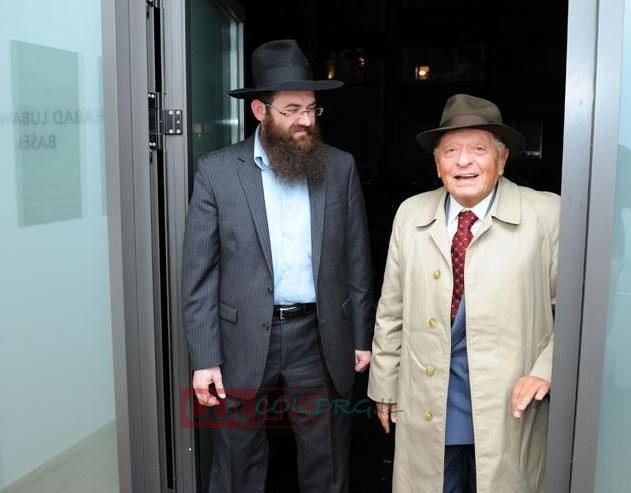

after a video was shown praising him, “That message was also not approved by me.” Perhaps that is why the Rohrs were attracted to Rabbi Kotlarsky.
At a 2006 private event honoring Mr. Rohr senior, Rabbi Kotlarsky thanked Hashem “for implanting in our generation a family whose care and concern for all of us, for all the shluchim around the world, whose care and concern to spreading Torah and mitzvahs and bring G-d’s word to the whole world is of paramount importance to them.”
But he said that his central goal of the evening was to show the extended
Rohr family, “the magnanimity, the generosity, the good heart, of the patriarch of the family.”
Now, it will be the junior Rohr’s job, to impart to Rabbi Kotlarsky’s grandchildren the extent of his self-sacrifice, the deep love for every Jew, and the length he took to bring Judaism across the globe.
Top Left:
The Tabacinic family at the dedication of the Tabacinic Chabad Student Center at the University of Florida in Gainesville, FL
Top Right:
Mr. Sami Rohr visits the Chabad center in Basel, Switzerland, and Shliach Rabbi Zalman Wishedski.
Bottom Right:
Rabbi Moshe Kotlarsky and Rabbi Mendy Kotlarsky with Mr. George Rohr at the Kinus Hashluchim Gala Banquet
Bottom Left:
Mr. Sami Rohr with Rabbi Yehuda Tiechtel of Chabad Berlin at the dedication of the Rohr Family Chabad Center in Berlin
COLLIVE MAGAZINE - RABBI KOTLARSKY TRIBUTE 49
We mourn the untimely passing of a visionary and Chossid who worked on behalf of the Rebbe to build institutions of Torah, Tefillah, and Gemilus Chasadim around the world
Harav Moshe Yehuda Kotlarsky
Our condolences to his dear family, fellow Shluchim, Chassidim, and Klal Yisroel.
The Herzog family / Kedem
השמ ךליו
םולשה וילע
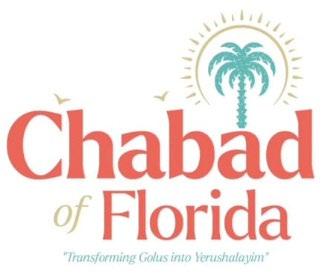
ד׳׳בח שטיוואבויל הדירולפ השמ הלע םורמל דחי םע ללכ תוחפשמ םיחולשה לכב םלועה םיכבמ ונא תא ותריטפ לש יאה ארבג אבר ןגס ר״וי זכרמה יניינעל ךוניח ר׳ויו סוניכ םיחולשה דידי תמא ללכל םיחולשה וניתנידמד דידיו ישיא טרפב תודסומל ךוניחה LEC רשא דמע ונינימיל הצעב הנובתב שעמבו ת"הרה ח"הרה השמ אדוהי יקסרלטוק ה׳ע םיחלושו ונא תא ונימוחנת ותחפשמל הרקיה ותגוזל תינברה הקבר ׳יחתש ונבל אלממ ומוקמ ברה םחנמ לדנעמ ׳יש לכלו ח׳צוי ויחיש וישעמב םיריבכה ןעמל יברה ומחונת תולגתהבו ונכלמ עשוונ ברה ןויצנב ףראק םשב יבא ירומ ברה םהרבא ׳יש ףראק םשבו לכ םיחולשה תנידמד הדירולפ
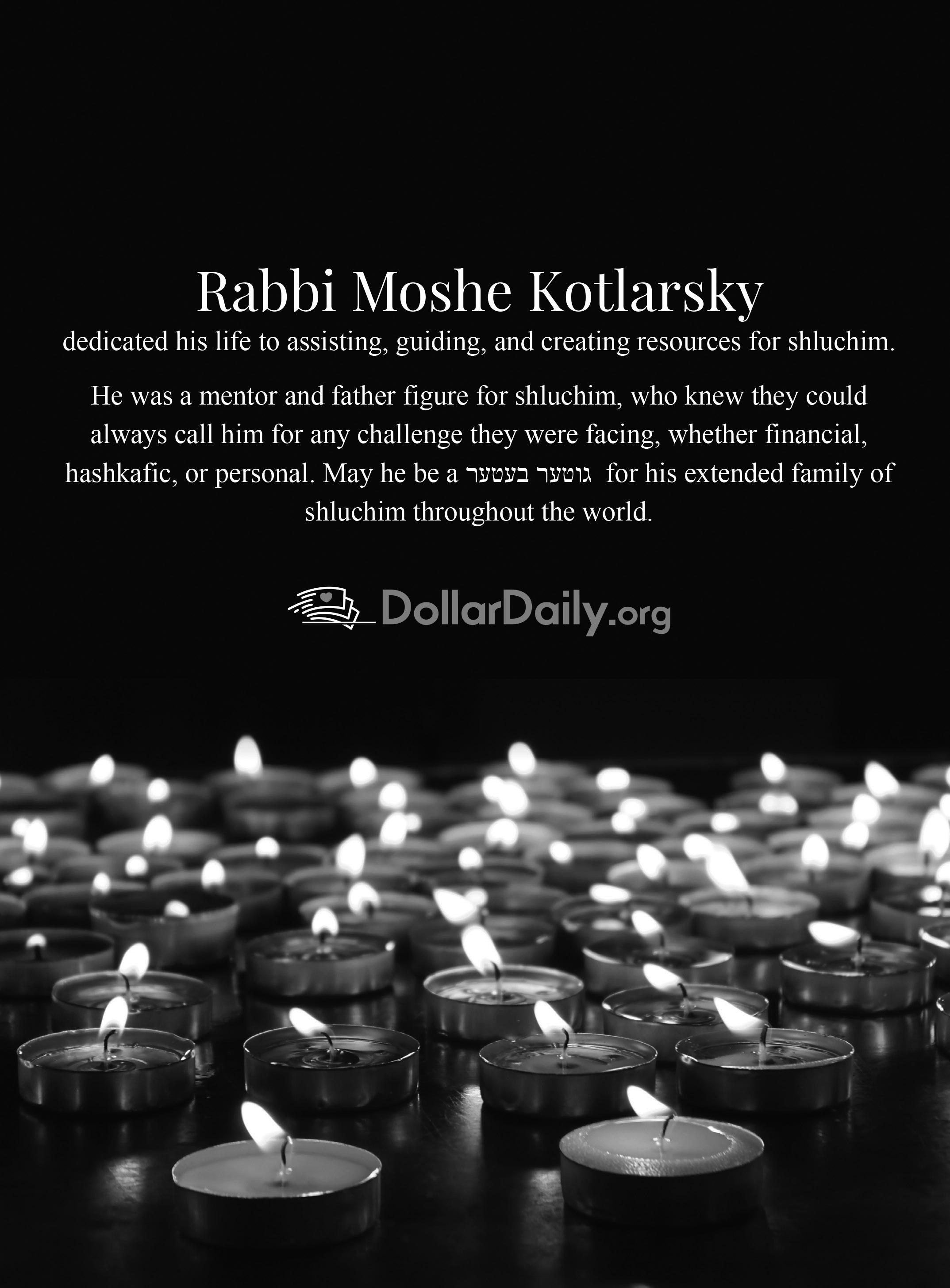
National Committee for Furtherance of Jewish Education and
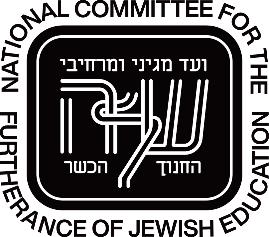
םימוחנת סוכ לש ותריטפ תא ונא םיכבמ ,בר ןוגיבו לודג רעצב ברה אדוהי השמ 'ר ןב ףסוי יבצ ה"ע יקסראלטאק הריטעמה ותחפשמ ינב לכל םיקומעה ונימוחנת תא ונא םירגשמ לבת יבחר לכב םיחולשה תחפשמו אבהלו ןאכמו ,םילשוריו ןויצ ילבא ראש ךותב םכתא םחני םוקמה בוט ךא םימיה לכ דימת םאצמי דסחו םייחה רורצב הרורצ ותמשנ אהת
all its divisions ר"ומדא ק"כ תוריכזמ תלהנה תחת
From the Bronx to Bluegrass
Shluchim
share personal stories about Rabbi Kotlarsky’s care
By Tzemach Feller
When I asked on a WhatsApp group for stories about Shluchim who were impacted by Rabbi Moshe Kotlarsky, of blessed memory, one Shliach replied, “Is there anyone who wasn’t?”
A few anecdotes can hardly do justice to a lifetime. Still, they can provide a window into the impact Rabbi Kotlarsky has had on the lives of so many of the Rebbe’s Shluchim and their communities around the world.
“I Was Sure No One Knew
Who I Was”
Rabbi Elazar and Shira Green moved to Lancaster, Pennsylvania, to open Chabad at Franklin and Marshall College. Lancaster is one of the oldest inland cities in the United States and has a prominent Amish community.
“I was 26 years old, moving to a town with 500 Jewish residents,” Rabbi Green related. “I was sure no one knew I was there.” But one day,
his father-in-law brought a group to Crown Heights and met with Rabbi Kotlarsky. He mentioned in passing that he had a son-in-law on shlichus in Lancaster.
“Oh yes, Rabbi Green,” was Rabbi Kotlarsky’s immediate rejoinder.
“My father-in-law was shocked,” says Rabbi Green. “Rabbi Kotlarsky had never visited us and had little to do with us, but we knew he cared. He knew who we were.”
Over time, they would come to know each other well.
Rabbi Green has developed the Grow Gelt fundraising boot camp and Rabbi Kotlarsky supported the effort and happily recorded a speech for its participants.
“You’re Shluchim of the Rebbe, and more than anything, you have to believe in the product you’re selling,” he passionately stated. “We have something that nobody has. Our success comes from one thing: because the Rebbe is watching and directing and giving us the brachos more than before.”
Two Bathrooms
Rabbi Shlomo and Chaya Litvin direct Chabad of the Bluegrass in Lexington, Kentucky.
“When we first moved out on Shlichus, we had a very hard time finding a house,” Rabbi Litvin recalled. “We were looking and looking for the right place, the right location, the right balance: should we live in the Chabad House or not?
In the end, we decided we would live in the same location at the beginning.”
Visiting New York, Rabbi Litvin approached Rabbi Kotlarsky. “Do you have any advice?” he asked.
“Yes,” Rabbi Kotlarsky. “Whatever you do, make sure the place has two bathrooms.”
“Ah, a private one and a family one,” Rabbi Litvin replied.
“No, a public one and one for your wife,” Rabbi Kotlarsky stated.
Rabbi Litvin says that at the time, he thought it was “just a cute
54 COLLIVE MAGAZINE - RABBI KOTLARSKY TRIBUTE


comment.” It wasn’t until years later that he realized what was really behind it.
“My wife is moving out on Shlichus, to a place where she is working 24/7 as a Shlucha, and her house has to be open to everyone,” he says.
“Everything has to be exactly where it is; people will be in every space; she’s not going to have a second for herself, not going to have a space for herself.
“He was telling me, ‘Make sure she has a space to get ready, a space where she feels comfortable.’ It was a moment of caring for a Shlucha, to ensure she had what she needed. Indeed, the very next place we
found, the first question I asked the realtor was how many bathrooms. When he said two, I said, ‘We’ll take it.’”
I Felt a Personal Connection
As a young man, Rabbi Yoel Caroline moved on Shlichus to Surfside, Florida, joining the team at The Shul of Bal Harbour led by Rabbi Sholom Ber Lipskar. When his second son was born, he was surprised to see Rabbi Kotlarsky show up at his house for the Sholom Zochor.
“Rabbi Kotlarsky was in town and
Rabbi Kotlarsky attends a new Mikvah dedication on the Korean Peninsula
Rabbi Kotlarsky attends a new Chabad Center dedication in Nashville, TN
COLLIVE MAGAZINE - RABBI KOTLARSKY TRIBUTE 55
walked a mile to attend the Sholom Zachar just because this was a Shliach having a simcha,” says Rabbi Caroline. “From that moment, I felt a personal connection.”
Some years later, when Rabbi Caroline was going through some significant challenges, Rabbi Kotlarsky visited Florida for the regional Kinus Hashluchim.
“We met, and he said to me, ‘I’m here to help you—if you want.’ He said it in an empowering way. I agreed, and he and his son R’ Mendy flew down later to help us out.”
He Went to Bat for Us
Rabbi Zalman and Tamar Teitelbaum are the Shluchim
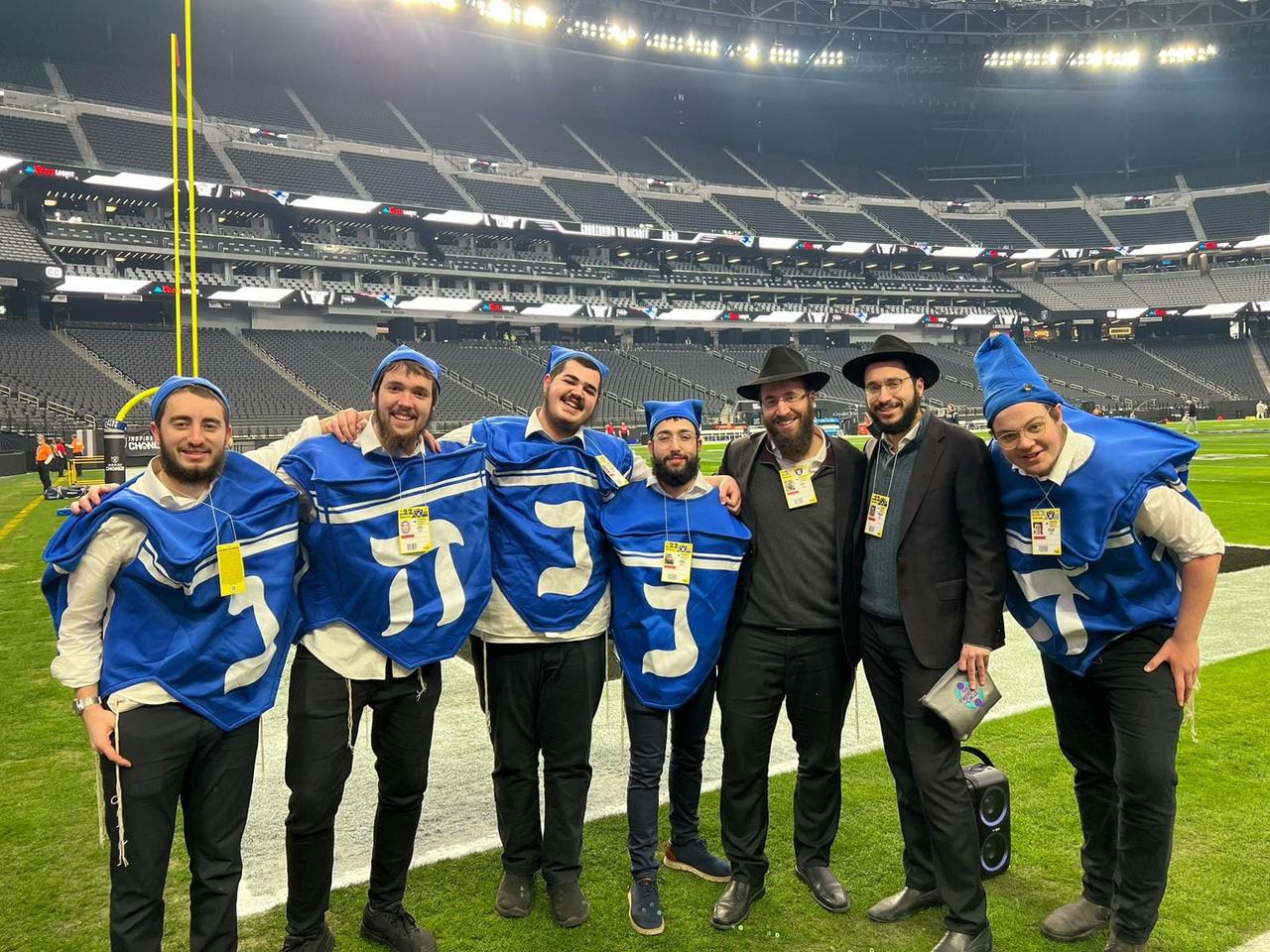

serving the Albert Einstein College of Medicine and nearby medical schools in the Bronx, New York.
When they first set out, they applied for a matching grant from the Rohr Family Foundation, which is facilitated by Chabad on Campus International, chaired by Rabbi Kotlarsky.
The Vaad of Chabad on Campus goes to great pains to ensure that the seed money is being invested wisely, in campuses where there is a high likelihood of success. Einstein didn’t seem like one.
“We’re a Chabad House that is specifically for a medical school,”
Rabbi Teitelbaum told COLlive. “So when we were applying for the grant, the Vaad was very conflicted.” Graduate students often live at home
and are rarely in school over the weekend. “At the time, everyone else was working on undergrad, and they said medical students never show up,” he said.
The Vaad voted, and they reached a tie. Rabbi Kotlasky was the one who cast the tiebreaking vote in favor.
“Reb Moshe really pushed it through; he went to bat for us,” said Rabbi Teitelbaum. “It’s in his zechus that this was able to happen.”
Today, the Teitelbaums direct the thriving Rohr Chabad House for the Medical Community because Rabbi Kotlarsky saw potential beyond that which was conventional.
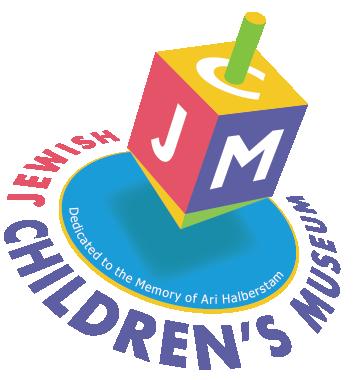
We mourn the passing of Rabbi Moshe Yehuda ben Yosef Tzvi Kotlarsky of blessed memory
R' Moshe had a deep and heartfelt commitment to the Jewish Children's Museum. Throughout the years, he provided unwavering support, financial and otherwise. His dedication and care for the Museum were unparalleled, and his contributions have left an indelible mark on our community.
We extend our heartfelt condolences to his family and children during this difficult time. May Hashem grant them comfort and strength
The
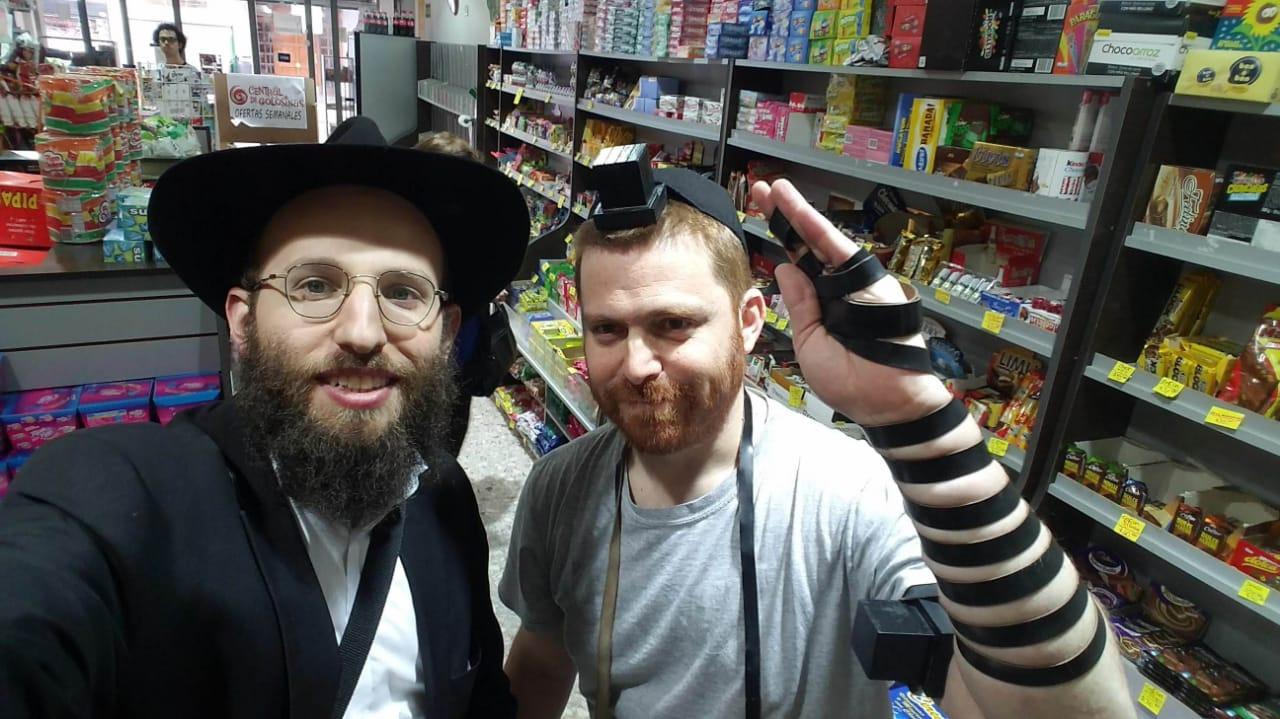
Hanhalah
of the Jewish Children’s Museum
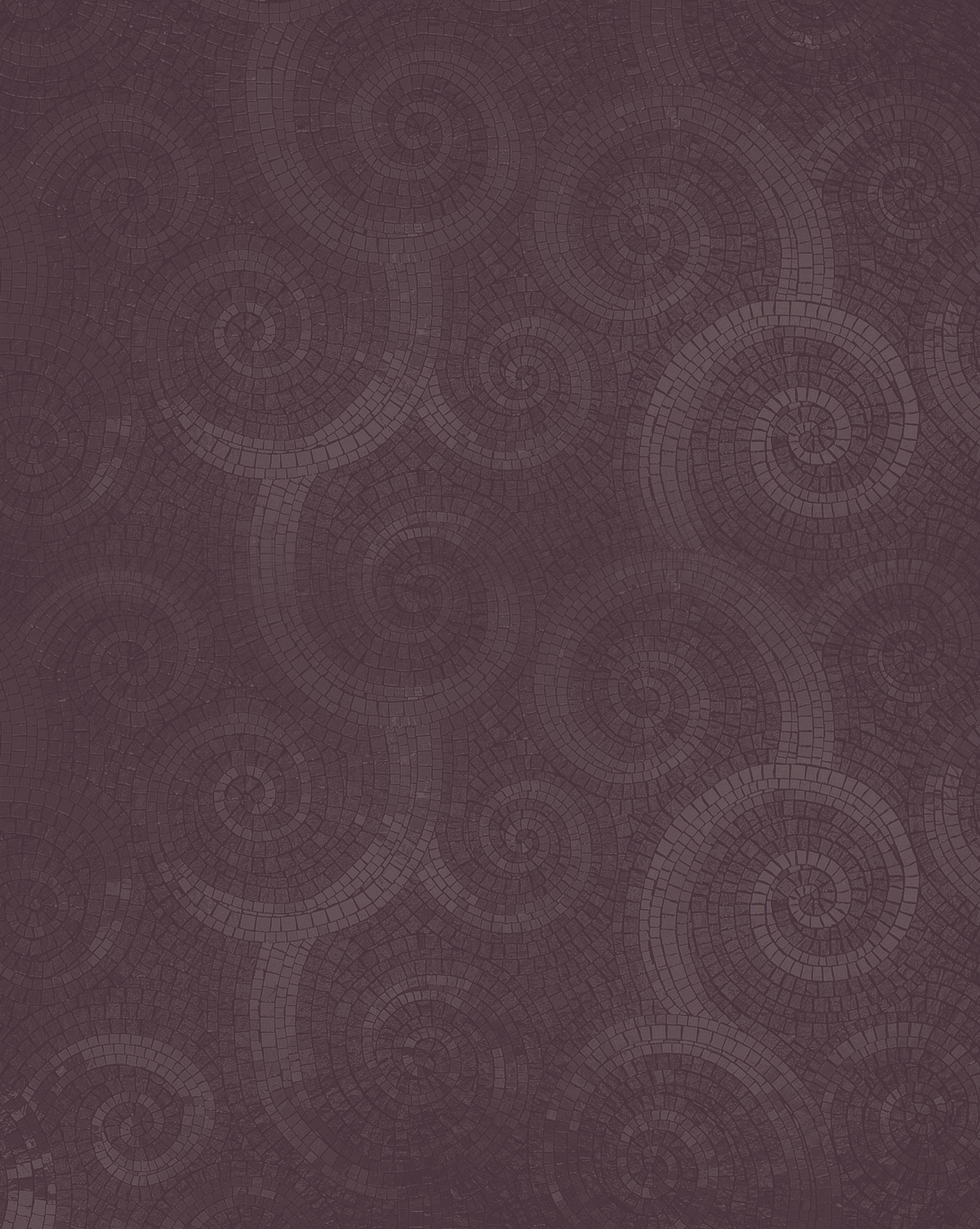
COLLIVE MAGAZINE - RABBI KOTLARSKY TRIBUTE
Mikvah

With pained hearts, we wish condolences to the entire Kotlarsky family on the passing of a true champion for Chabad mosdos big and small. With a personal touch, he assisted and led.
Rabbi Moshe Kotlarsky ל"ז
We are forever greatful.
MEI CHAYA MUSHKA
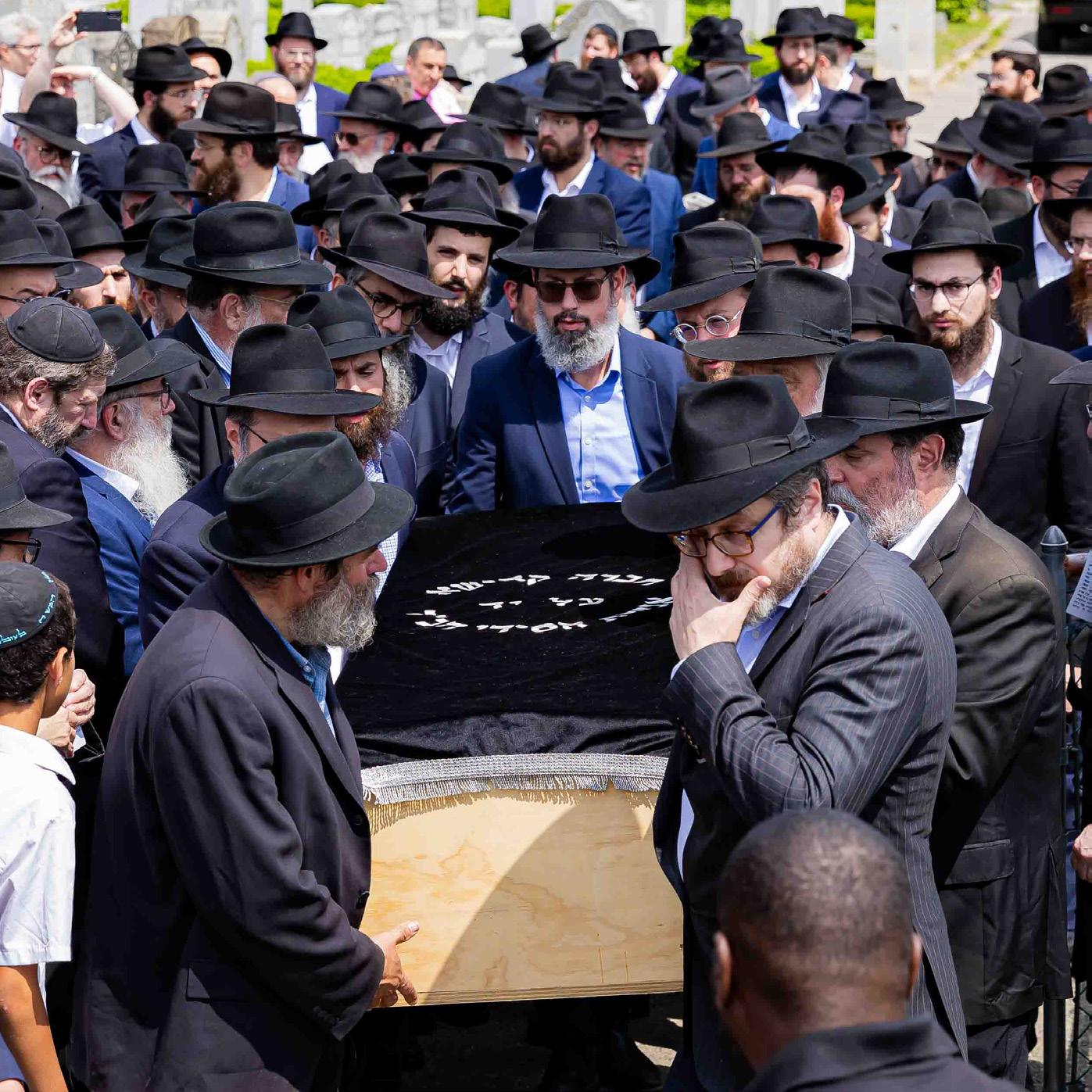
Thousands Farewell
The levaya of Rabbi Moshe Kotlarsky, Vice Chairman of Merkos L'inyonei Chinuch and Chairman of the International Kinus Hashluchim, was held on Wednesday, 28 Iyar, 5784 in New York.
It passed by his home on Crown Steet in Crown Heights and then Lubavitch World Headquarters770 Eastern Parkway, where his office was located. The procession continued to the Old Montefiore Cemetery in Cambria Heights, Queens, where he was buried.
Photos: Aharon Gellis, Yossi Jerufi



60 COLLIVE MAGAZINE - RABBI KOTLARSKY TRIBUTE
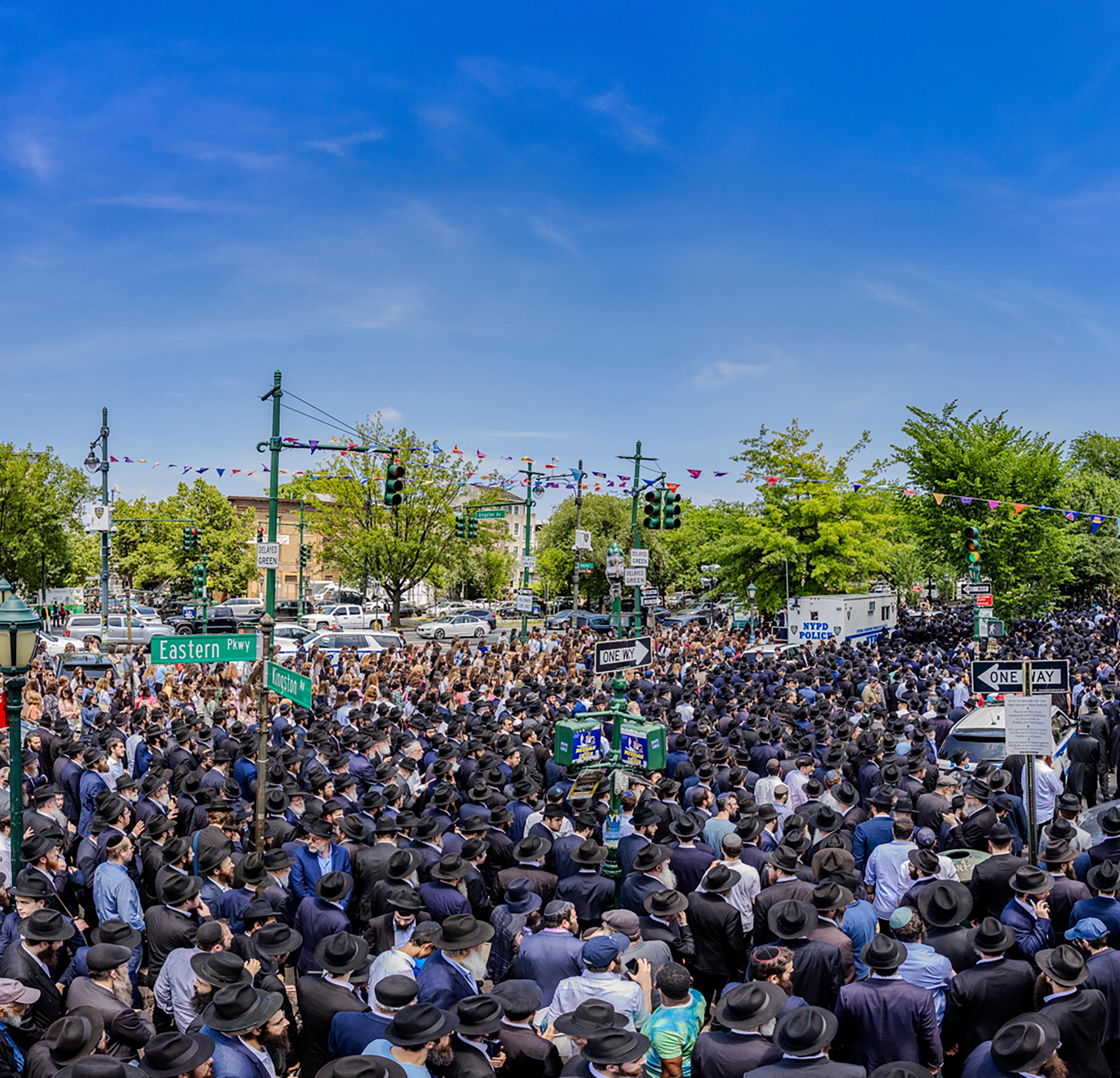
COLLIVE MAGAZINE - RABBI KOTLARSKY TRIBUTE 61

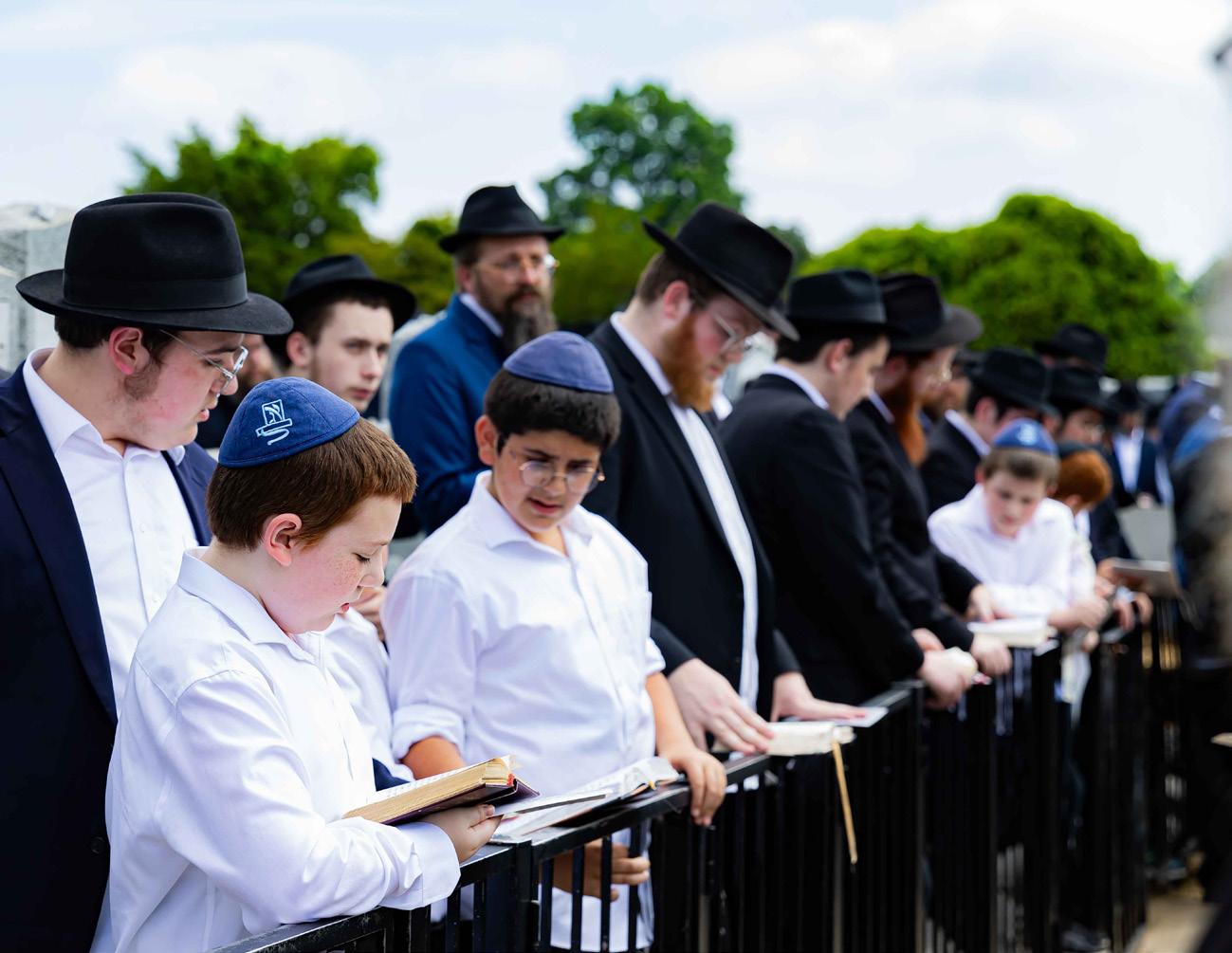
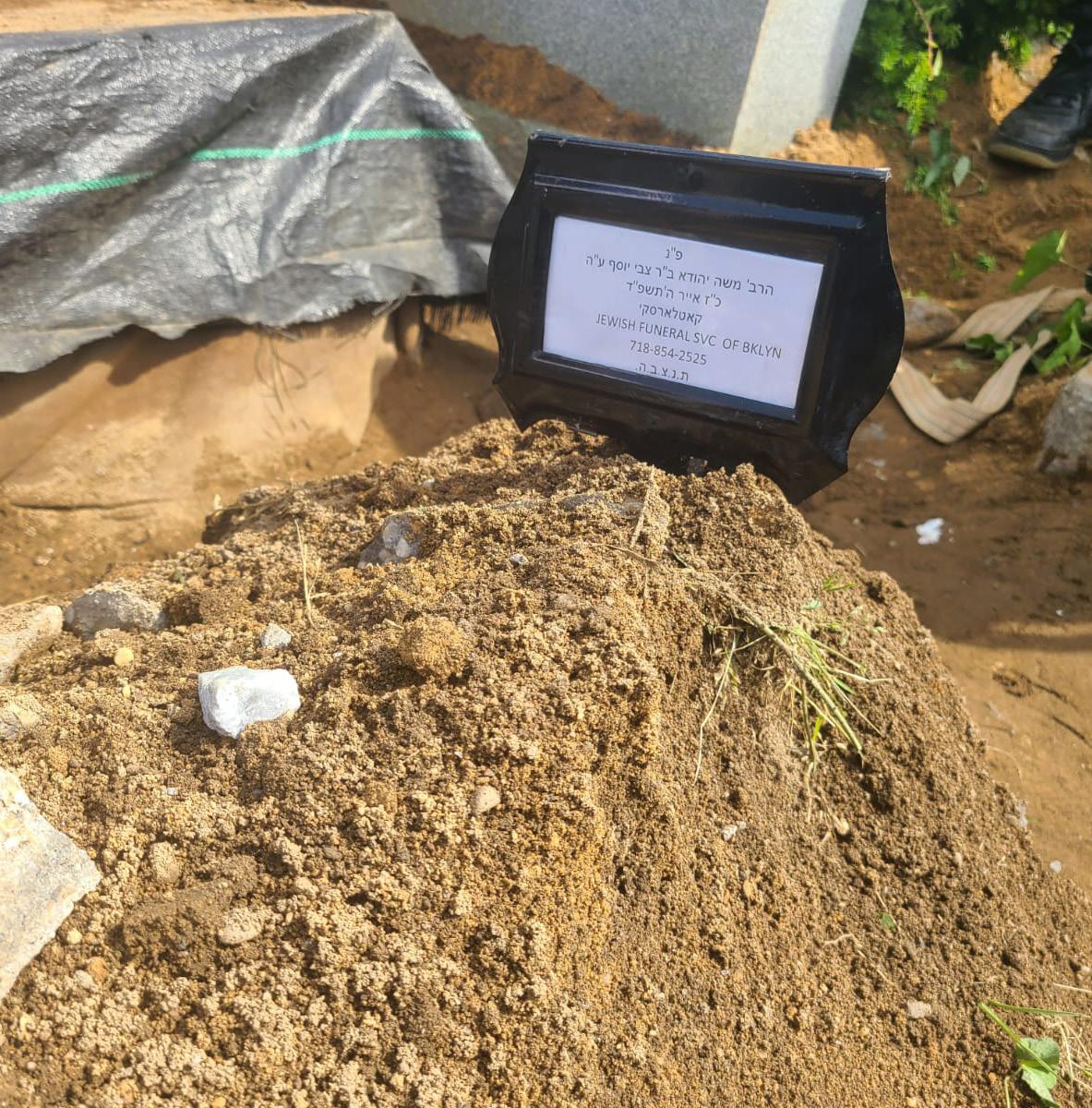
62 COLLIVE MAGAZINE - RABBI KOTLARSKY TRIBUTE

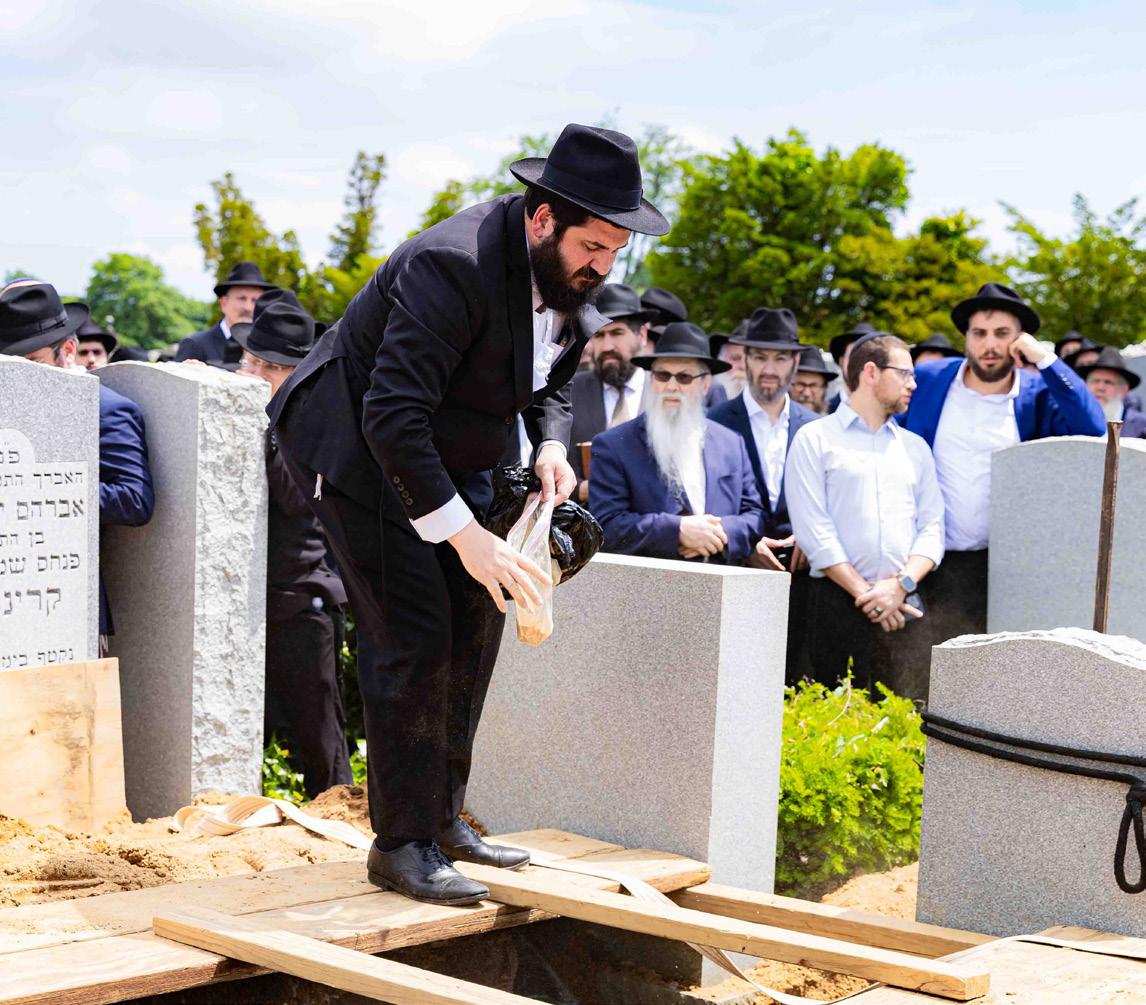

COLLIVE MAGAZINE - RABBI KOTLARSKY TRIBUTE 63
MAKE HERE ERETZ YISROEL
Remarks to participants of the Land and Spirit trip to the Holy Land in 2008
By Rabbi Moshe Kotlarsky
The Megillah describes how Queen Vashti refuses to submit to her husband’s demands and Achashverosh calls a meeting of his seven top advisers, Haman among them, to decide what to do.
Later in the Megillah, Achashverosh again has to make a decision; this time whether to acquiesce to Haman’s request to wipe out all the Jews in his empire. Yet this time Achashverosh feels no need to call his advisors. He is perfectly happy to agree to Haman’s offer to kill every Jew, even refusing his offer of 10,000 silver coins.
I was once in Berlin at a holocaust memorial event, attended by world leaders from all over. My good friend Ignatz Bubis, a special Polish Jew who became an activist for German Jewry after the war, came over to me and said: ‘Reb Moshe, m’tar nisht fargesen’ - ‘Lest we forget’. I responded, ‘What are we going to do so that we don’t forget? We need to educate
the next generation so that we do not forget. If we don’t do that, they are bound to forget!’
After the yidden constructed the mishkan, we find that Moshe uttered a special prayer “May it be Your will that the Shechinah should rest in your [the Jewish people’s] handiwork.” While this seems like a prayer to Hashem to bring His presence into the work of the yidden, it can also be understood as a plea to the yidden. Moshe was telling them, ‘may it be that you should wish to bring the Shechina into your life’. It is not enough that Hashem brings his presence, we need to create the space for that by acting in a way that brings the Shechina into our lives.
The Tzemach Tzedek had a chossid who desperately wished to move to the Land of Israel, to experience the sanctity and holiness of our homeland. The Rebbe told him “Mach da Eretz Yisrael” - “Make this place [where you live] Eretz Yisrael”. We all

64 COLLIVE MAGAZINE - RABBI KOTLARSKY TRIBUTE
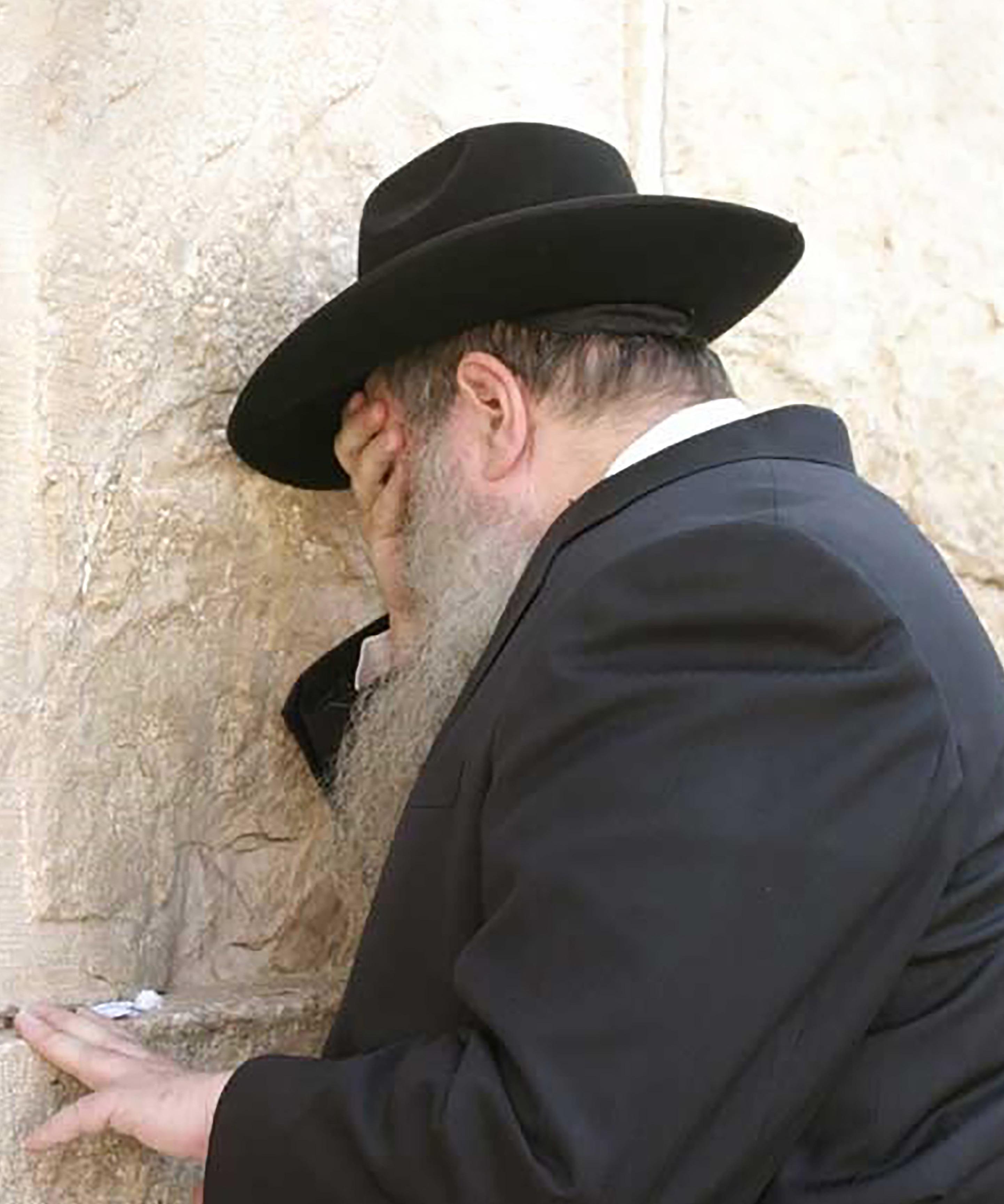 Photo: Shmuel Ben Tzvi
Photo: Shmuel Ben Tzvi
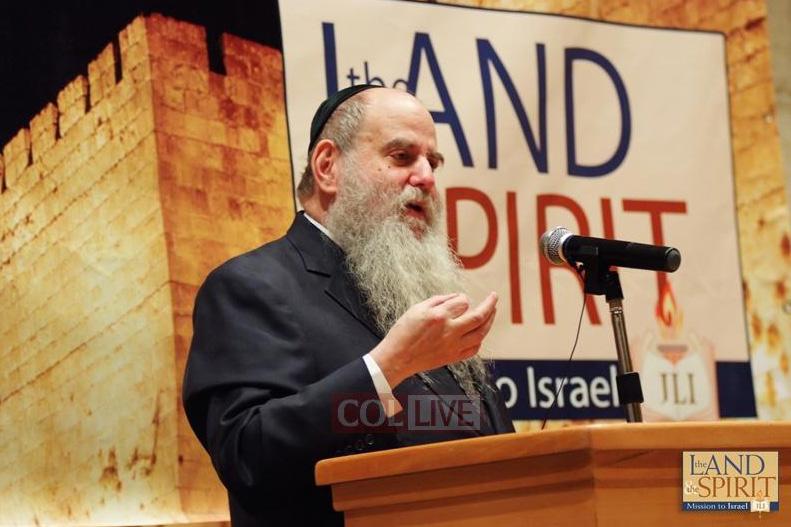
wish to be in Eretz Yisrael together with all our brothers and sisters from around the world, but that day will come with Moshiach. Until then, we must make our communities an Eretz Yisrael.
This must express itself in every area of our lives by adding a few minutes of Torah to our day, making sure that the women that we know light Shabbos candles, and that the men wrap tefillin. That is how we transform our communities into holy, sacred places and turn darkness into light.
The story is told of a chassid of the Baal Shem Tov who asked to be shown Eliyahu Hanavi. Shortly before Rosh Hashana, the Baal Shem Tov told him that his opportunity to see Eliyahu had arrived. He
instructed him to load up a wagon with provisions and spend Rosh Hashanah in a remote cabin in the mountains.
The chassid dutifully followed the Rebbe’s instructions but all he found there was a widow and her orphaned children living there in abject poverty. After Rosh Hashanah, the chassid reported to the Baal Shem Tov what had happened and that he had not seen Eliyahu. The Baal Shem Tov told him to repeat what he had for Yom Kippur and this time he would surely see him.
Once again, the chassid loaded up a wagon and set out. As he approached the cabin, he heard from inside the sound of a hungry child crying to his mother for food.
“Don’t worry”, said the mother gently. “Hashem sent us Eliyahu Hanavi before Rosh Hashanah; he’ll send him again for Yom Kippur.”
The Chabad shluchim all over the world, in the most far flung places and remote islands act as Eliyahu Hanavi for their communities, bringing light, happiness and Hashem’s presence into the lives of each and every Jew that they encounter.
And this is a calling we all must heed; to be that Eliyahu Hanavi that seeks to make a real difference by adding in mitzvos and studying Torah to change the world for the better.
66 COLLIVE MAGAZINE - RABBI KOTLARSKY TRIBUTE
'יחת To Rebbetzin Rivka Kotlarsky
And her dear children
Mrs. Chanie Wolowik, R’ Mayer Kotlarsky, Mrs. Sarah Benjaminson; Mrs. Nechama Greenberg, Rabbi Mendy Kotlarsky, Rabbi Sruly Kotlarsky, Rabbi Levi Kotlarsky, Rabbi Dovid Kotlarsky, Mrs. Goldie Perlstein, grandchildren and great-grandchildren
Our hearts are shattered by the unthinkable loss of our dear
May Hakadosh Baruch Hu comfort you amongst the mourners of Tzion and Yerushalayim
May we be immediately reunited together with The Rebbe with the imminent revelation of Moshiach Now!
Rabbi Boruch Shlomo Eliyahu Cuni and the family of The Rebbe’s Shluchim t on the West Coas
n
לש סוכ
ןימוחנת
ה״ע ףסוי יבצ ברה ןב הדוהי השמ ברה ם ילשוריו ןויצ ילבא ראש ךותב םכתא םחני םוקמה
ר פע ינכוש וננרו וציקהו
A BLANK CHECK TO THE REBBE
3 Stories Rabbi Moshe Kotlarsky shared at the “Zoom farbrengen” of the Virtual Kinus Hashluchim 5780
Wedding Gift
I got married on 23 Kislev, 5731. On the day of my wedding, while I was waiting in the mazkirus office to receive the Rebbe’s siddur, the Rebbe called from his room and I heard Rabbi Groner say to the Rebbe: “Er iz da” - “He is here” (I assumed that meant me), and “Er iz oichet da” - “He is also here” (probably referring to Rabbi Hodakov). I then heard him say to the Rebbe: “I will ask him.” Rabbis Groner and Hodakov approached me and said that the Rebbe wants to print a maamar of the Mitteler Rebbe and he wants to know if I would like to make a dedication for it in honor of the wedding. I immediately agreed and Rabbi Groner telephoned the Rebbe to inform him of my response. The Rebbe then came out and gave me the siddur and a bracha.
The maamar was
. After the wedding, I approached Rabbi Hodakov and asked how much I should pay for the dedication. He answered me:
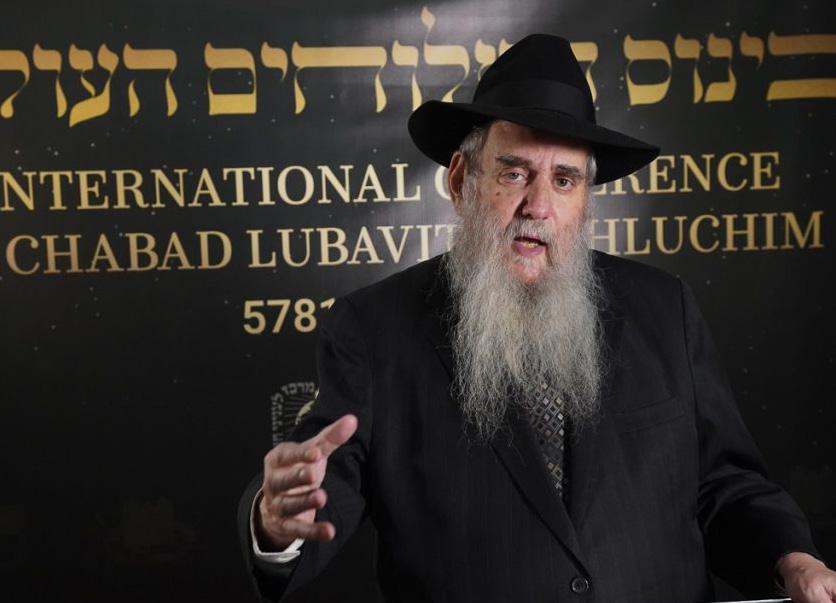
“If you want to pay for the printing, here is the receipt, it cost $91.45. If you want the zechus to be yours, you have to ask the Rebbe.” I asked him how I should ask the Rebbe, to which he replied that I should take a blank check, send it to the Rebbe, and ask the Rebbe how much I have to pay. I didn’t have a bank account then, so he told me to go to the bank, open an account and take out a checkbook.
And so it turned out that the first check I ever sent was to the Rebbe.
I sent the Rebbe a blank check along with a letter. In the letter, I wrote about my sheva brachos that took place in Cleveland which was attended by Rabbis Gifter, Sorotkin and Stein (heads of the Telzer yeshiva in Cleveland) and added that I had said a sicha of the Rebbe there.
68 COLLIVE MAGAZINE - RABBI KOTLARSKY TRIBUTE
ןיבהל ה”ד םידורבו םידוקנ םידוקע
ןינע
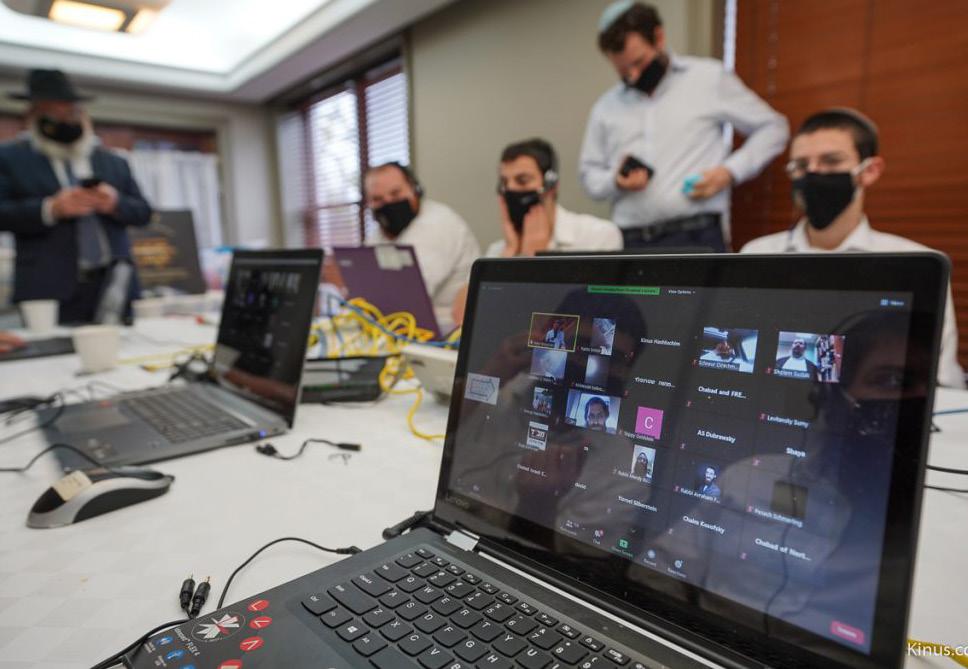
Regarding the sicha I recited, the Rebbe wrote: “הזב טוקש היהה? - “Was there a discussion about it? And regarding the check, the Rebbe wrote: “Regarding the blank check, they should discuss it together and write an amount based on what is written in [Shulchan Aruch] Yoreh Deah Siman 249 - a fifth (chomesh) of the dowry and wedding gifts.”
I asked Rabbi Hodakov if the chomesh should be from money we received or also from actual gifts and other items. The Rebbe’s answer was that it should also be given from those items. (Rabbi Hodakov told me that we needn’t estimate their value based on the price in Bloomingdales [a luxury chain store] but rather based on the price in ‘Jones Bargain Store’.). Indeed, for several months after the wedding, we brought the Rebbe chomesh from the gifts we continued to receive.
At that time, the Rebbe was encouraging people to buy shares in the Chebra organization who were buying properties that were for sale in Crown Heights. The Rebbe wrote to me that if I buy shares I can reduce the amount I spend from what I pay the Rebbe.
Easing the Rebbe’s Pain
II can’t go into too much detail, but there was once something that happened which deeply bothered the Rebbe. After some time, the Rebbe told Rabbi Hodakov to talk to me about it and see what I could do. Rabbi Hodakov spoke to me, and when I asked him what I should do about it, he said he would ask the Rebbe. The Rebbe’s answer was: “If he doesn’t understand on his own, I don’t need to tell him.” When Rabbi Hodakov conveyed the Rebbe’s response to me, I put everything else aside and b”h succeeded in resolving the issue. The Rebbe’s satisfied feedback to this news included the words “Ashrei Chelko” - “Happy is his lot.”
Nevertheless, I was still very broken by the whole affair, because I had known about the issue already for a few months prior to this and I could have spared the Rebbe a lot of anguish by resolving it sooner.
I wrote a letter to the Rebbe asking what I should do to make up for my lack of initiative that had caused him so much pain.
The Rebbe’s response was: “‘L’fum tza’ara agra’ - ‘Commensurate with the pain is the reward’. You should open two new branches of Merkos L’inyonei Chinuch (the outreach wing of Lubavitch) in the coming month.”
55 Years in the Making
During the course of my travels to South America, I met a wealthy Jewish family in Guatemala who went on to contribute large sums of money to the Rebbe’s activities.
One day, I received a message from them telling me that their daughter had gotten engaged and the wedding was going to take place in New York. They asked me to officiate the wedding which was set to take place on 14 Kislev, 5744.
Some time before the wedding, I met with the kallah and chosson, and it emerged that the groom’s greatuncle was the famous Rabbi Zvi Yechezkel Michelsohn of Plonsk, a member of the Rabbinical Council of Warsaw before the war, who had also attended the Rebbe’s wedding.
At that meeting, the chosson told me that his father had disconnected himself from yiddishkeit entirely and was completely irreligious because of everything he had gone through in the war, including watching his illustrious uncle be taken away by the Nazis.
On 11 Kislev, a few days before the wedding, I wrote a note to the Rebbe regarding the wedding in which I mentioned that the chosson’s great uncle was Rabbi Michelsohn of Plonsk.
On the day of the wedding, the Rebbe went to the Ohel and while he was there, I received a message from Rabbi Krinsky that the Rebbe had
COLLIVE MAGAZINE - RABBI KOTLARSKY TRIBUTE 69
responded to my note.
The Rebbe circled the name Rabbi Michelsohn and wrote:
“I believe he attended my wedding, and gave me his sefer as a gift.
“(It is sitting on the bookshelf in my office next to the [Midrash] Tanchuma by the light.)
“I am lending it to him [Rabbi Kotlarsky] to hold at the time of the siddur kiddushin [marriage ceremony] and the recital of the berachos, and we will see a hashgocho protis 55 years in the making.”
The Rebbe meant that I should bring the sefer he had gotten as a gift to the wedding and “we will see a hashgocho protis 55 years in the making”.
I went with Rabbi Groner to take the sefer from the shelf (where it still
sits to this day) and then left to the wedding hall. When I arrived, the chosson was busy with pictures, so I went over to his father and told him what the Rebbe had said and showed him the sefer. He opened up to the first page and saw the following written in the Rebbe’s holy handwriting: From the library of Menachem Schneerson, 14 Kislev 5689. Exactly 55 years earlier the Rebbe had received that sefer from his uncle. He burst out in audible sobs for almost 20 minutes.
Being that the kallah was from a respected family, many prominent rabbis were present. I approached the brother of the kallah and asked him who would be reciting the berachos under the chuppah. He told me to speak to the kallah directly. She told me that no one besides myself should be called upon for a kibbud; the only person who

actually cared about her was the Rebbe, she said. All the others were just there to get a check from her father, and they’ll get one…
I felt uncomfortable about this but I remembered that the Rebbe had said that I “should hold it [the sefer] during siddur kiddushin and the recital of the berachos”. The Rebbe had foreseen that I would recite the berachos.
At the beginning of the chuppah, I told the crowd that, per the Rebbe’s instructions, I was holding the sefer which the Rebbe had received from the kallah’s great uncle on that very night 55 years earlier.
The next day, we hosted the sheva berachos at my house. The chosson’s father agreed to put on tefillin, his first time since the war.
The Jewish Future Alliance mourns the passing of Rabbi Moshe Kotlarsky a friend and mentor in all of our work. His death is a great loss to both the international and New York Jewish communities
Yaacov Behrman, Mendy Margolin, Shmuel Kazen
70 COLLIVE MAGAZINE - RABBI KOTLARSKY TRIBUTE
ןימוחנת לש סוכ
With profound sadness and broken hearts, we express our condolences to Morah Rivkah Kotlarsky יחתש '
a beloved Mechaneches and teacher in Bais Rivkah High School who continues to inspire hundreds of students, and to her daughters, our dear alumni
Upon the הריטפ of their illustrious husband and father, The Rebbe’s Shliach
Vice Chairman of Merkoz L’inyonei Chinuch
Who was endlessly devoted to the thousands of Shluchim around the world and whose selflessness, kindness and warmth touched countless lives.
May you and your family find comfort knowing that his legacy lives on and will remain a source of strength and inspiration to the entire community.

The administration, Principals, and Students of Bais Rivkah
ח״הרה ׳ר ת״הרה יבצ ףסוי ןב הדוהי השמ יקסראלטוק


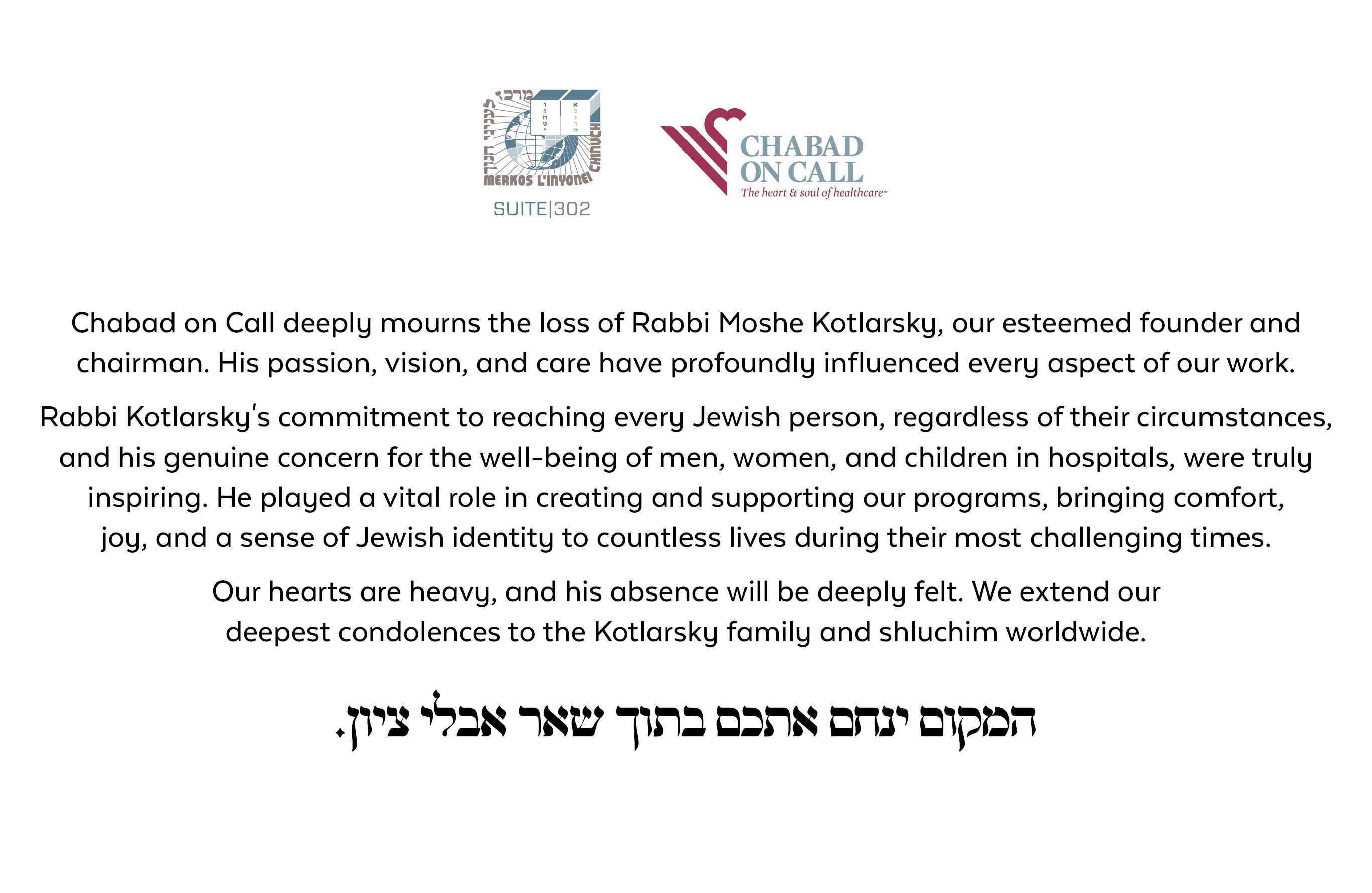
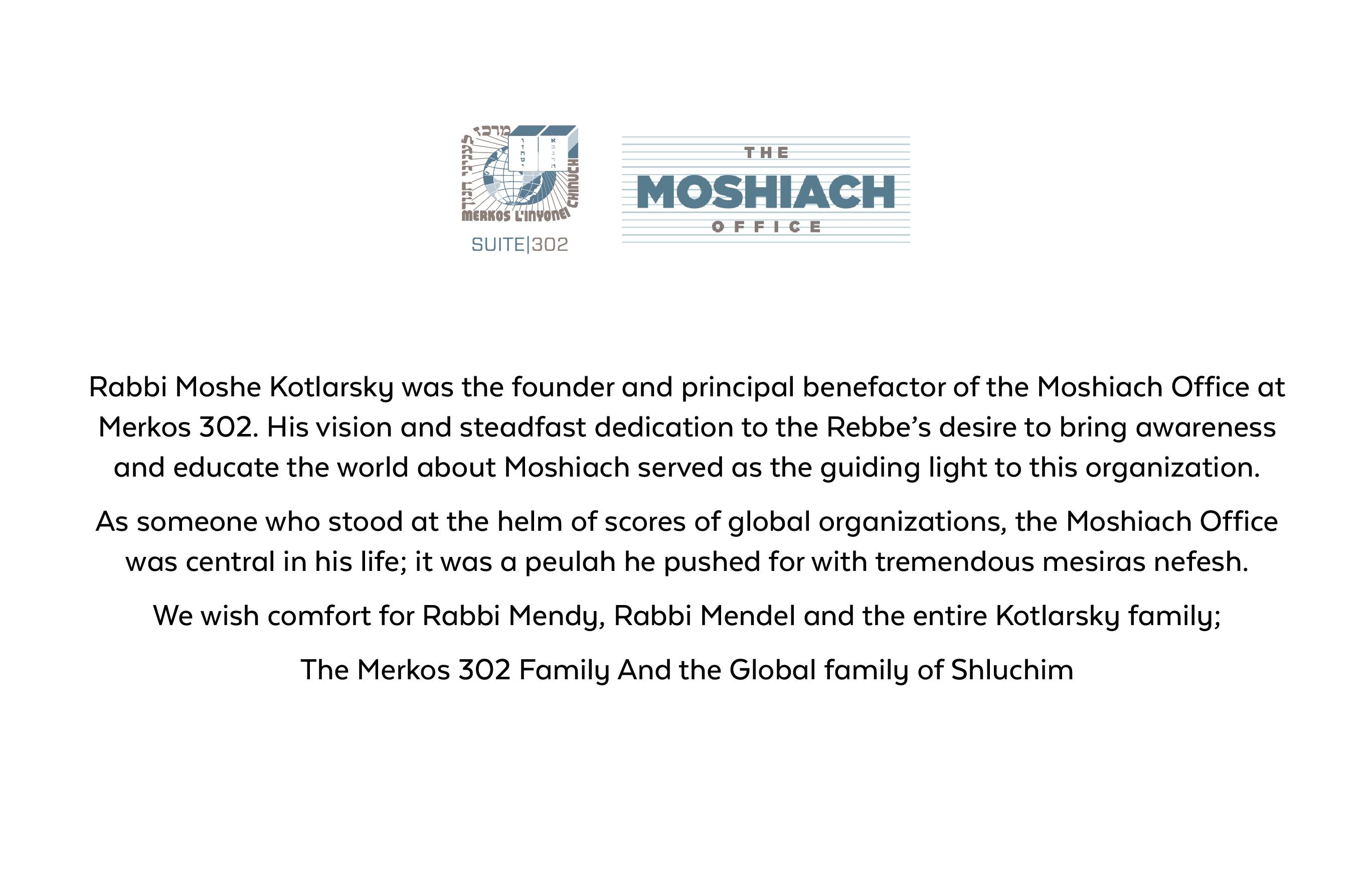

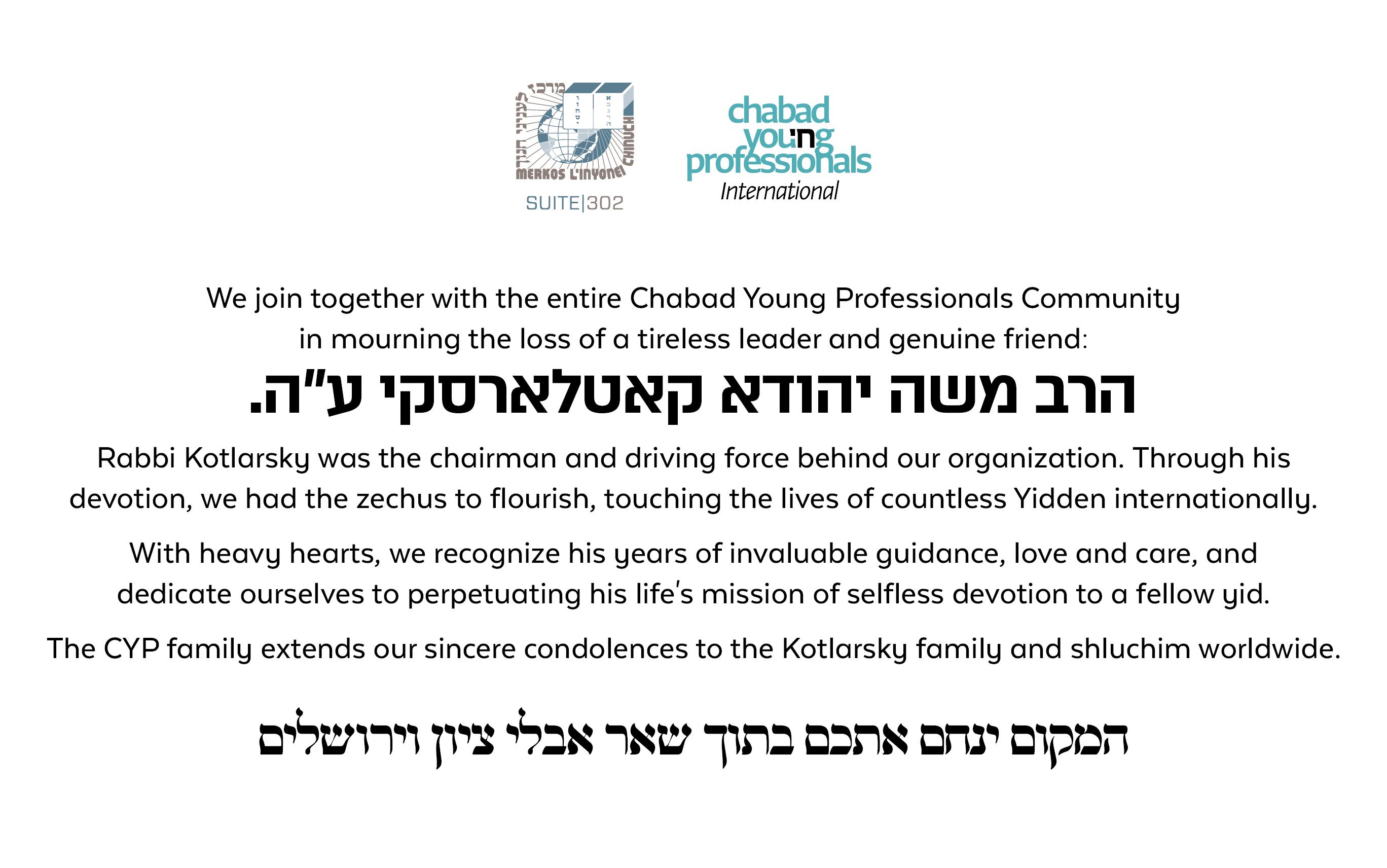
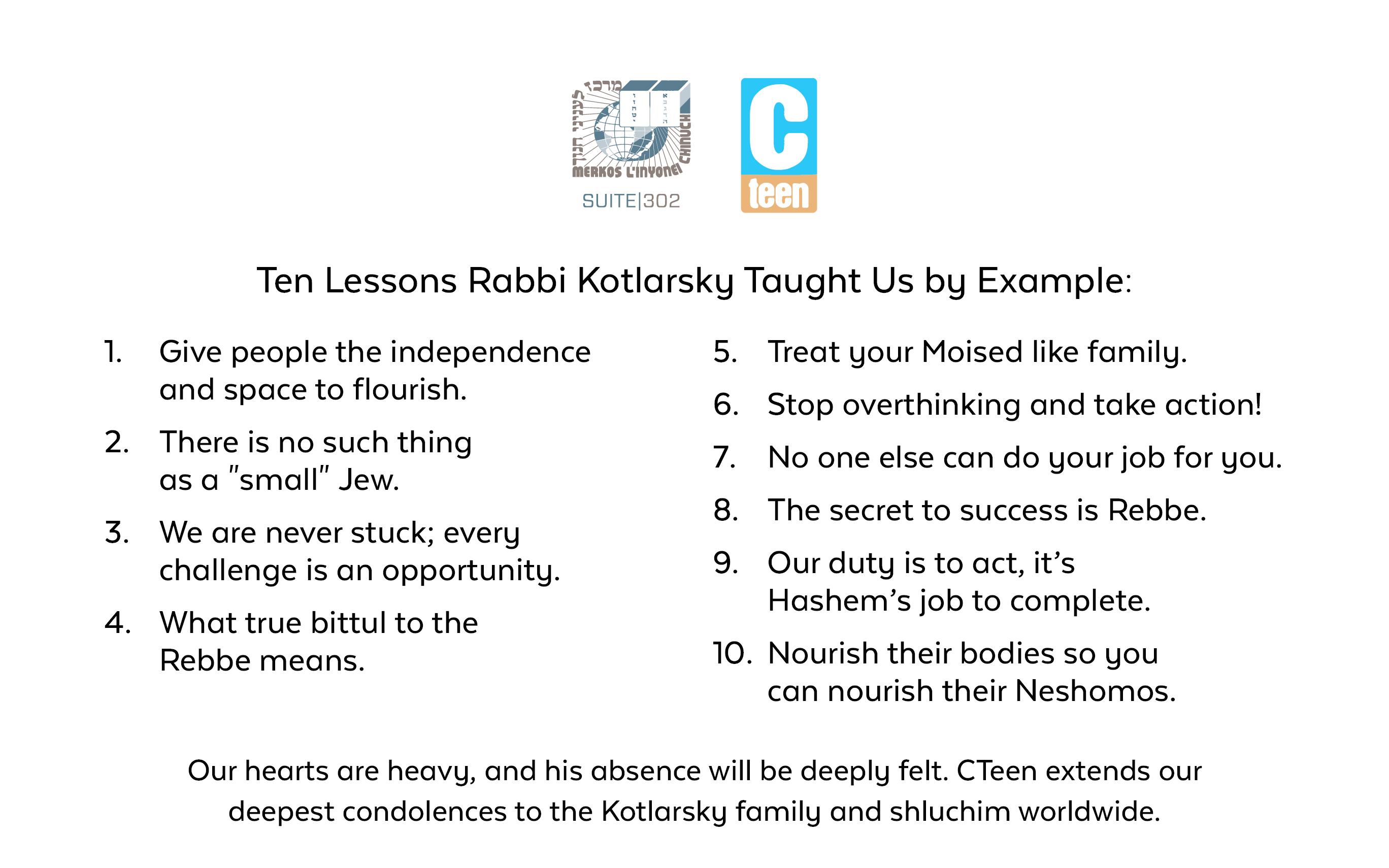
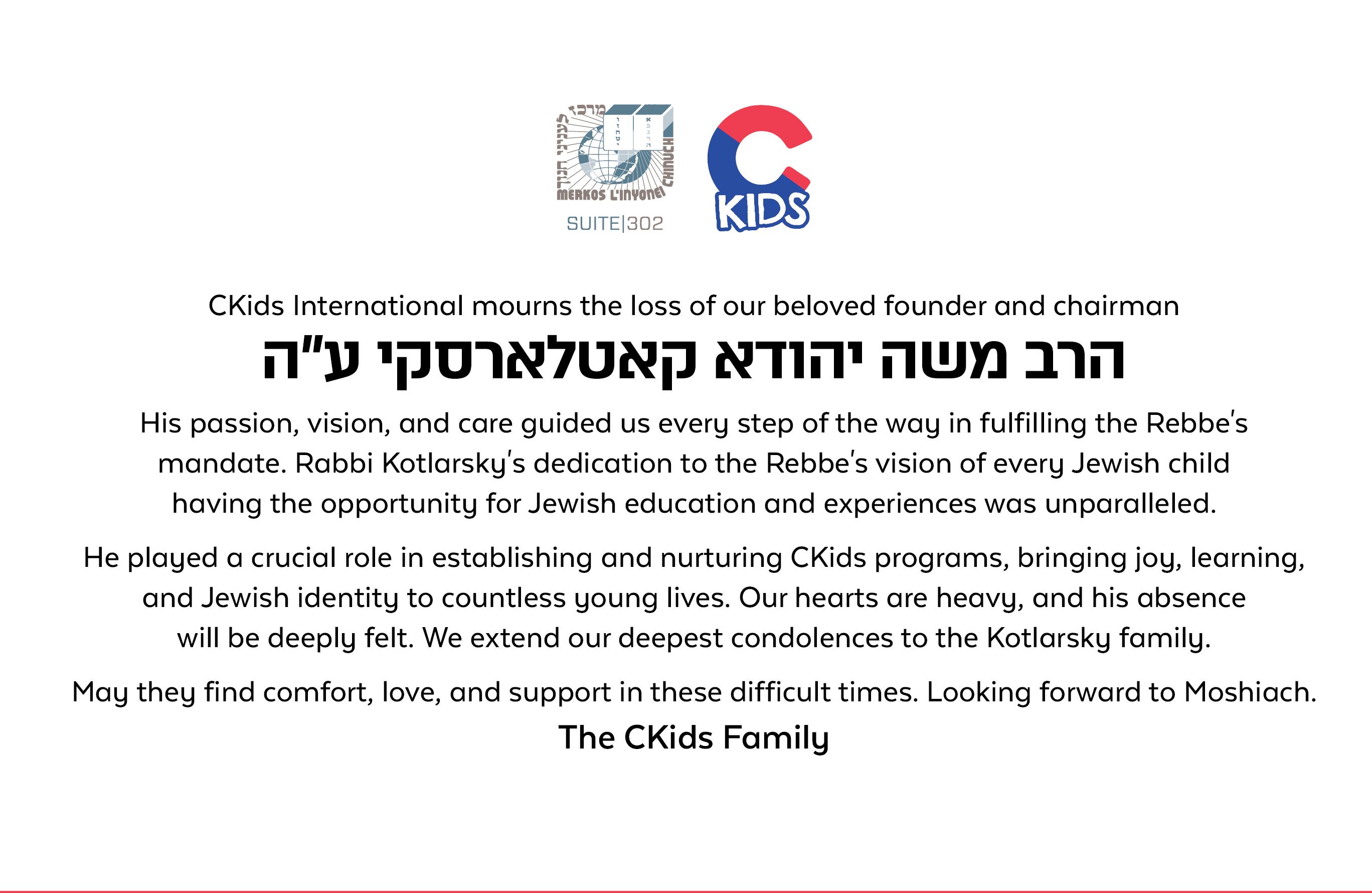
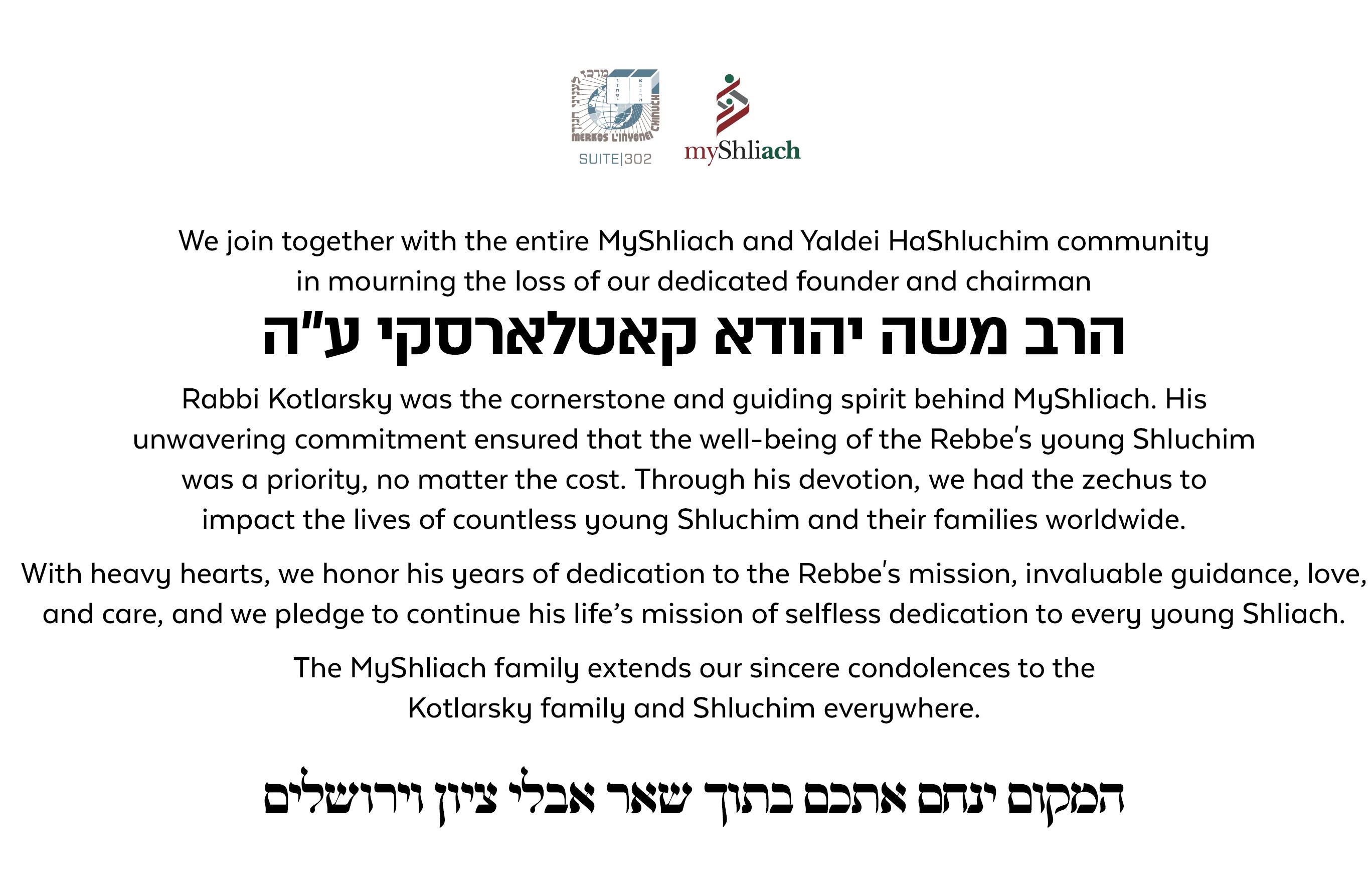
Our sincere condolences to the entire esteemed Kotlarsky family (Especially sister Fraidel) upon the tremendous loss of
Having been to over 1000 Chabad Centers worldwide we’ve seen his major rolein Chabad’s expansion-in the last 2-3 decades
We lost a bright shining light and pillar To Chabad Shluchim worldwide
Rabbi Mendel and C. Rochel Duchman Los Angeles California
סוכ
םימוחנת
יקסראלטאק ה״ע אדוהי השמ ברה
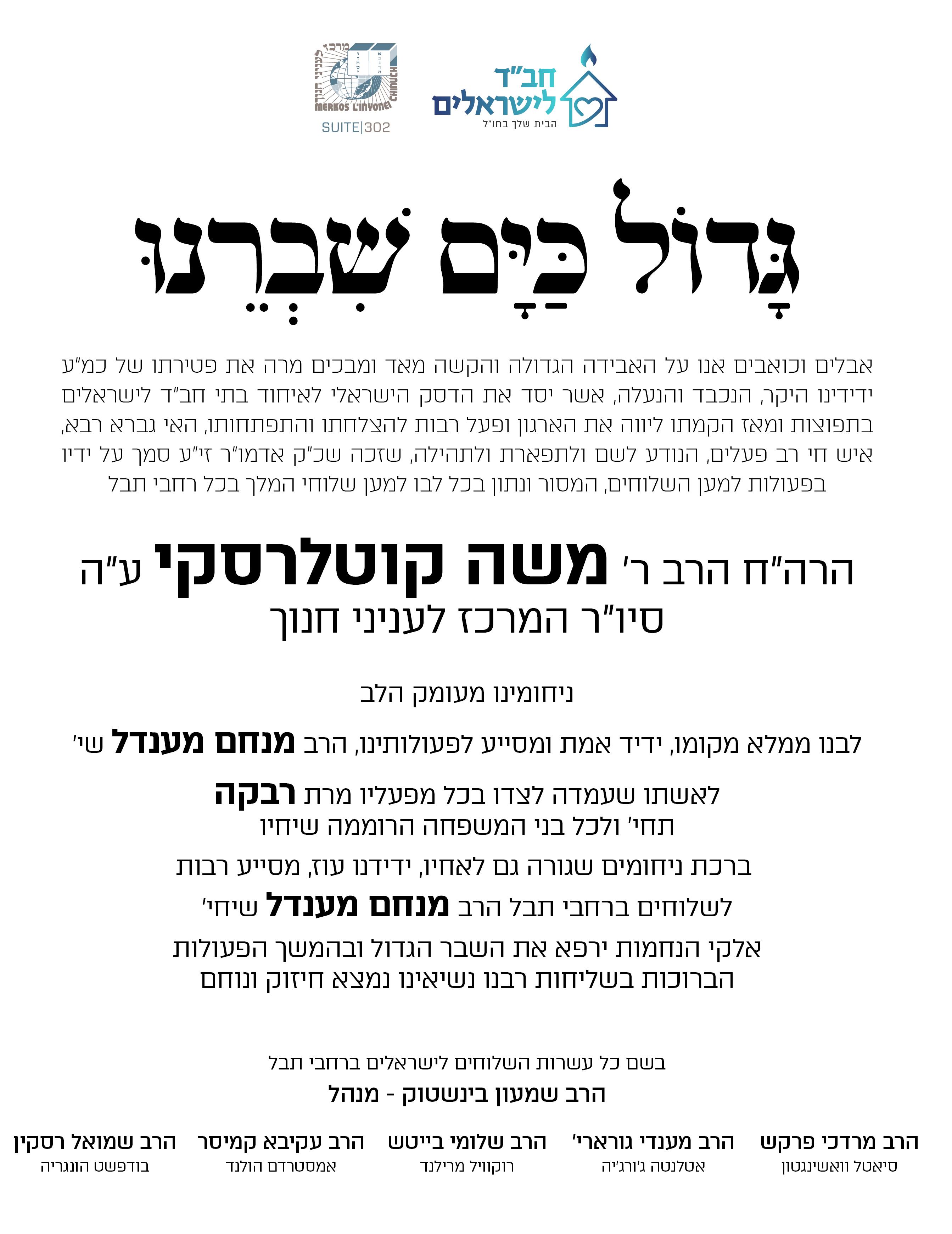
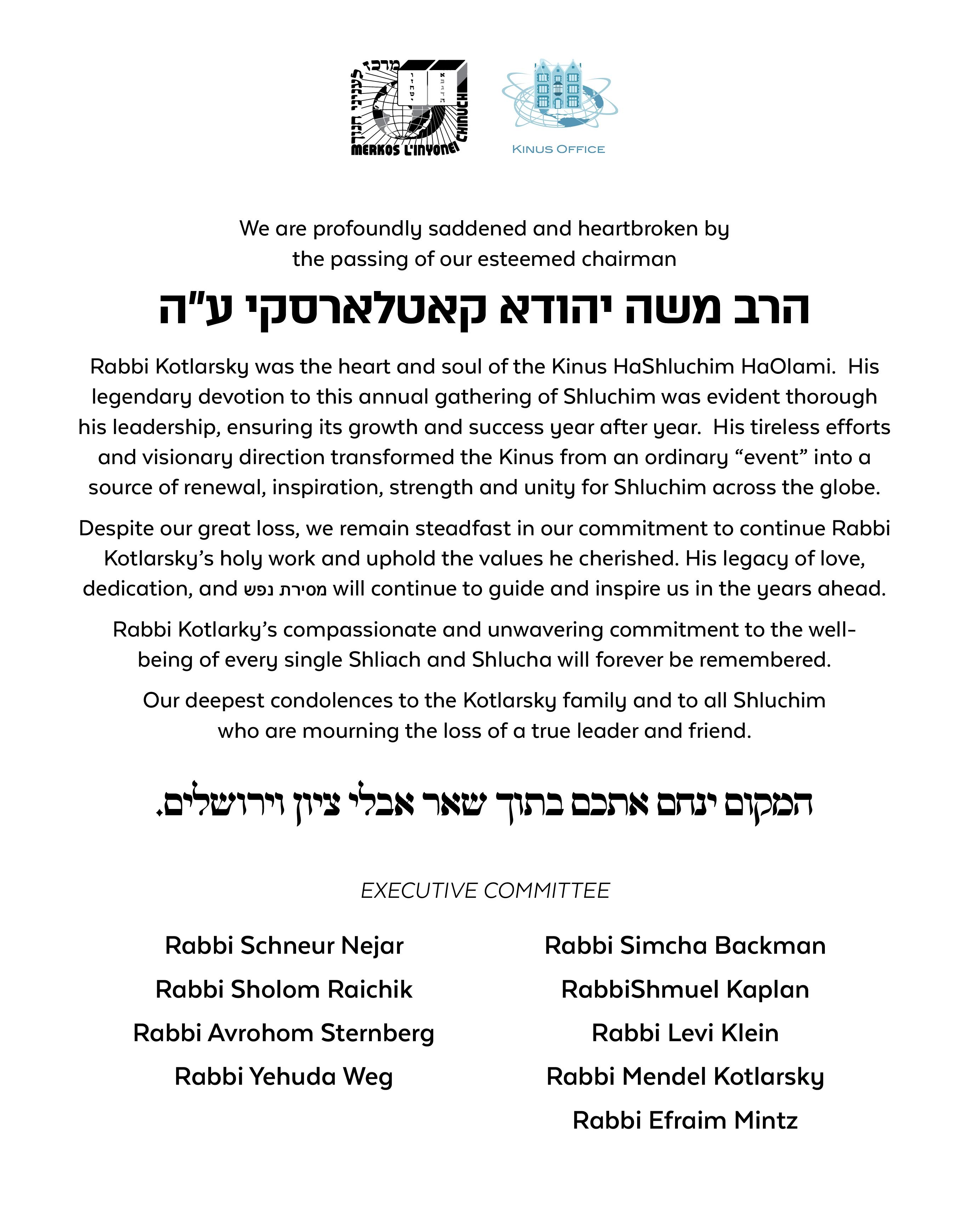
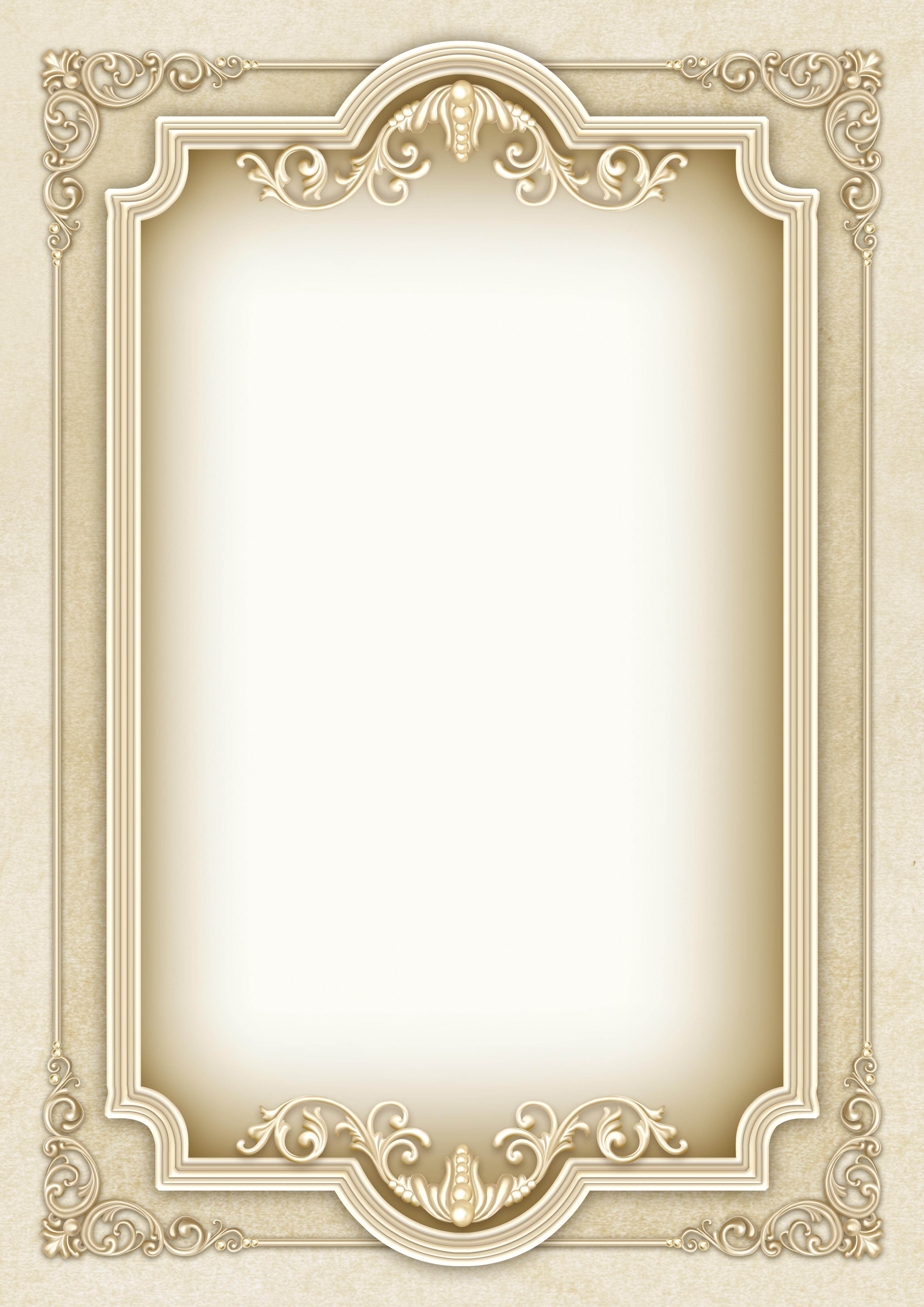




ה"ב תוכב ןול_א םיחולשהו ש"נא דידי אריקיו אבר ארבג יאה תריטפ רחא ד"היב י"עש תורשכה תכרעמל ןמאנ דידיו לבת יבחר לכב שטיוואבויל ינברד תורשכ ינינעל דחוימה ת"הרה ח"הרה ה"ע אדוהי השמ ברה יקסראלטאק ה"ע ףסוי יבצ ר"ב ל"גס יולה אדוהי המלש ברה ןאמרעביל יולה קחצי ןורהא ברה רעדנאלרעבא הילדג ברה ,תע אלל ותריטפ תא הרמ םיכבמ ונא ,םיעיפשמהו םיחולשהו םינברה ,םידיסחה ללכו ,לארשי תיב לכ םע דחי חותיפו ןינבב ע"יז ר"ומדא ק"כ לש השודקה ותוחילשב קוסעל הכזש ,ה"ע יקסראלטאק אדוהי השמ ברה לש .בר חור תחנ םורגלו ,הרידאהלו הרות לידגהל הכזו ,לארשי תונבו ינב יבשומו ירע לכב ,תוחילשה םלוע םיחולשה לש םיכרצה שממ בורקמ הארו ,ולוכ םלועה לכב םינש לבוימ רתוי ךשמב עוסנל הכזש ימ רותבו הנבהו תדחוימ תוביבח ול התיה ,היתשהו הליכאה תורשכ ינינעב דחוימבו ,רתאו רתא לכב יד תוליהקה לשו תודסומו ד"בח יתבה לכל שורדה קפסתש ,ןירדהמה ןמ ןירדהמל תורשכ תכרעמ היהתש ךרוצב תיתימא הנכהה תכאלמ לכ תא קזיחו דדועו ,םיחולשה תוביבס ר"העלב תוחתפתמש תוליהקהו ,ץיקה תונחמו ד"בח .ט"הוקה וניאישנ וניתוברמ ונל הרוסמה יפכ ,שטיוואבויל ינברד תורשכ ינינעל דחוימה ןידה תיב לש המקההו ,ויתולכו וינתח ,ויתונבו וינב לכלו ,'יחת הקבר תרמ ת"בנמ הדובכה ותייערל ,דודיעו םחונ ילגא ונא םיחלושו םילעפמה לכ ךשמהב החלצהו הכרב ואריו ,םבאכל רוזמ ת"ישה םהל חלשי ,הדובכה החפשמה ינב לכו ידע ,הניתנו הריסמב תולילכ םימי שידקה םהלו ,ה"ע בושחה םהיבא עגי םהבו קסע םהב שדוקב םירדאנה .שממ דימו ףכית המילשהו תיתימאה הלואגב ,םכותב אוהו ,רפע ינכוש וננרו וציקה דועיה םויקל הכזנ

Rabbi Moshe Kotlarsky Stood as a Pillar of Support for Shluchim. You Can Too. It Takes Just $1




























 Rabbi Moshe Kotlarsky photographed by Marko Dashev in his office at Lubavitch World Headquarters, 770 Eastern Parkway, August 2019
Rabbi Moshe Kotlarsky photographed by Marko Dashev in his office at Lubavitch World Headquarters, 770 Eastern Parkway, August 2019



















































 Photo: Shmuel Ben Tzvi
Photo: Shmuel Ben Tzvi




















